20 best Mayan ruins in the Yucatan Peninsula, Mexico
This post may contain affiliate links. If you use these links to buy something I may earn a small commission at no extra cost to you! Thank you for your support!
Exploring Mayan pyramids and Mayan ruins in the Yucatan Peninsula, Mexico was one of my favorite adventures we did during our three-month trip around the peninsula. From the world-famous Chichen Itza to secret temples in the jungle, I loved all of them!
Visiting Mayan ruins is one of the bucket list things to do when visiting any of the famous holiday destinations in Mexico’s Yucatan. Be it Tulum, Cancun, or Playa del Carmen, you must day trip to some of those ancient Mayan cities in the jungle!
In this blog post, you will find all the best Mayan ruins in the Yucatan peninsula, Mexico with descriptions, photos, and locations on the map. And, YES, we actually visited ALL of them ourselves! I’m a fan, haha! Happy travels!
Read more » 15 must-try traditional foods in the Yucatan Peninsula, Mexico
1. Chichén Itzá Archaeological Zone
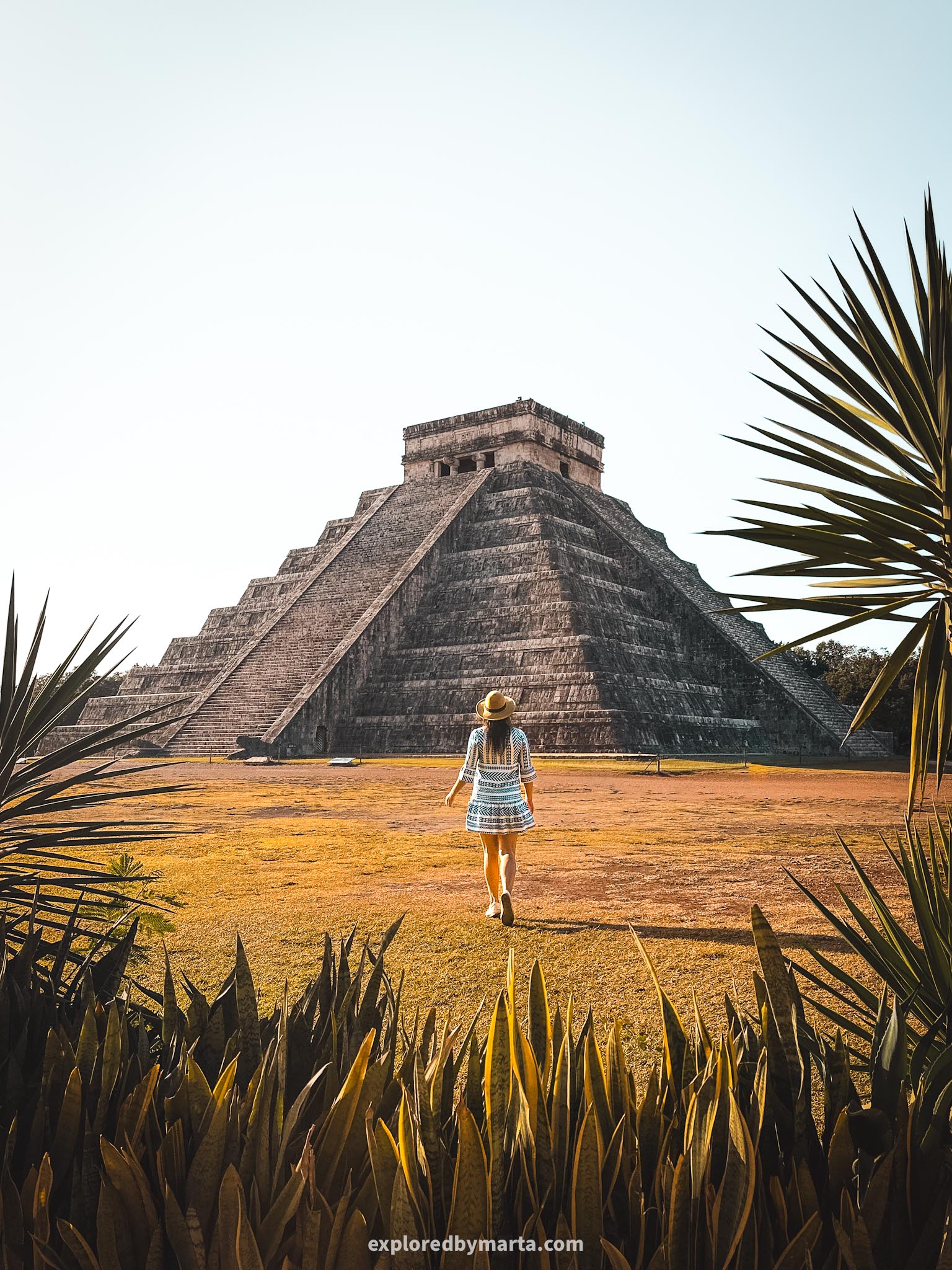
Chichen Itzá is the most famous Mayan site in Yucatán and one of the most visited places in Mexico. A place that must be on your Yucatan itinerary! It was declared a UNESCO World Heritage Site and voted among the New 7 Wonders of the World.
Historically it was one of the largest Mayan cities dating back to 600 AC. It existed as a major regional center for many centuries until its decline by the 12th century. It still operated until the Spanish conquistadors arrived in the 16th century.
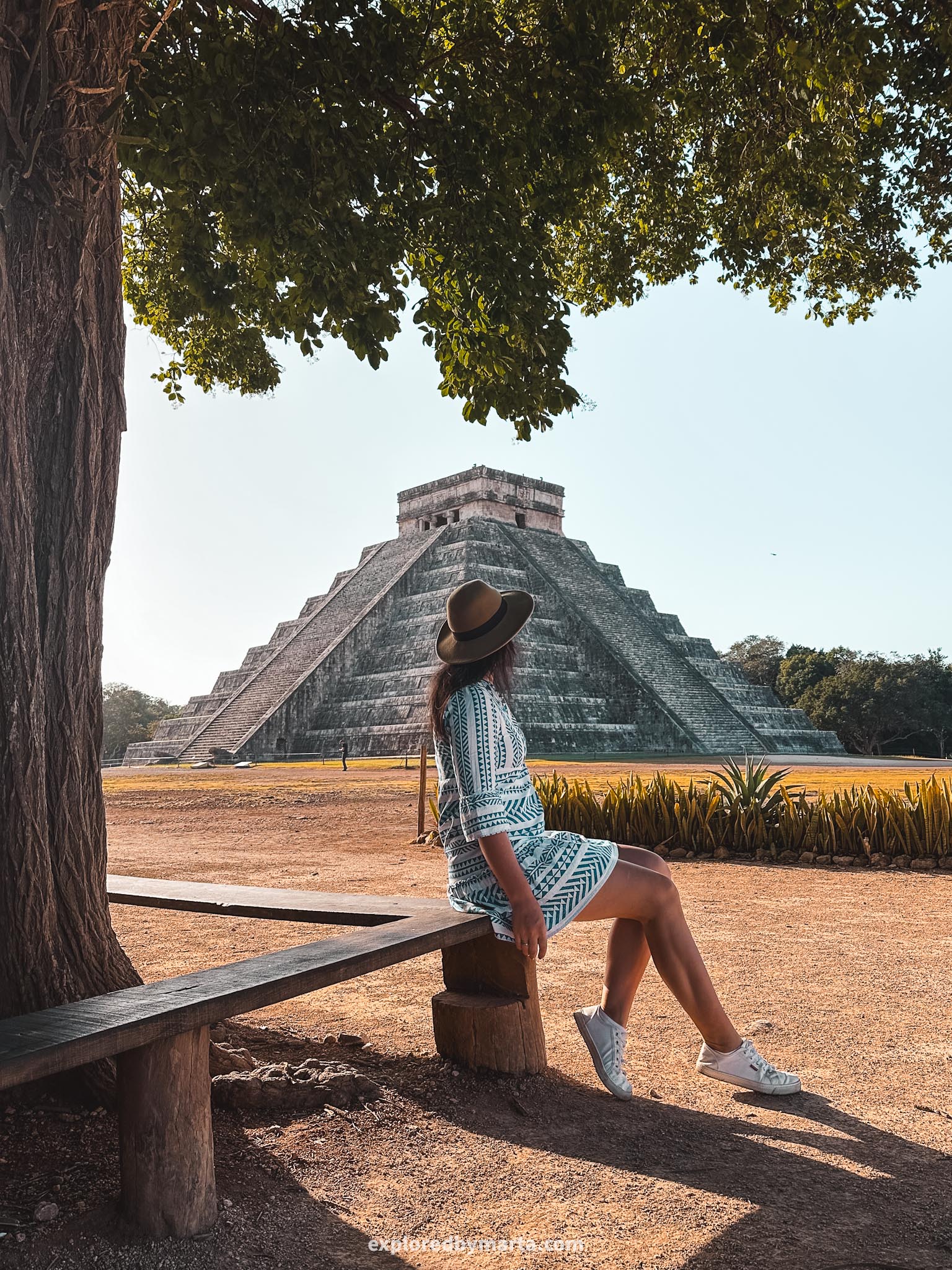
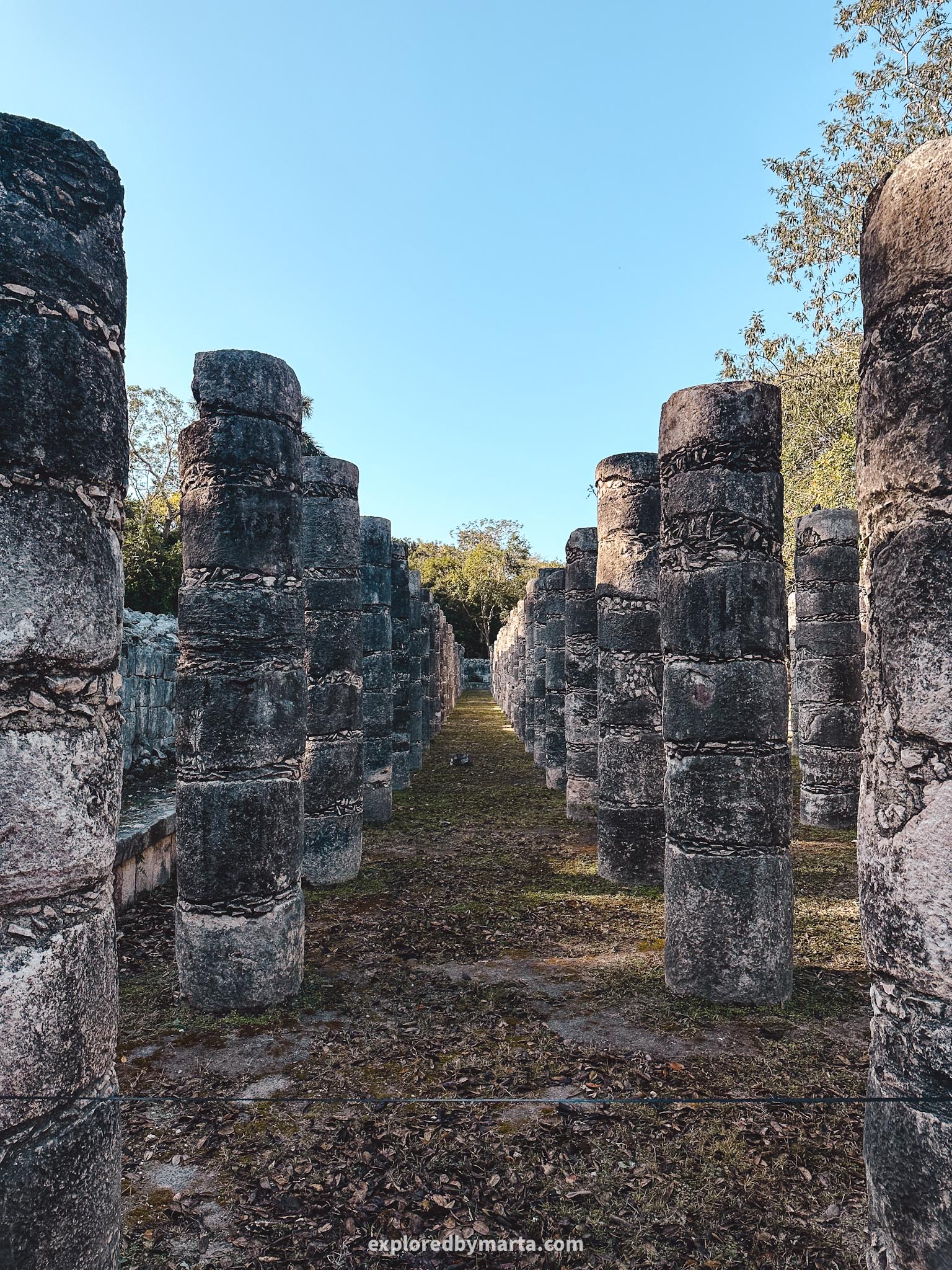
Chichén Itzá archaeological zone consists of multiple temples, pyramids, structures, and even a sacred cenote (cenote sagrado) where Mayans deposited valuables and gifts including human sacrifices as a form of sacrifice to their rain god Chaac.
The most famous structure is, of course, the great El Castillo pyramid (the castle) which is also known as the Temple of Kukulcan. The pyramid with the temple on top of it is 30 meters high and was built sometime between the 8th and 12th centuries.
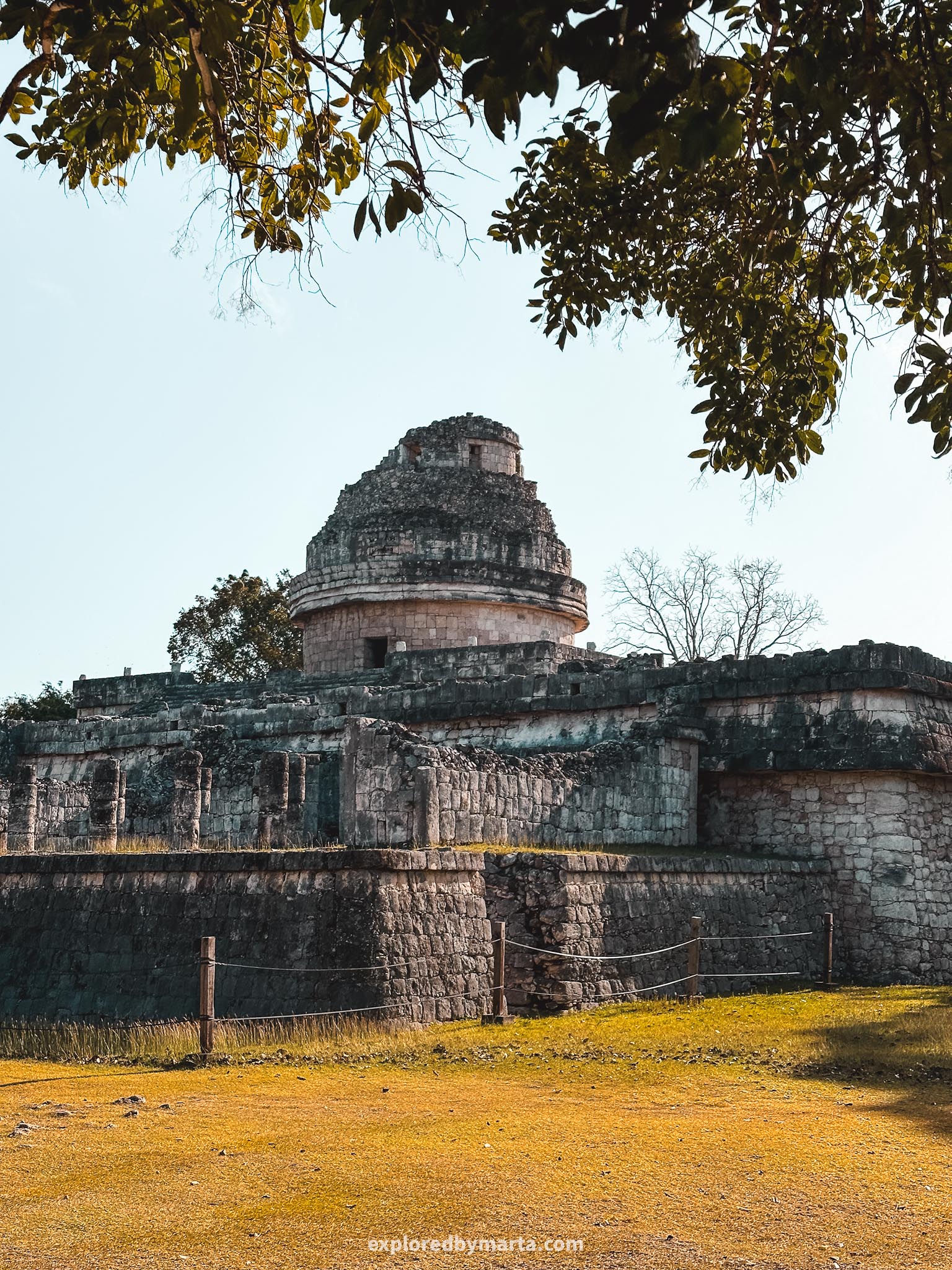
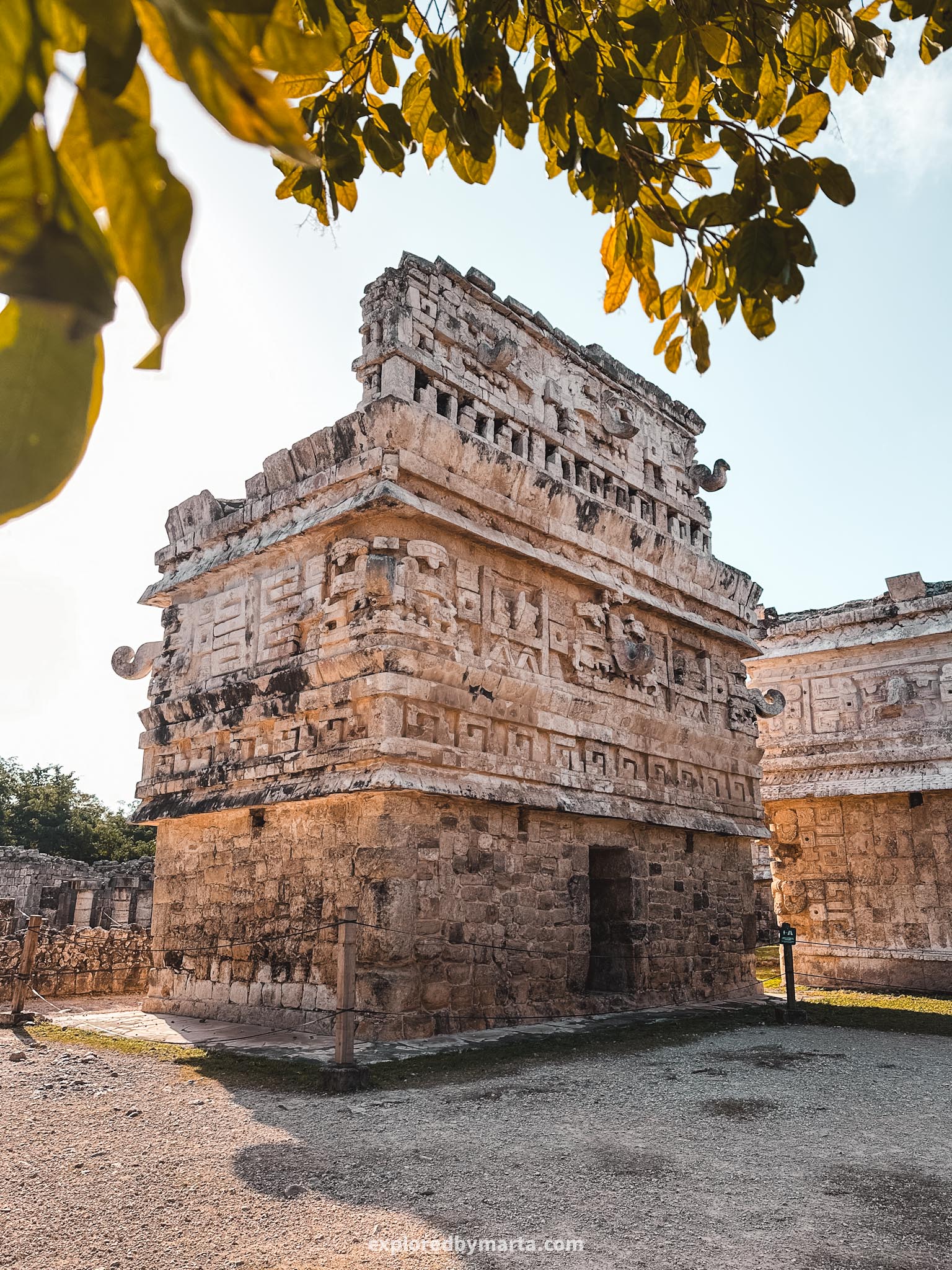
Interestingly, when you clap your hands in front of the staircase of the pyramid, the echo of the sound mimics the voice of the quetzal bird. The same effect happens at another large pyramid in the Yucatán Peninsula – Uxmal.
Besides the Chichen Itza pyramid, other structures nearby include the Temple of the Warriors with a group of a thousand columns around it, the Temple of the Great Tables, the Ballcourt, and the Eagles and Jaguars platform.
A little bit further away you will find one of my favorite buildings – El Caracol (the snail) which is a Mayan observatory dating back to the 10th century. Next to it, there is a building complex – Las Monjas – boasting an extravagant Puuc architectural style.
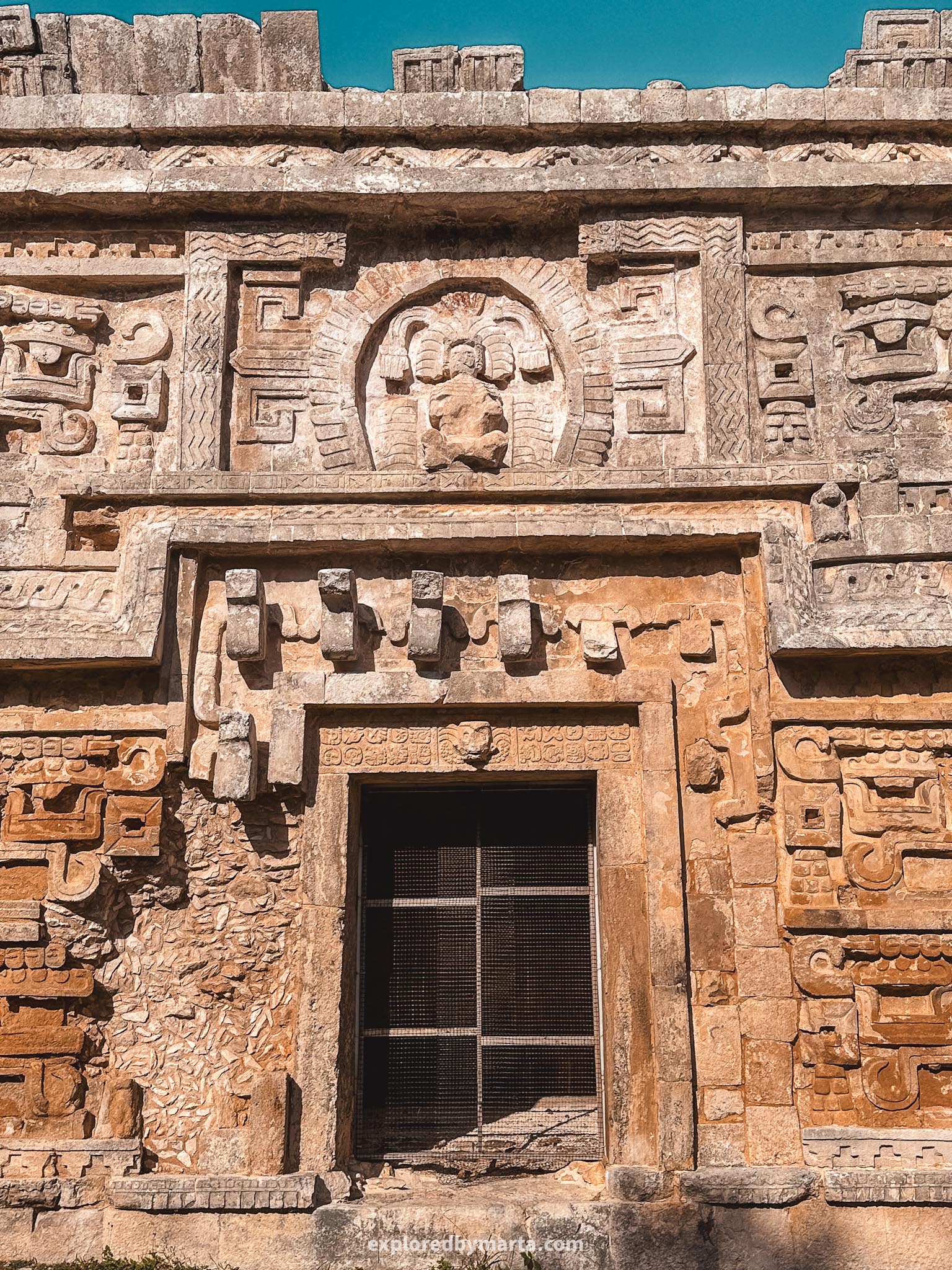
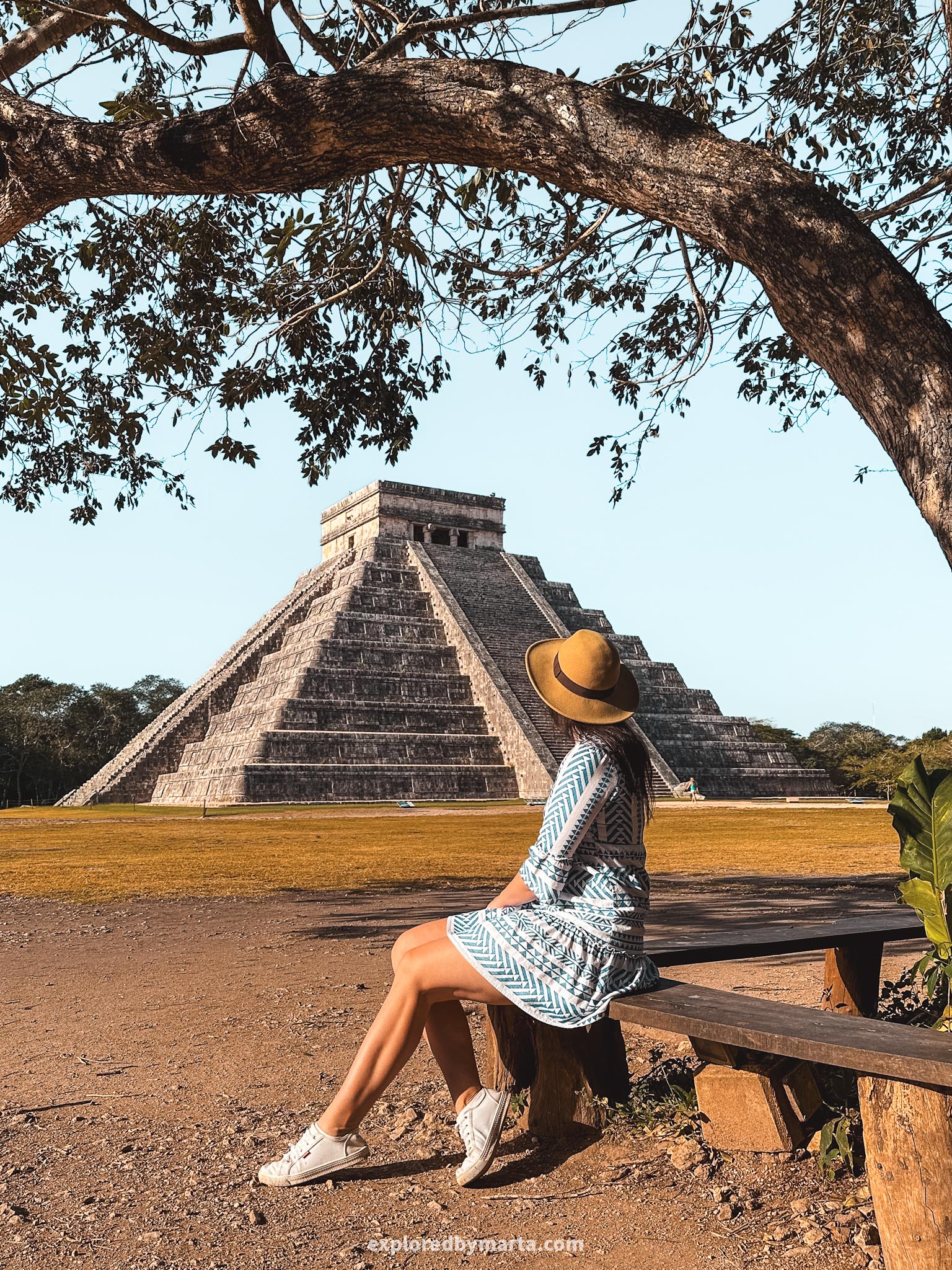
Visiting the Chichen Itza pyramid site is one of the bucket list things to do in the Yucatán Peninsula, Mexico. And, obviously, this place gets super crowded so I recommend arriving first thing in the morning.
The site opens at 8 AM, the parking next to the entrance opens at 7:30 AM. We arrived even before that so that we could be amongst the first ones in. At 8 AM there was already a long line of people so it is best if you have a car and can arrive early.
For parking, we paid more than 100 pesos (in cash) but for the entrance fee (by card) we paid more than a staggering 620 pesos each. If you want, you can hire a guide on the spot (extra fee) who will tell you the history and take you all around the site.
Location: Chichén Itzá
2. Uxmal Archaeological Zone
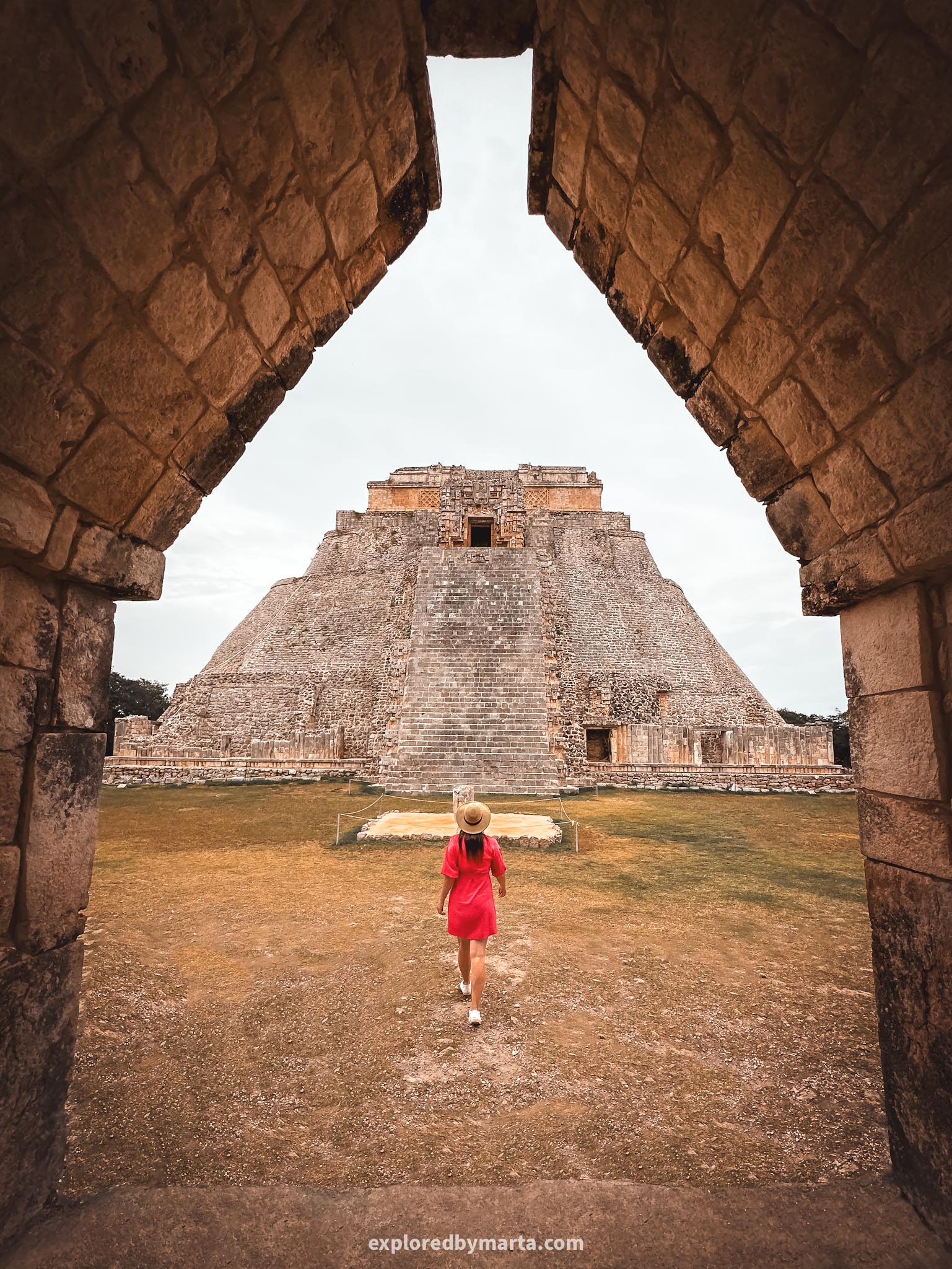
Uxmal archaeological zone dating back to the 10th-11th centuries is one of the most famous Mayan ruins near Merida and in Mexico. It is most known for its 40-meter-high Pyramid of the Magician – the main pyramid in the Uxmal Mayan ruins.
Not visiting Uxmal is like traveling to Cancun and not going to the beach. So we rented a car and visited Uxmal on a day trip during our three-week stay in the city of Merida.
Uxmal is undoubtedly one of the most impressive Mayan ruins in the state of Yucatan, Mexico. The whole archaeological zone is listed as a UNESCO World Heritage Site due to its significance.

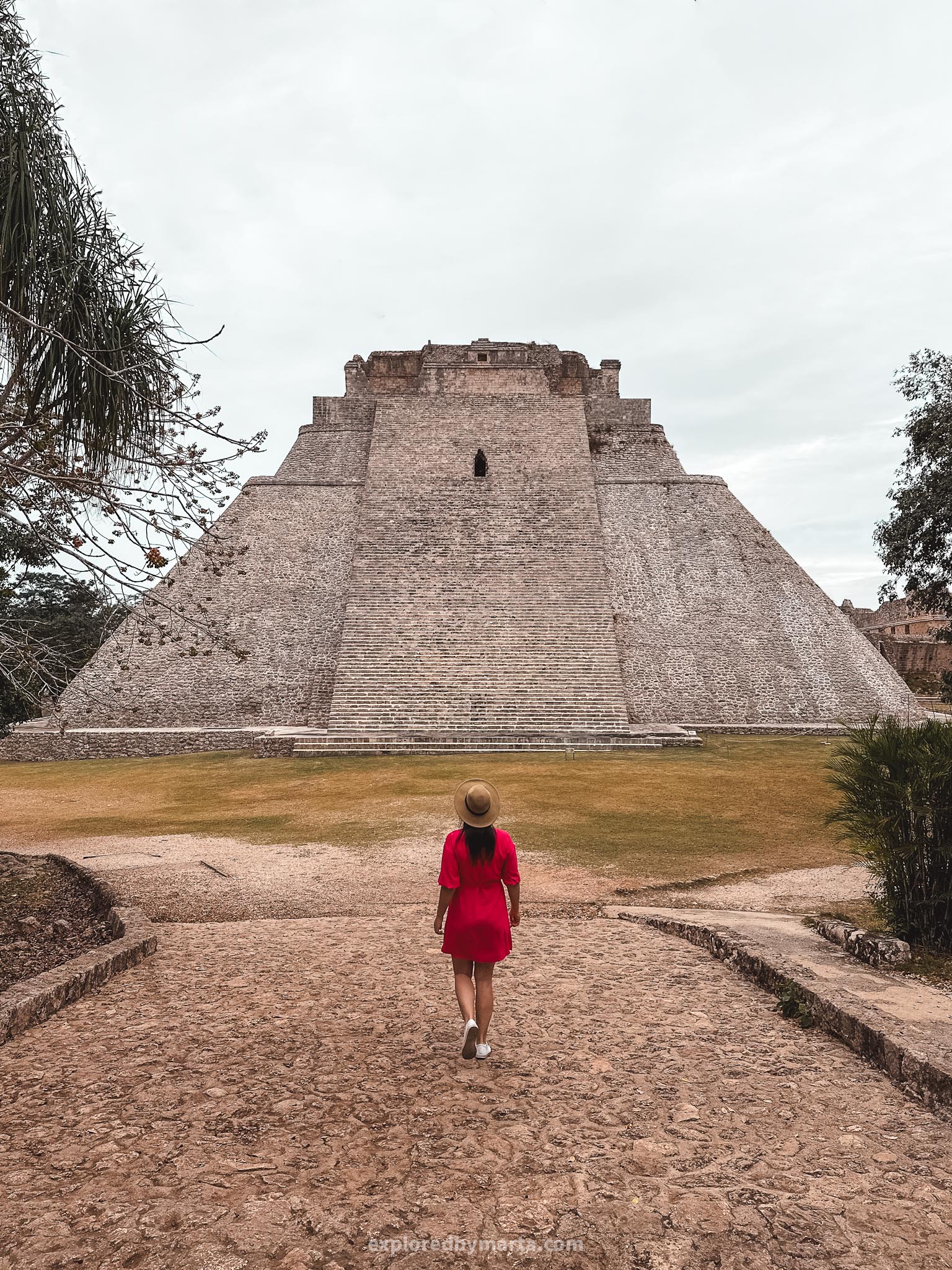
The Pyramid of the Magician is the most famous structure in Uxmal. The legend says that the pyramid was built in one night however there are various versions of who actually built it – a dwarf, a magician, or somebody else.
The pyramid has a unique feature – if you clap your hands in front of the pyramid the structure creates an echo of the clap that sounds like quetzal – a strikingly beautiful and colorful bird that is sacred to Mayan people. Such a unique experience!
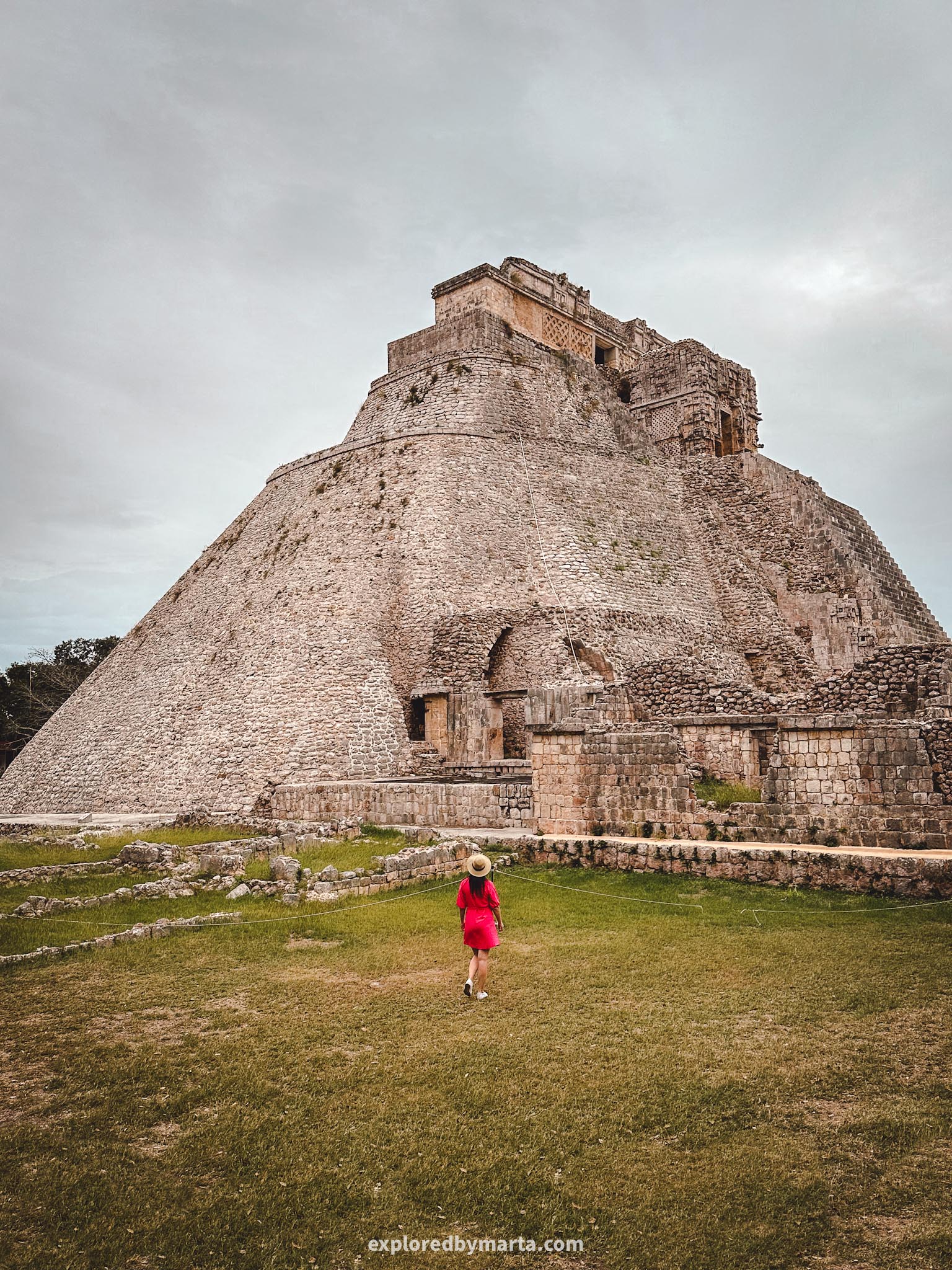
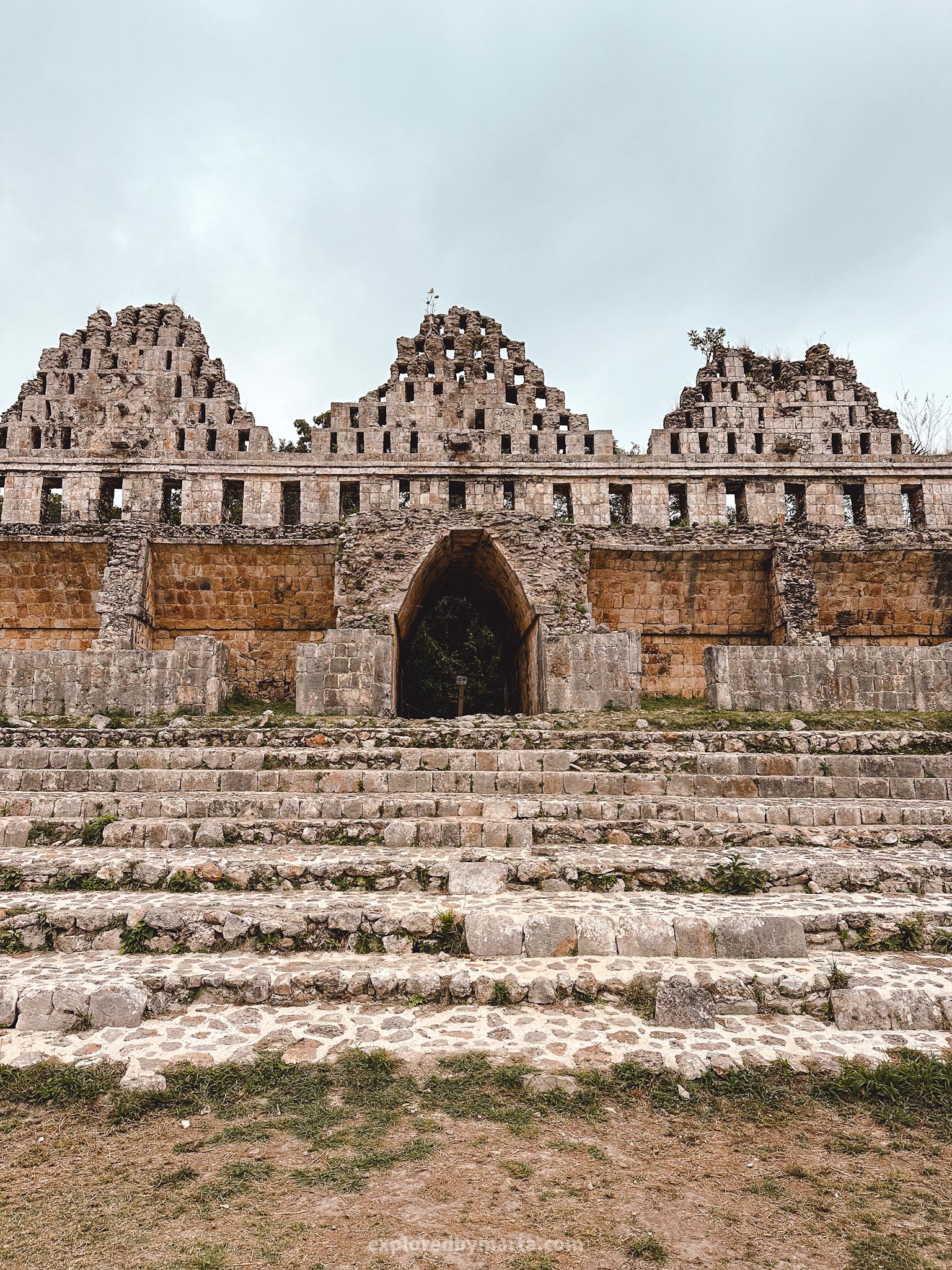
By the way, the best place to take a photo of the pyramid and observe it closer is from behind it. There is a large square called Cuadrangulo de los Pajaros or Bird Quadrangle that is surrounded by buildings and walls. This is where the first photo was taken.
Uxmal at its peak was a city of 25 thousand people so the pyramid is not the only impressive building here. Definitely check out The Governor’s Palace located on a hill, Casa de las Palomas as well as the Nunnery Quadrangle.
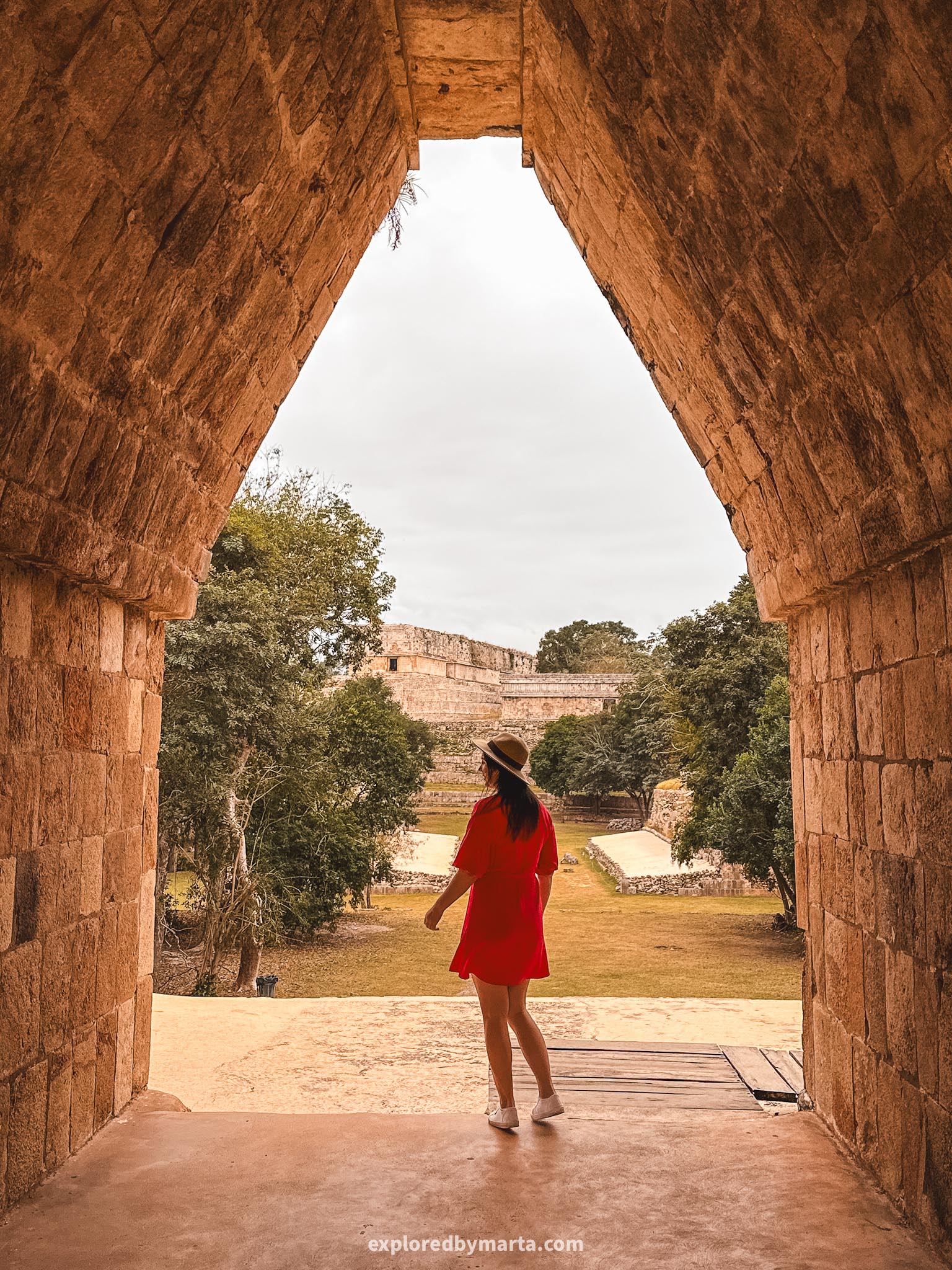
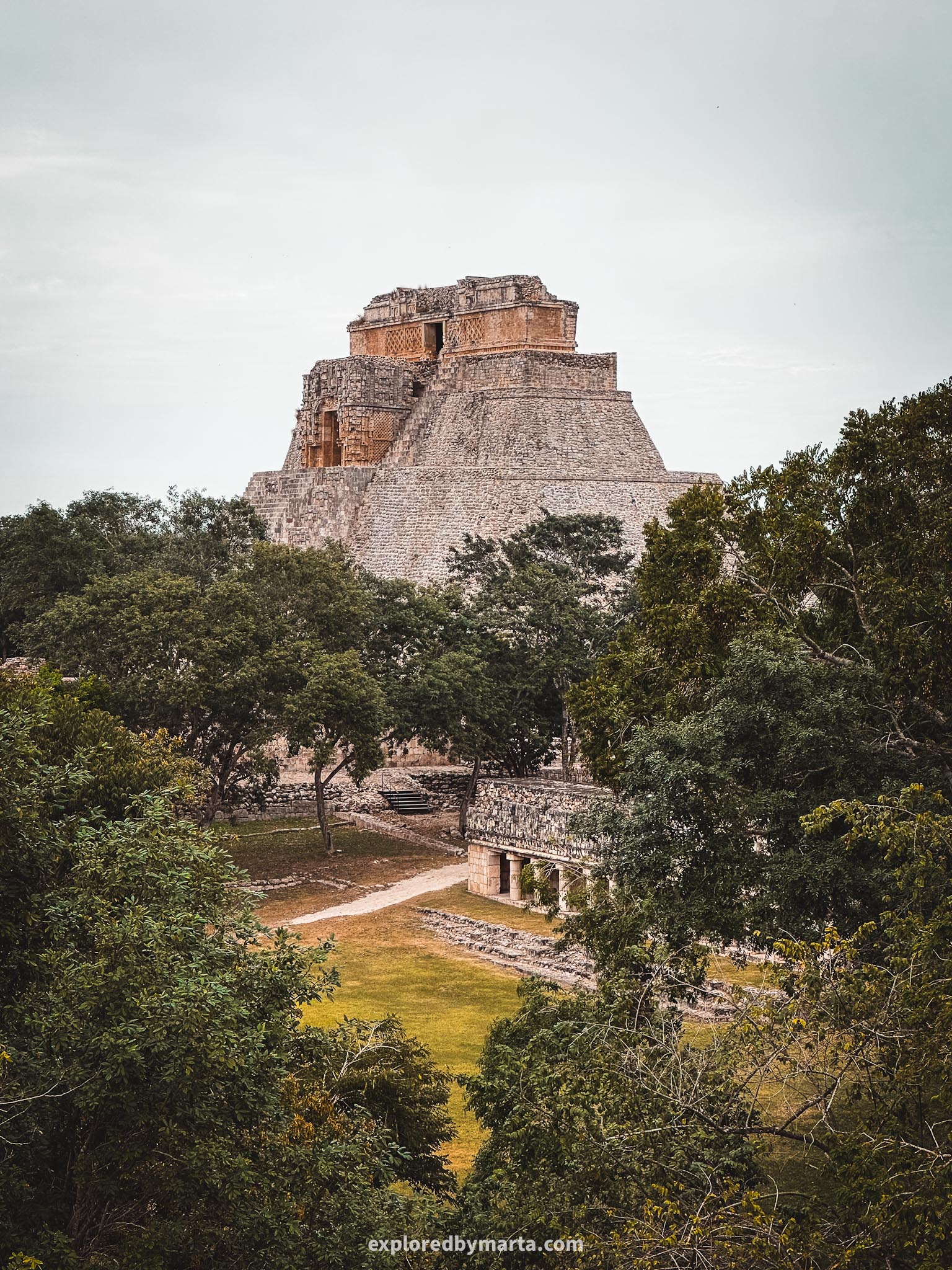
The Nunnery Quadrangle has no connection to nuns. It is a courtyard surrounded by four palaces. When the Spanish conquistadors came they thought it looked like a convent thus the name. It is the best spot to observe the unique Mayan architecture.
Despite the high prices (we paid 530 pesos each), I loved exploring Uxmal and all the historic buildings. I can see why some prefer this place instead of the overcrowded Chichen Itza. I couldn’t choose between the two. I would visit both if I were you!
Did you know? Uxmal ruins are part of the Ruta Puuc route – a group of 5 nearby ancient Mayan cities you can visit in one day. See #12 to #15 on this list!
Location: Uxmal Archaeological Zone
3. Ek Balam Archaeological Zone
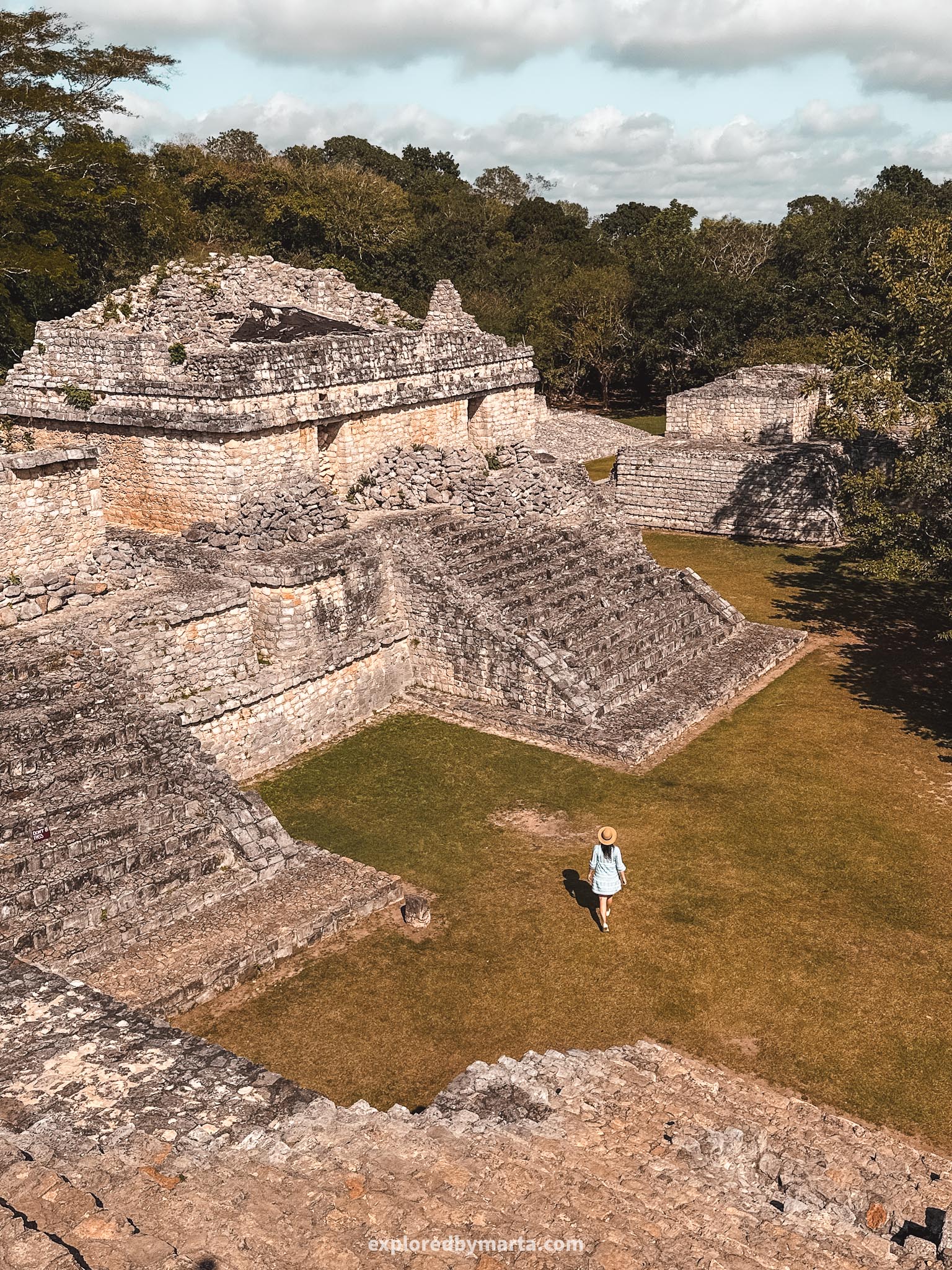
Ek Balam Mayan ruins is one of the most important sites in Mexico’s Yucatán Peninsula. Let’s start with the best part about it – you can climb the Mayan ruins and pyramids! Not all of them but enough to enjoy amazing views over the Yucatan jungle.
Them allowing us to climb the pyramids kind of offsets the massive entrance fee – we paid 550 pesos each plus 100 pesos for parking. Theoretically, you can pay by card (entrance fees) but because of the bad network, we ended up paying in cash.
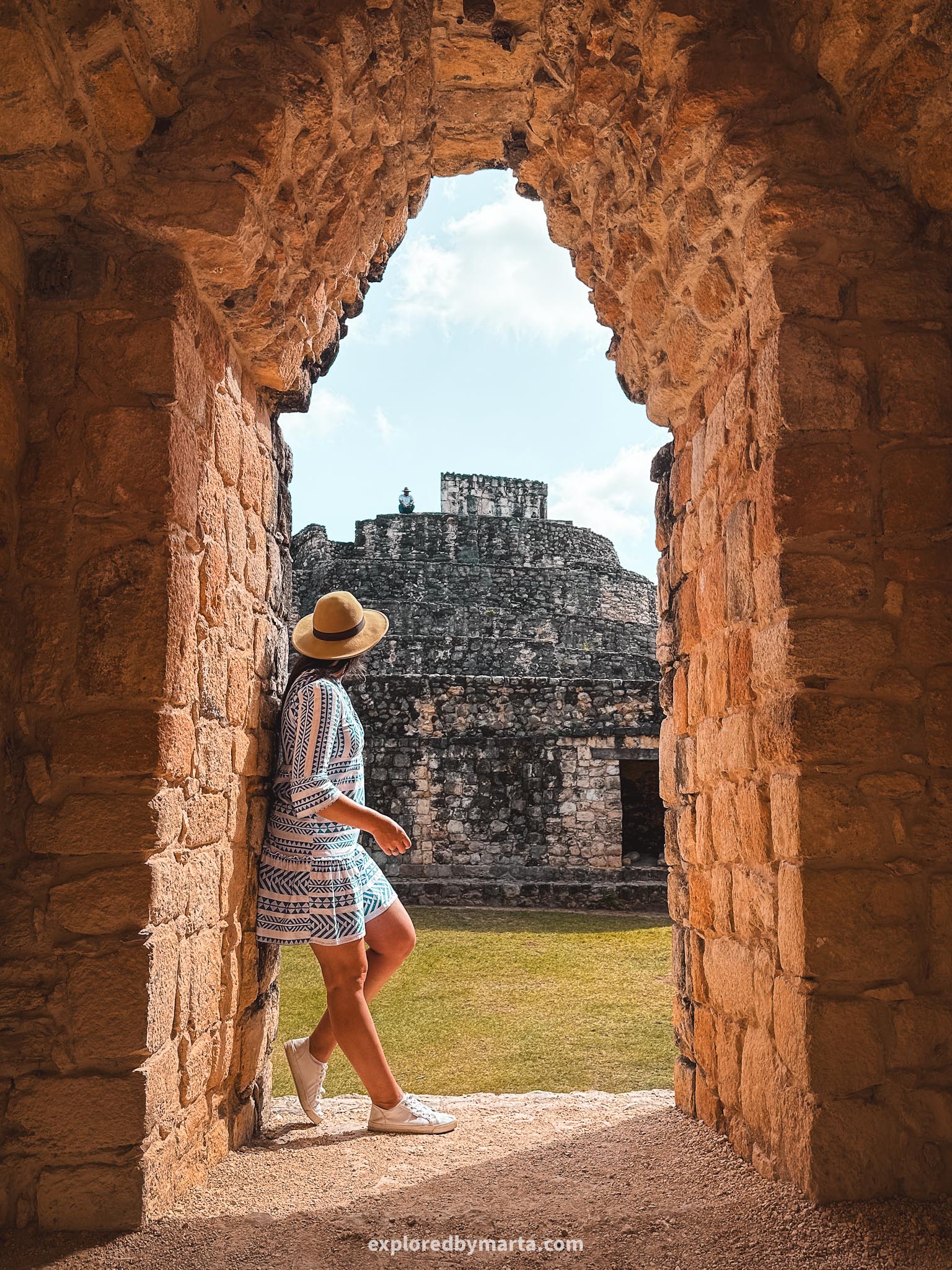

Ek Balam is located a 30-minute drive from Valladolid and a 2-hour drive from Cancun. The name Ek Balam translates as the black jaguar or the jaguar star in the Yucatecan Mayan language. That’s why you will see many black jaguar souvenirs on the site.
Ek Balam site features multiple impressive buildings and pyramids. The largest structure in Ek Balam is the Acropolis. It is like a temple pyramid with a staircase in the middle where you can climb up to the top to see incredible views over the jungle.


To both sides of the central staircase, you can find entrances to temples decorated with stone carvings and mosaics. They are believed to be burial places for Ek Balam rulers. One of the entrances depicts an open mouth of a jaguar (photo above).
Other notable structures in Ek Balam include the Oval Palace (you can climb it), the Entrance Arch, The Twins, or two lookalike temples, as well as the Ballcourt. Ek Balam was a booming city during the 8th and 9th centuries.

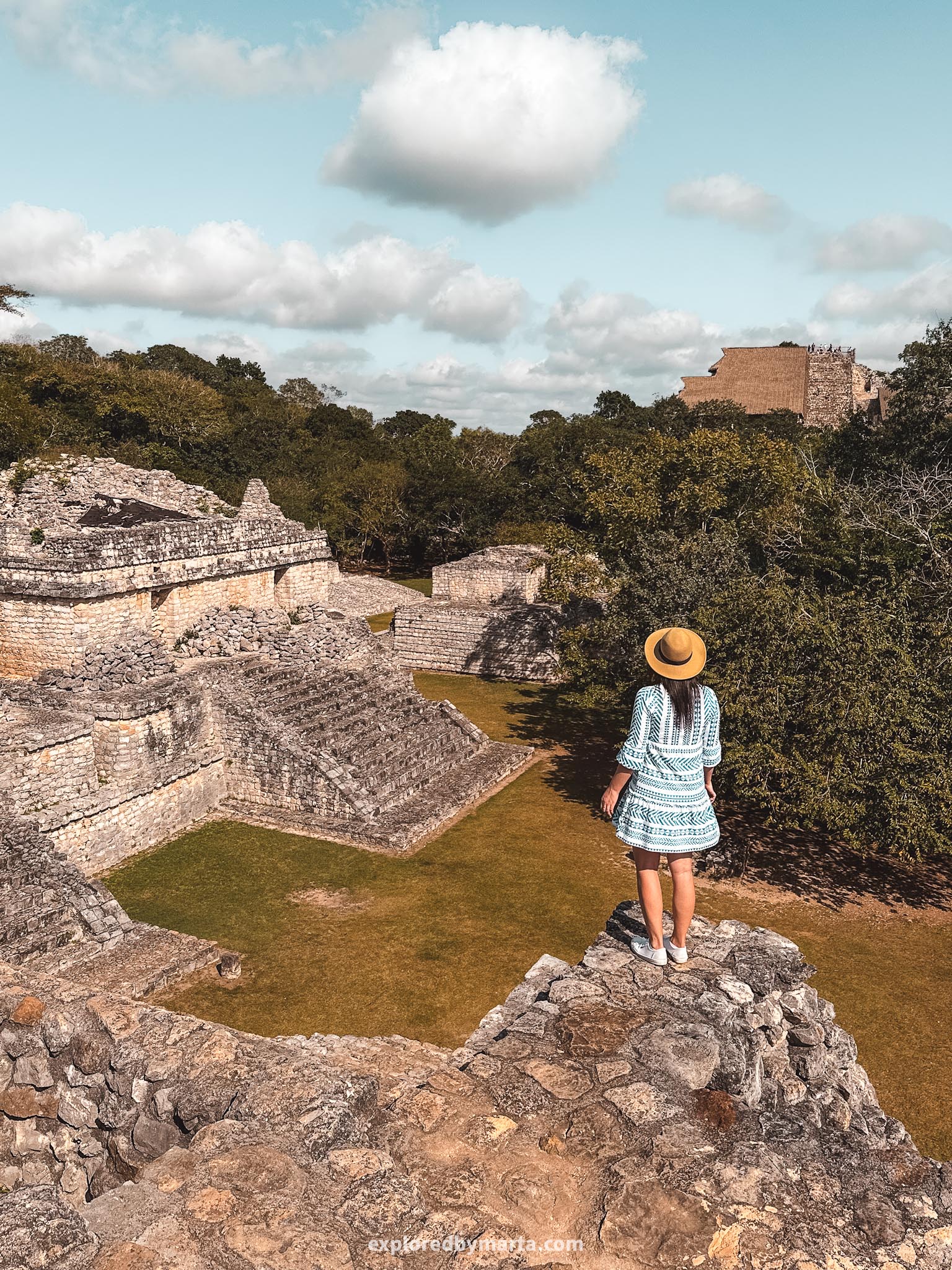
Overall I liked exploring Ek Balam. These weren’t my favorite Mayan ruins mostly because of the inflated entrance fee but I also don’t regret coming here. It is always cool to explore how the Mayan civilization lived before the Spanish found them.
Ek Balam is not the only place where you can climb Mayan pyramids. Read along to see more places where you can explore some of the Yucatán ruins up close, including climbing up to the top of some of those iconic pyramids!
Location: Archaeological Zone of Ek Balam
4. Coba Archaeological Zone
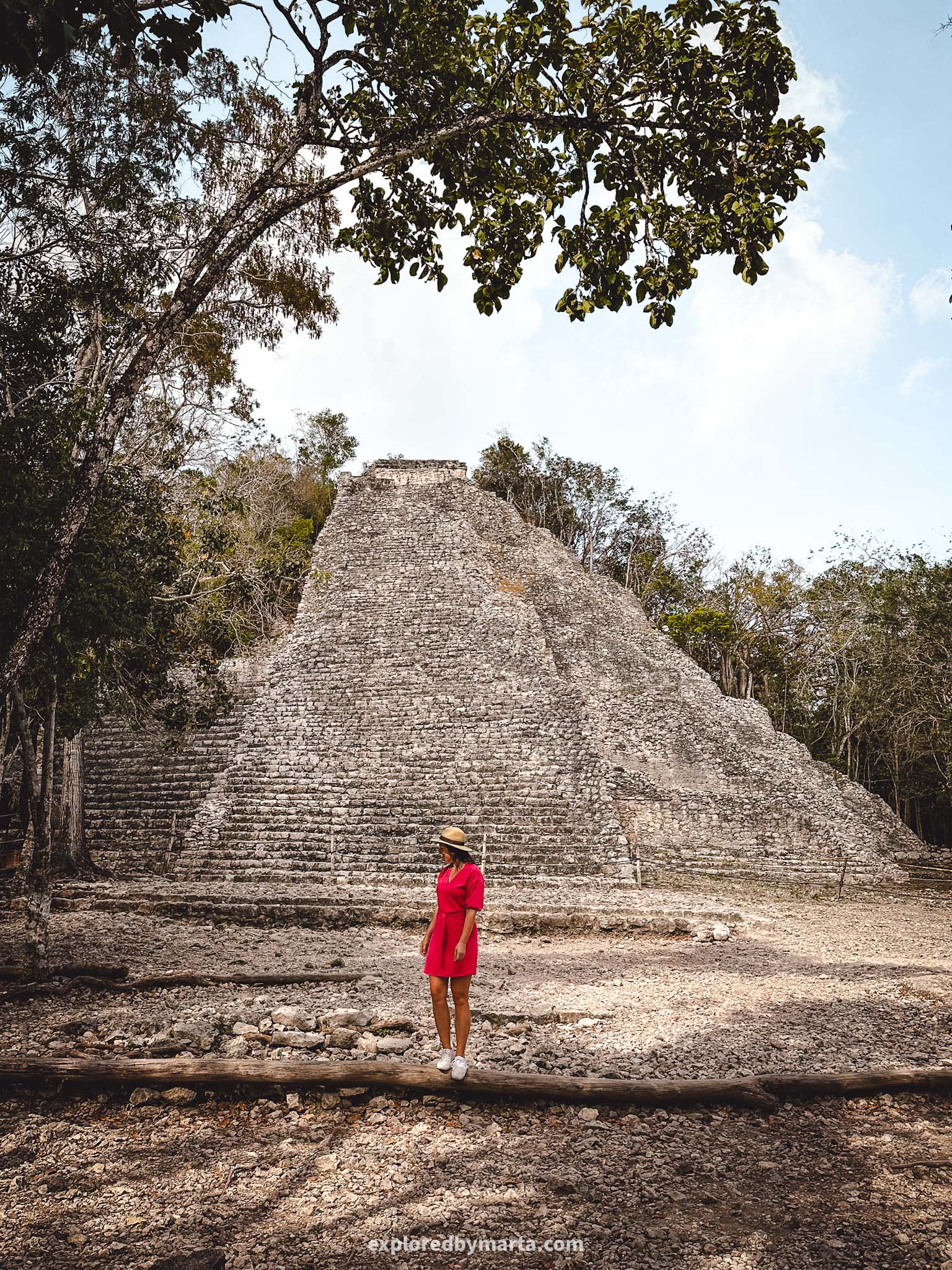

There are some more majestic Mayan ruins in Yucatan – Coba Archaeological Zone. The spectacular ruins are located just a 50-minute drive from Tulum and Valladolid, and a 1h30min drive from Playa del Carmen.
Coba ruins once were one of the most important ancient Mayan cities in the area. The archaeological site boasts multiple stone pyramids, temples, and other important structures. Those iconic pyramids are the best photo spots around here!
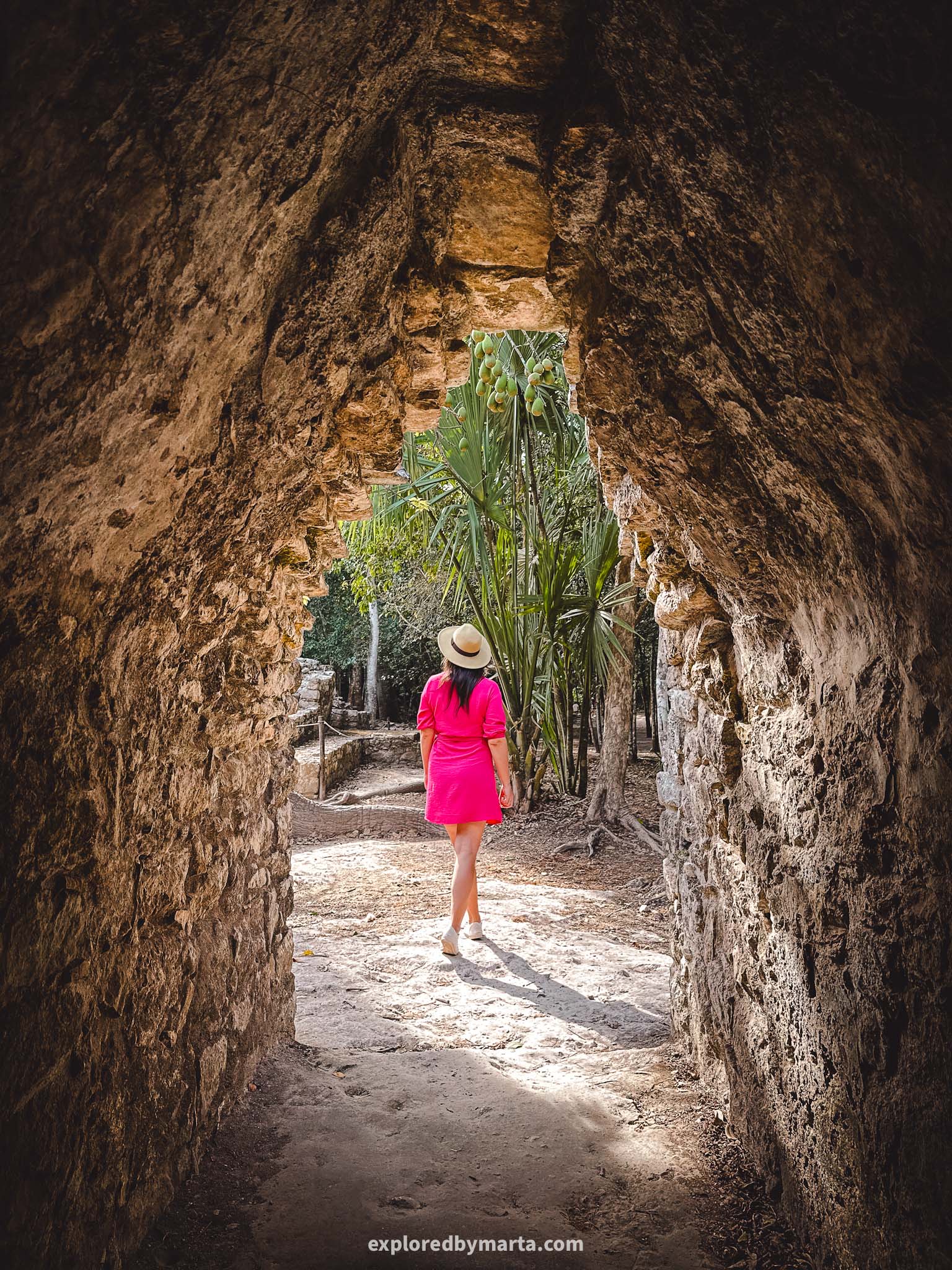

Entrance to the site is paid in different parts – parking and two different entrance fees, so don’t forget to bring some cash with you. All the buildings are pretty much scattered around the jungle so you can rent a bike there (we walked, it was ~5 kilometers).
One of the most impressive buildings is the temple pyramid Nohoch Mul. At 42 meters (137 feet) it is one of the highest Mayan structures in the Yucatán Peninsula. Only Calakmul in the State of Campeche is higher than the Coba pyramid.
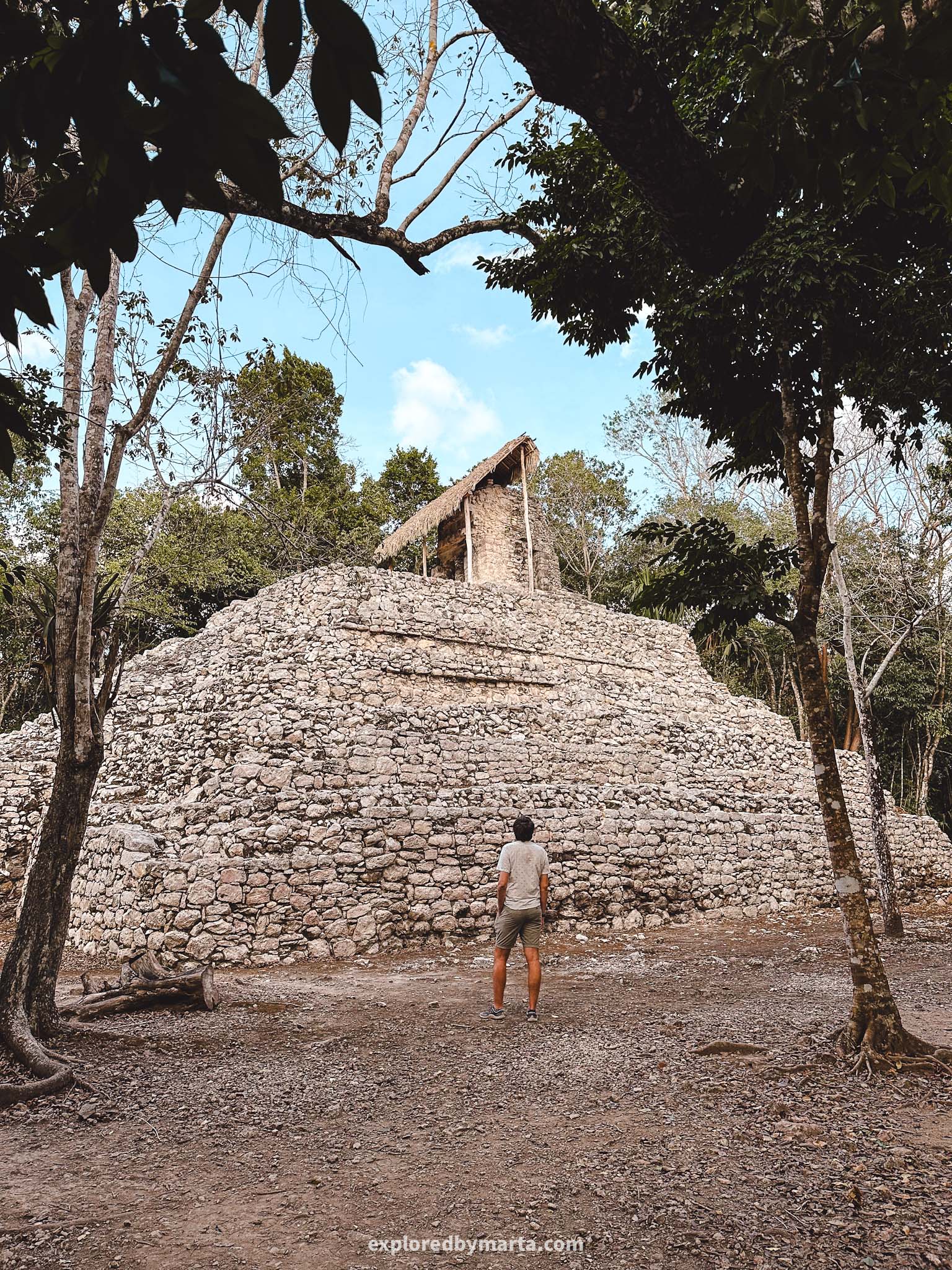
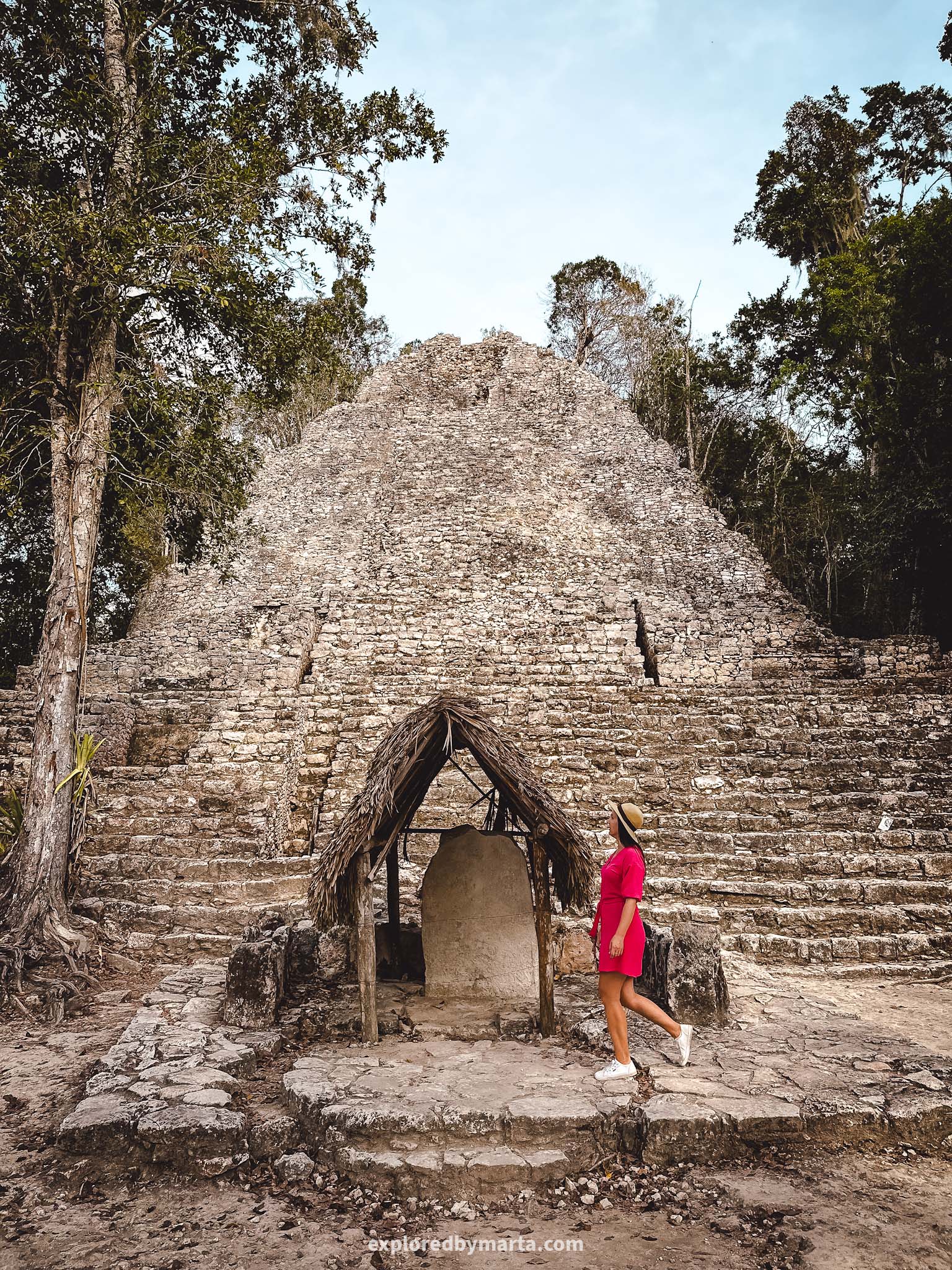
Most of the structures in Coba date back to the 7th-10th centuries. Coba once was a large center of the Mayan civilization reaching 50 thousand inhabitants but was already abandoned by the 16th century during the Spanish conquest.
A couple of years ago it was possible to climb the pyramid in Coba, but not anymore. Nevertheless, the place still has its charm and I wasn’t too sad about it. It was fun walking the narrow paths through the jungle and finding Mayan ruins along the way!
Location: Coba Archaeological Zone – Parking lot
5. Chacchoben Archaeological Zone
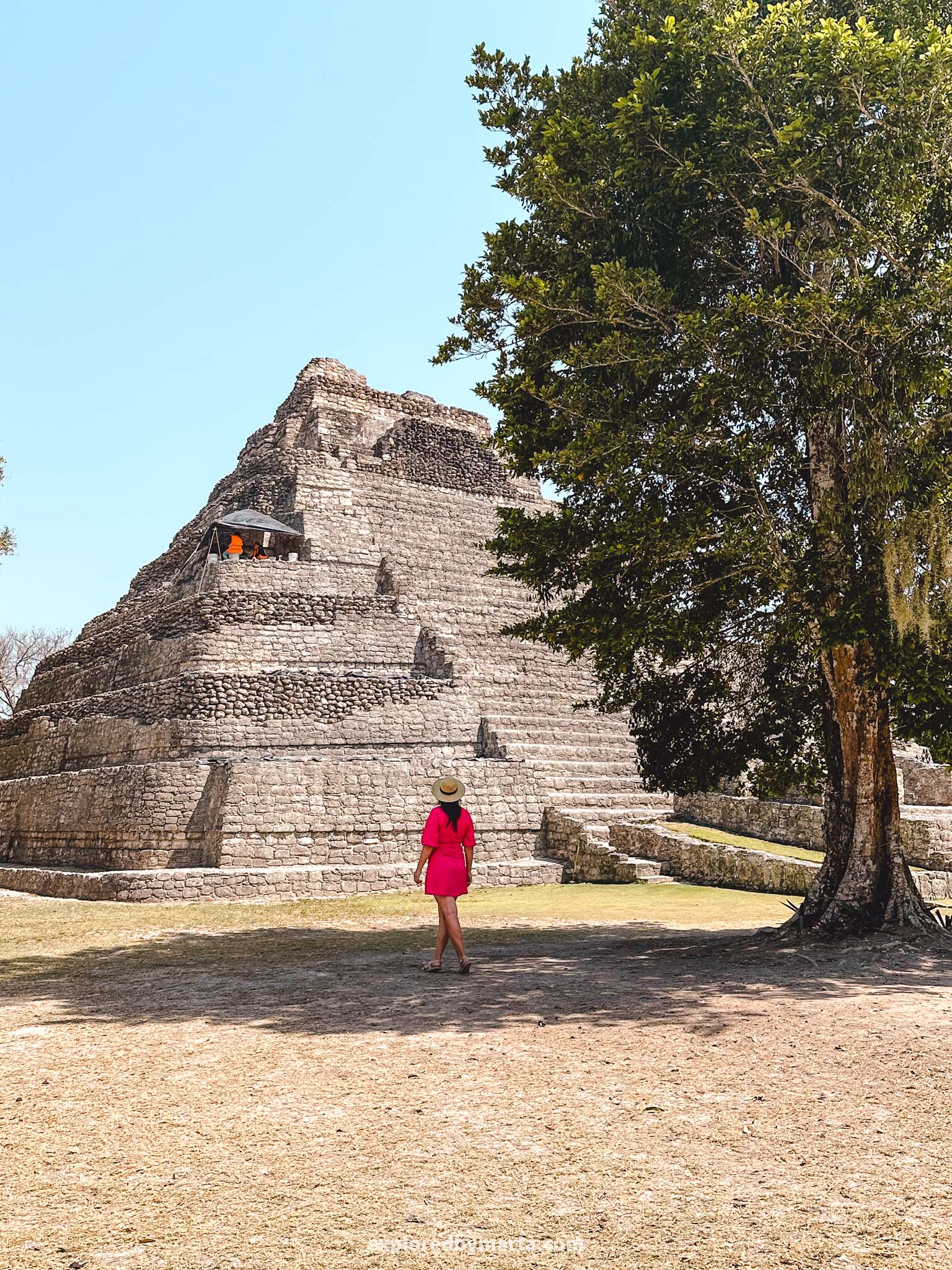
Located just a 30-minute drive from Bacalar and a 2h 20min drive from Tulum is one of my all-time favorite archaeological zones in the Yucatan Peninsula – Chacchoben Archaeological Zone!
Chacchoben Archaeological Zone is a hidden gem in the Yucatan Peninsula as it is situated off the main tourist hotspots. And it somehow makes it extra unique! We visited Chacchoben during our weekend trip from Tulum to Bacalar.
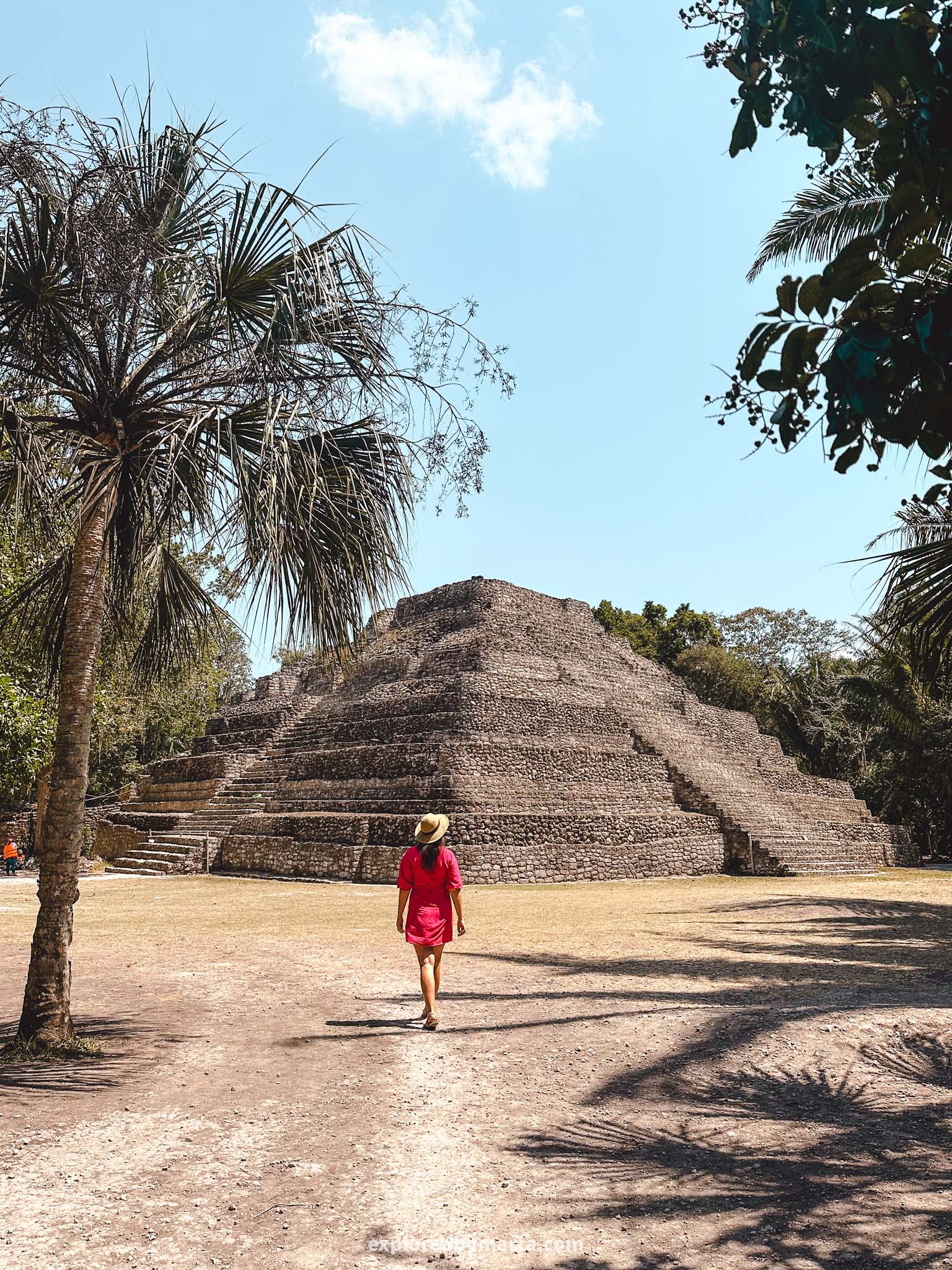
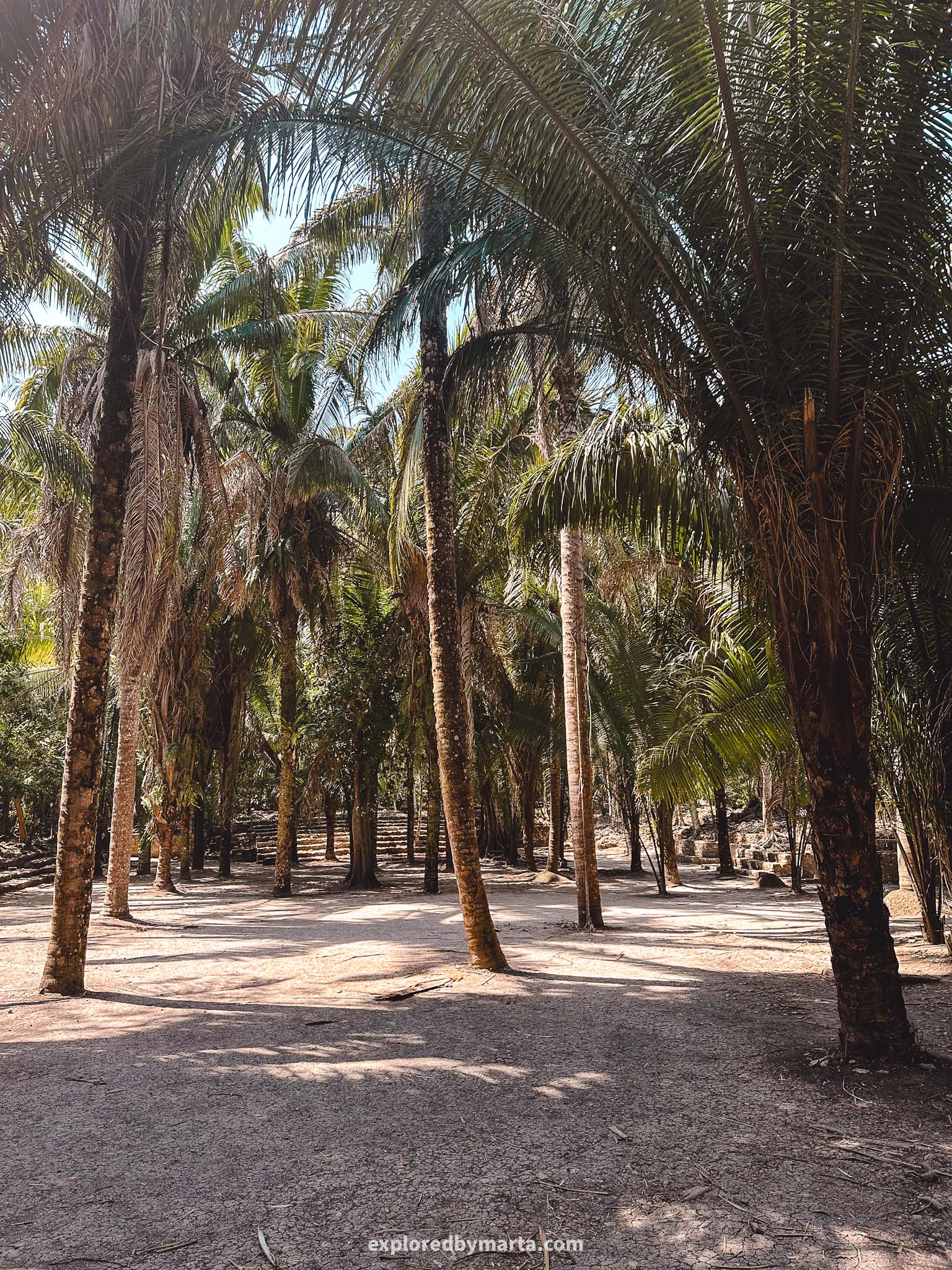
Chacchoben signifies ‘the place of red corn’ and first was settled by the Mayans around 200 BC but most of the structures here date back to the 7th-8th centuries. The site proudly boasts three large pyramids and many impressive temples.
Chacchoben once was the largest Mayan city in the area known as the ‘Region of the Lakes’. When we visited it was completely empty apart from archaeologists still working on restoration. But it gets plenty of visitors when the cruise ships arrive.
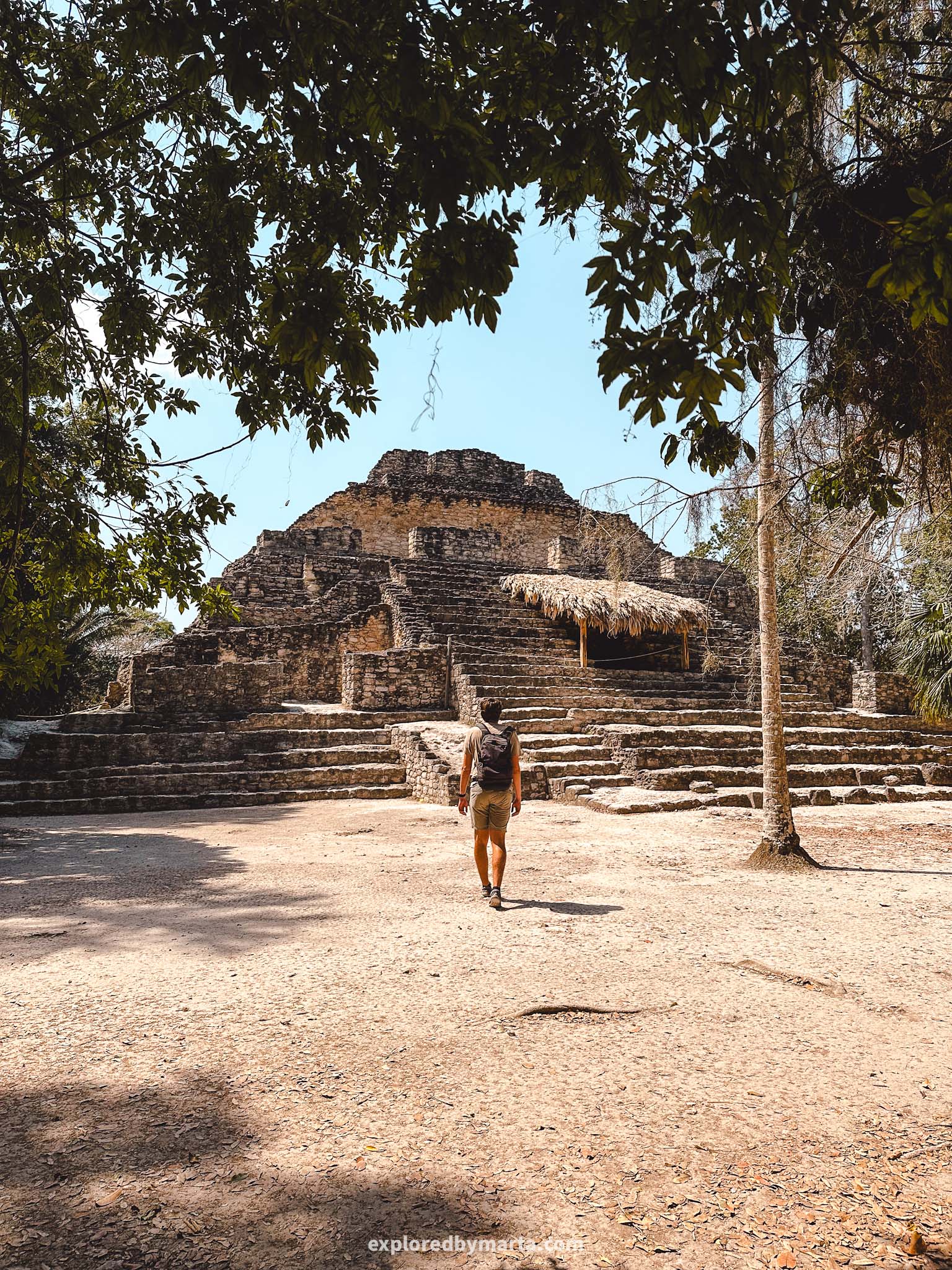
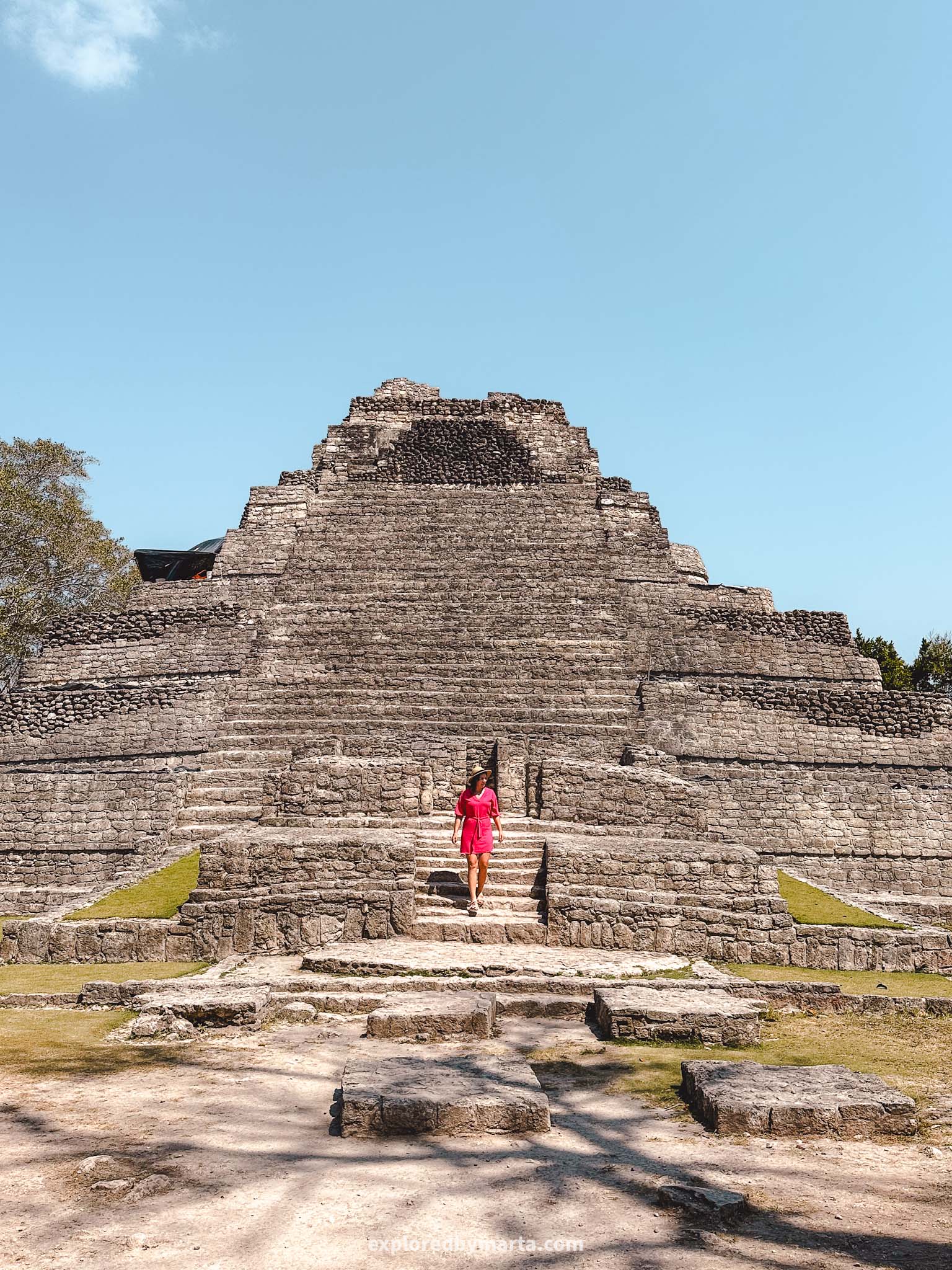
Entrance to the site was 80 pesos per person and we also had to pay some for parking (no idea if that was official – better just give some 50 pesos to be safe, haha!). We were also offered a guide but we managed with a map and the Internet.
As you walk in the Mayan site you will soon stumble upon the first large pyramid. However, it is a place full of secrets. You have to follow paths through the deep jungle and climb up a staircase to discover the real gems – two more massive pyramids.
You can’t climb any of the pyramids. Some archaeologists and workers were still doing restoration and maintenance when we visited. If you drive from Tulum, don’t access the site from Chacchoben village – there was a collapsed bridge with a horrible detour.
Location: Chacchoben Archaeological Zone
6. Muyil Archaeological Zone

Located just a 20-minute drive from Tulum and a 1-hour drive from Playa del Carmen is a wonderful Mayan site – Muyil Archaeological Zone. Although the ancient Mayan city is not among the biggest sites, it is among the most unique ones!
Firstly, this is one of the longest-inhabited ancient Mayan cities in the area, and some artifacts there date back to the 4th century BC. They lived here possibly up to the arrival of the Spanish conquistadors in the 16th century.


Secondly, Muyil ruins stand out with their unique architecture – it has characteristics of an architectural style typical in the Peten region in modern-day Guatemala which signifies close ties with ancient Mayan cities in the South.
We visited Muyil during our four-week stay in Tulum. There is a parking lot right in front of the entrance to leave your car. At the ticket office, we were offered different deals – entrance to the site, a visit to the Sian Ka’an lagoon, or even a boat trip.


We opted for a visit to the archaeological zone and a visit to the lagoon. There is a wooden boardwalk through the jungle to the lagoon to see the gorgeous water and a massive observation tower in the jungle. The views were incredible!
It is believed that Muyil was part of a long trade route that connected the ancient Mayan cities in today’s Guatemala, Belize, and Mexico.


Mayans used a network of water canals to ship goods like jade, chocolate, honey, and salt as well as other goods. Coba was one of Muyil’s main trading partners!
Muyil archaeological zone features a group of different structures and temples and a big pyramid deeper into the jungle. It is a unique-looking pyramid and you won’t see a pyramid like this anywhere else in Yucatan! Or, at least, we didn’t!
Location: Muyil Archaeological Zone
7. Dzibanché Archaeological Zone
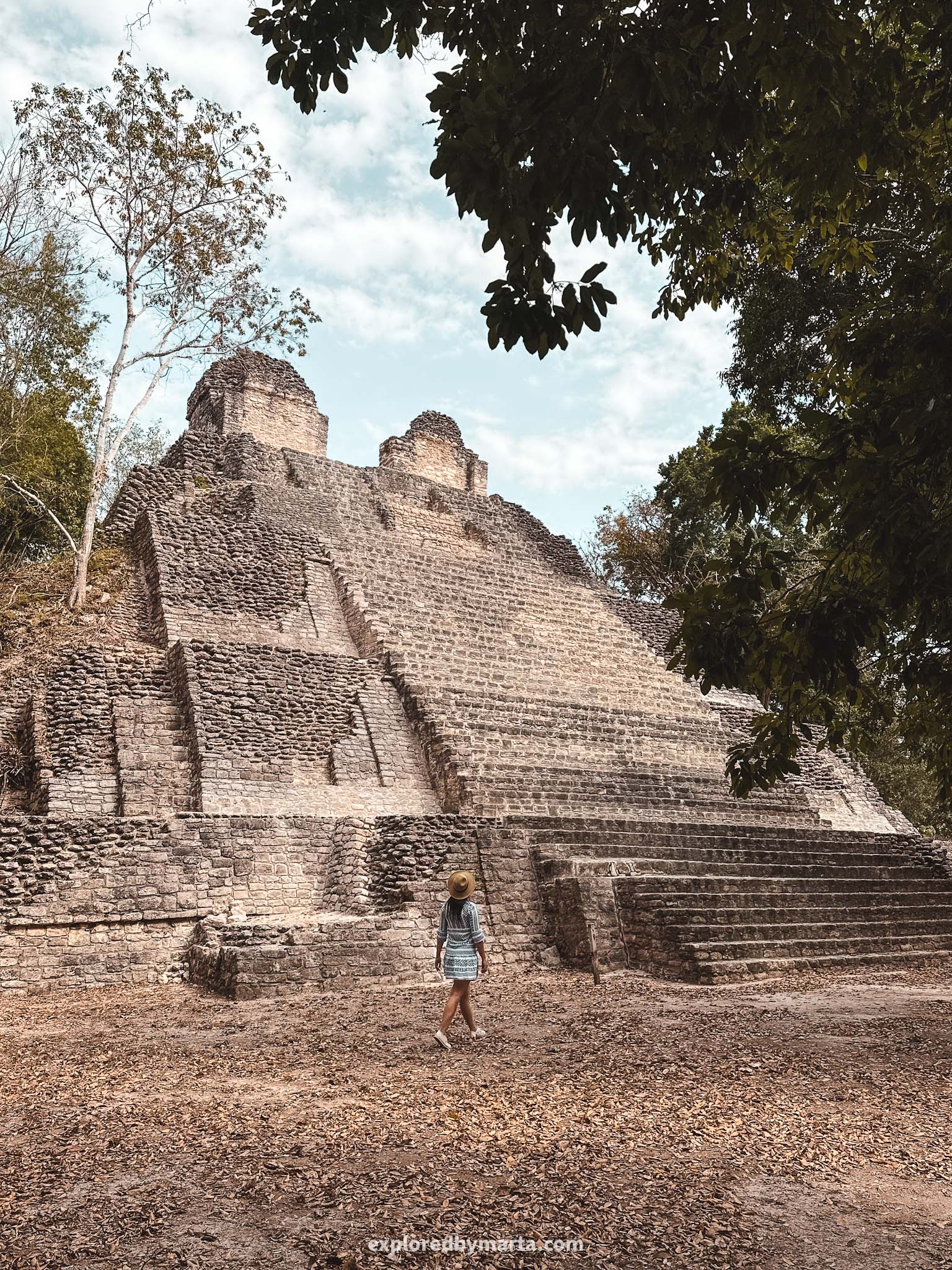
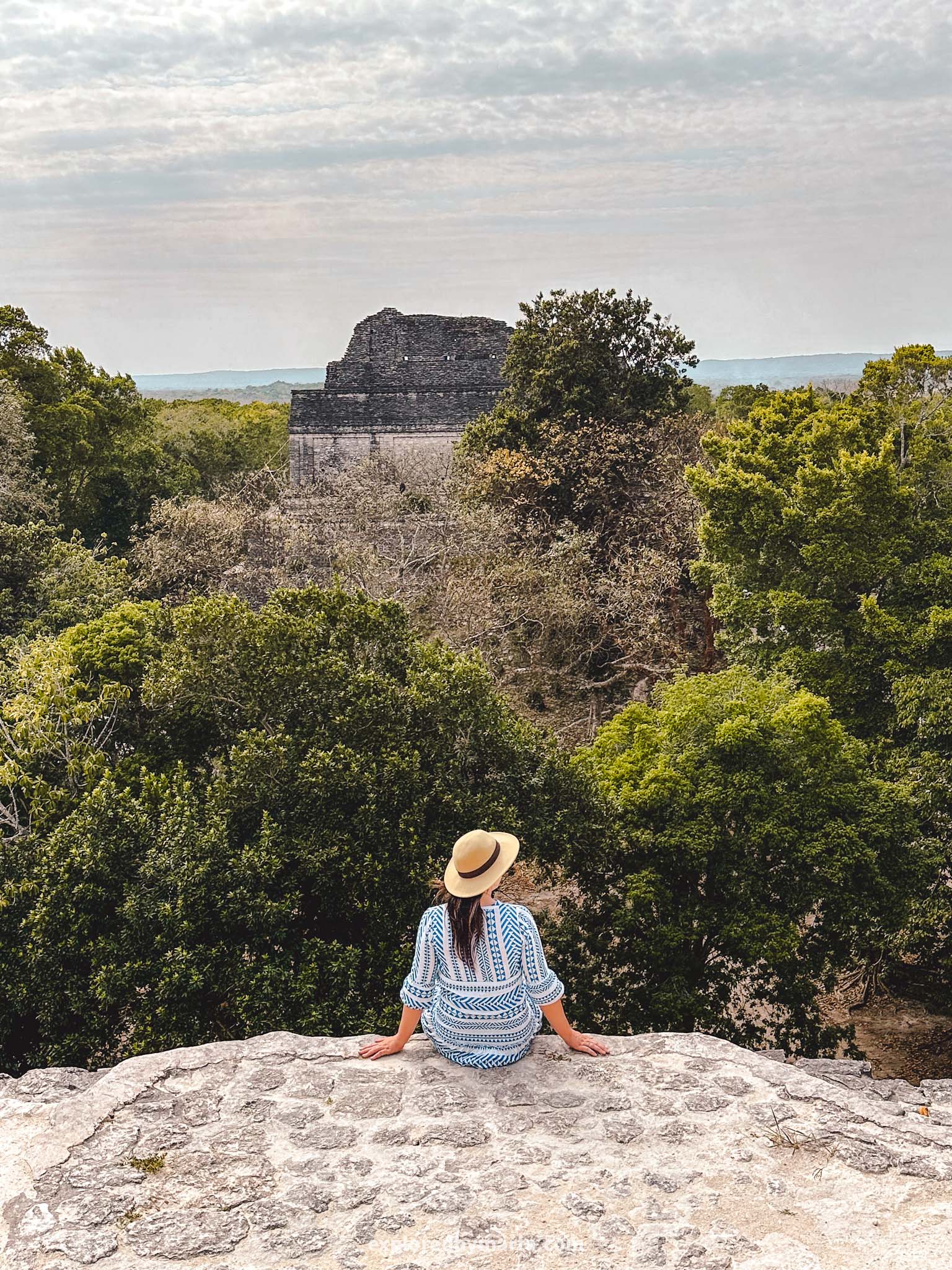
Dzibanché Archaeological Zone located a 1h 20min drive West of Bacalar is an absolute hidden gem to discover in the Yucatan Peninsula. The hidden Mayan site features multiple large temples and pyramids and you can climb them!
Dzibanché Archaeological Zone is one of the few larger Mayan ruins where you are still allowed to climb the pyramids – not all of them but we got to climb two massive ones and get fantastic views over the treeline of the surrounding jungle!

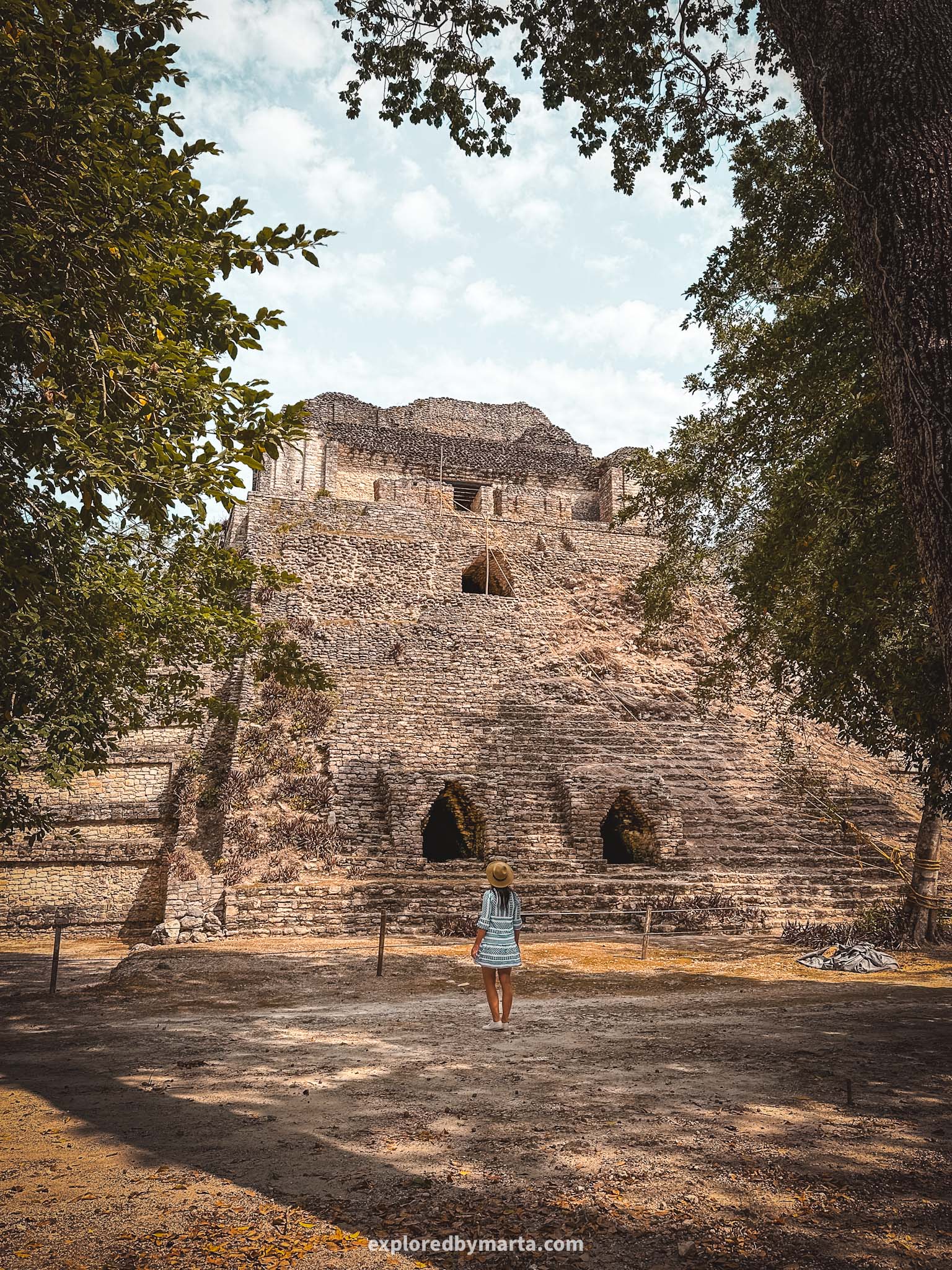
Most of the pyramids and structures in this Mayan site were built between the 4th and 10th centuries. The thing with temples and pyramids is that the Mayans often used to build the next structure on the base of the previous one.
As a result, most of the structures feature elements, details, and characteristics from different centuries and periods in the history of the ancient Maya civilization.
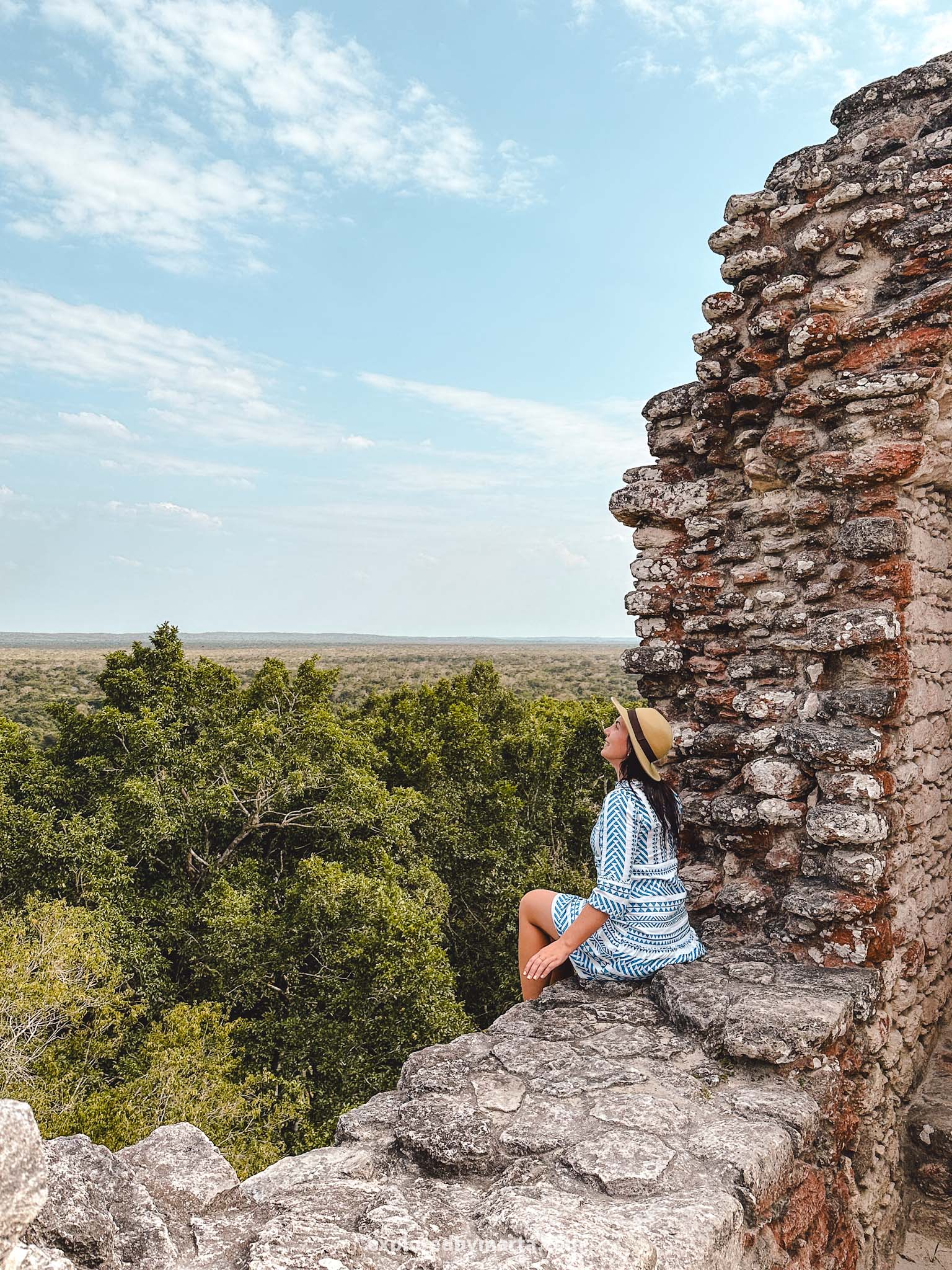
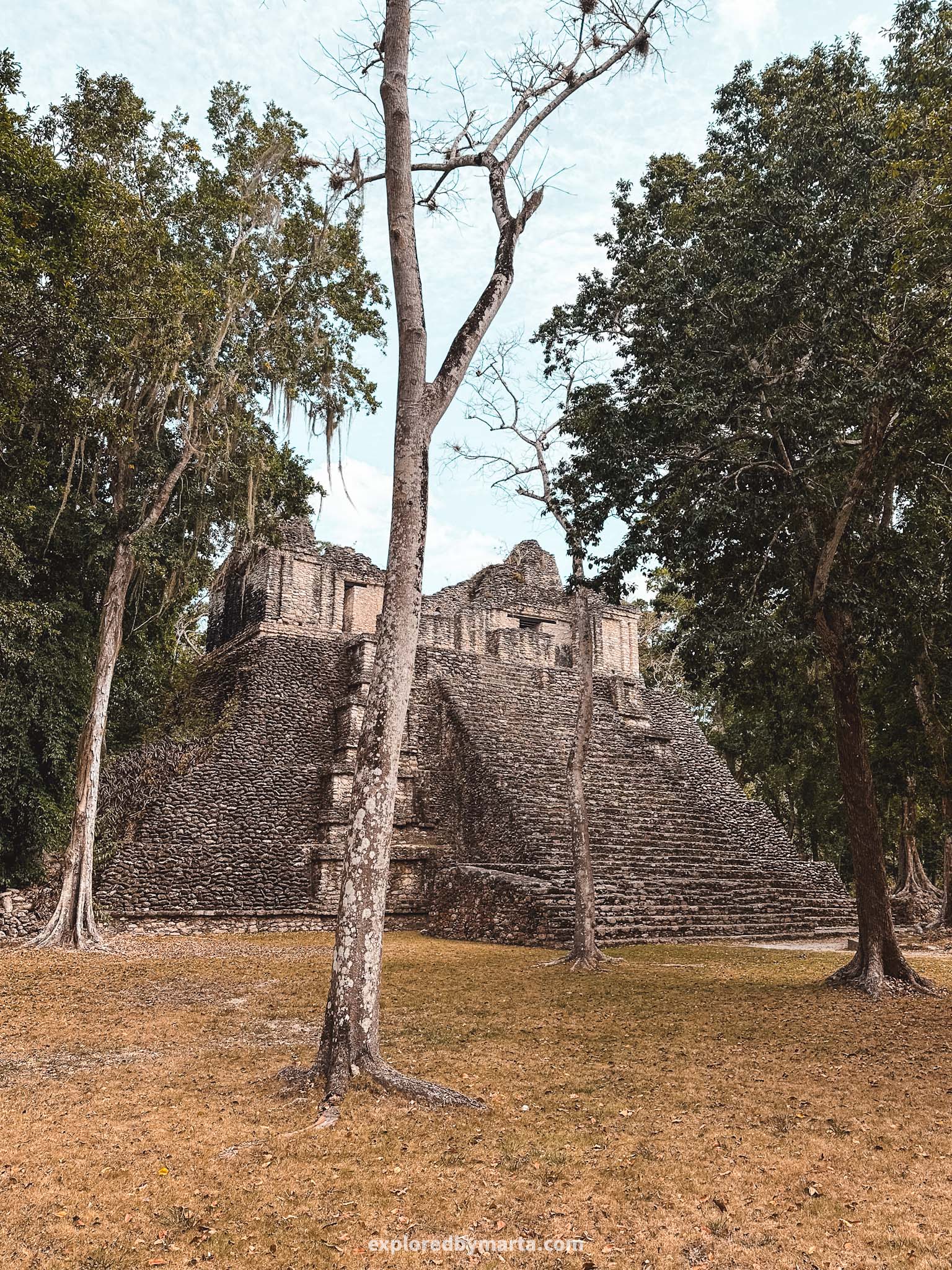
Entrance to the archaeological site is cheap – it was 50 pesos when we visited charged by a couple of local people a couple of kilometers before the ruins. No idea if that was official but we just wanted to see the ruins.
After you pay for the entrance you still have to drive a couple of kilometers on a horrendous road full of potholes. You can only get there by a rental car or you can join a guided tour from Bacalar. The ruins are fantastic and a rare sight for sure!
Tip! When wandering around the archaeological zone look at the trees! We saw lots of monkeys dancing and playing in the trees!
Location: Dzibanché Archaeological Zone
8. Kohunlich Archaeological Zone
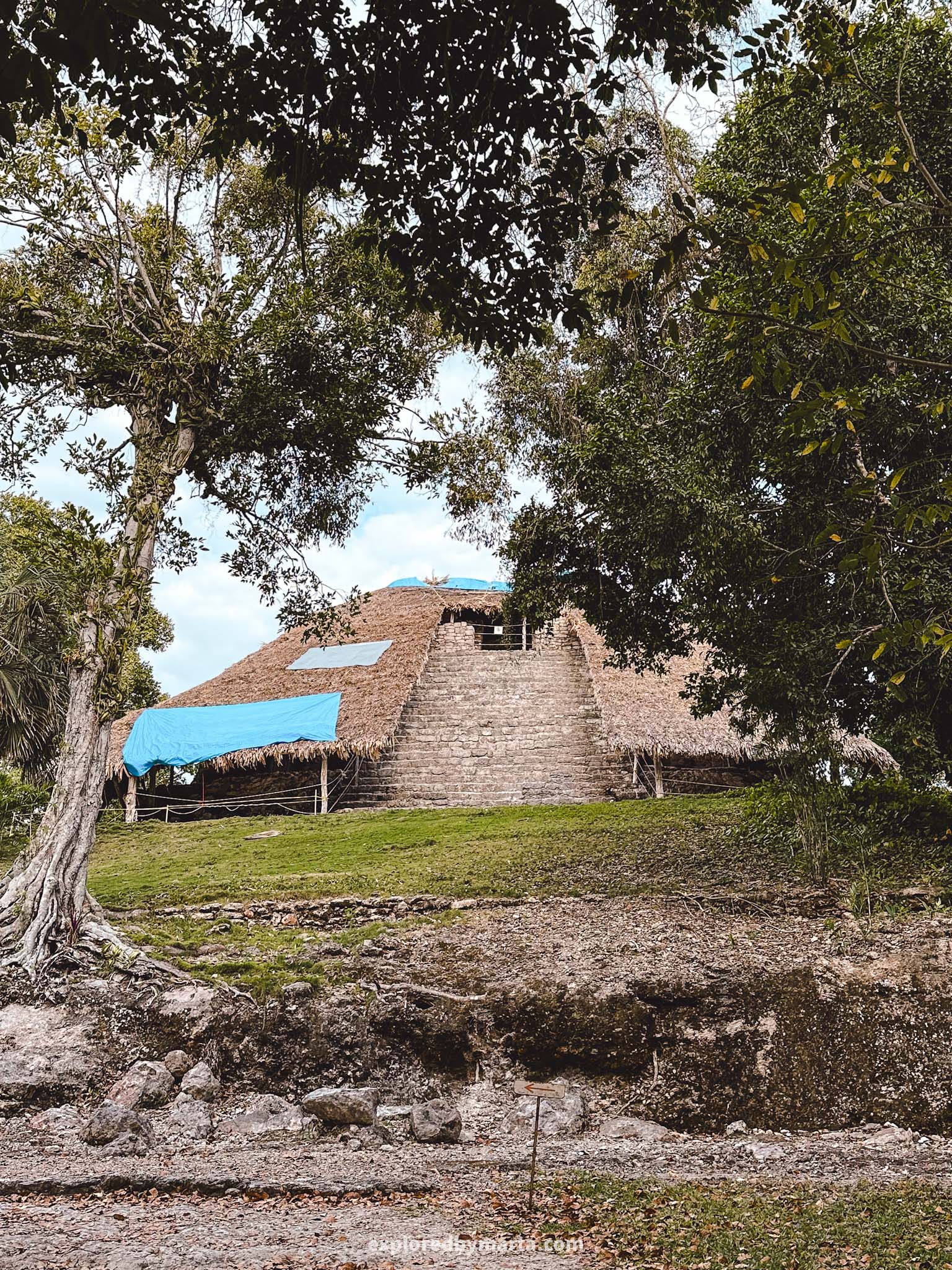
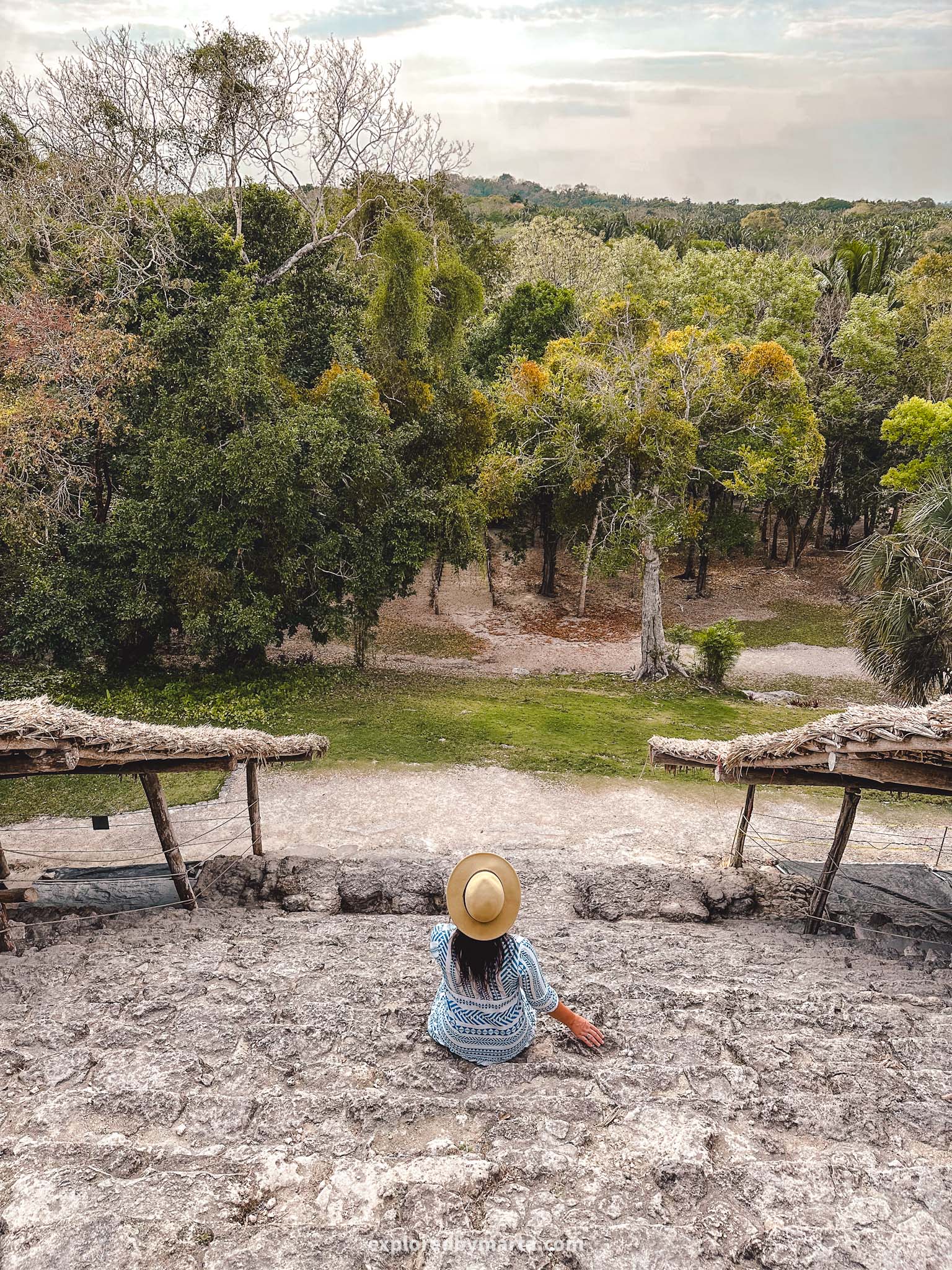
Kohunlich Archaeological Zone is another popular Mayan site near Bacalar, Mexico. There are no large pyramids or temples in this archaeological site and, although beautiful, it was less impressive than Dzibanché and Chacchoben sites.
We visited Kohunlich Archaeological Zone during our stay in Bacalar. Getting there is a bit tricky – you either need a rental car, hire a taxi, or go on a guided tour from Bacalar to get there. Roads were full of massive potholes when we visited.
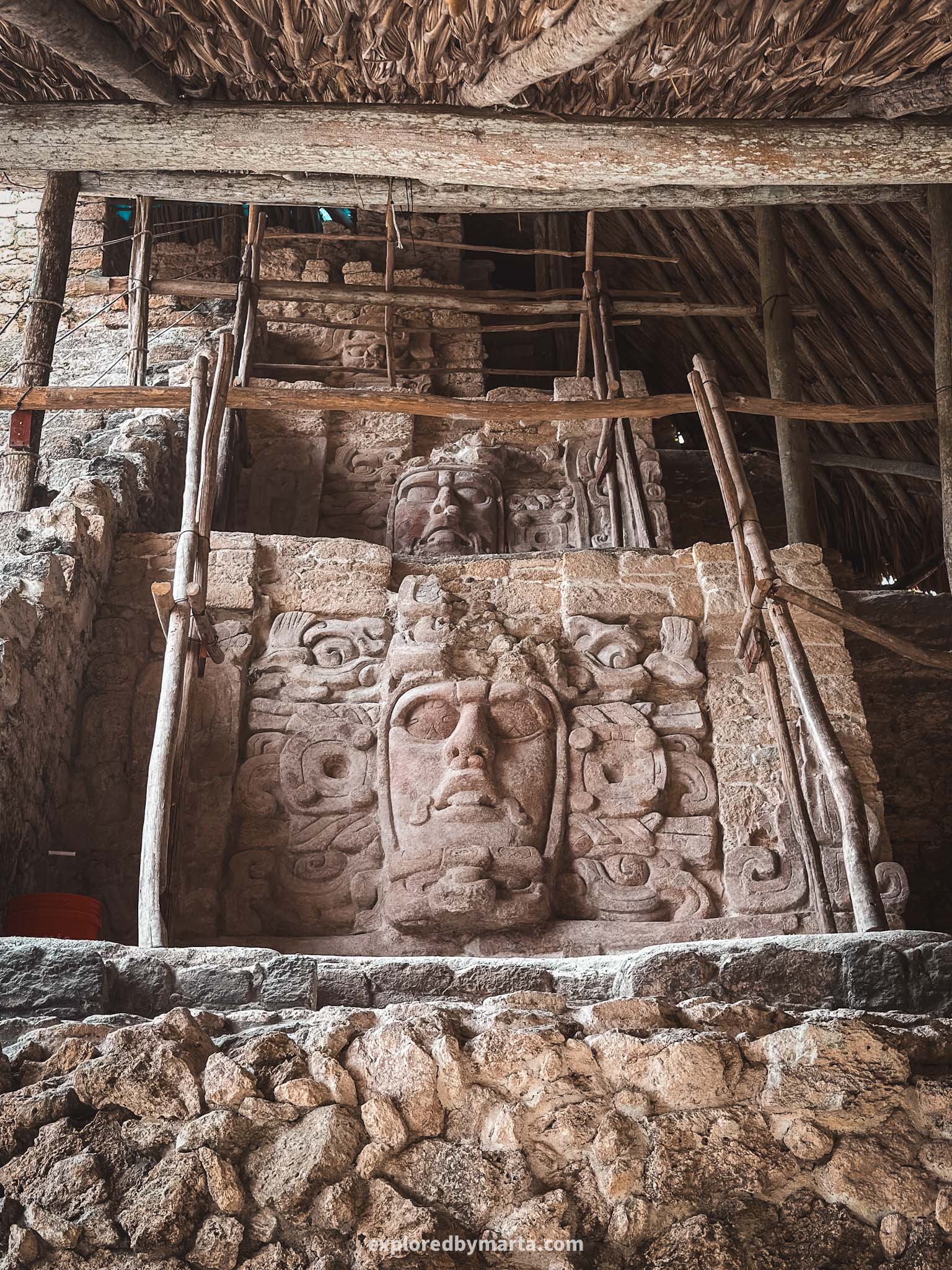
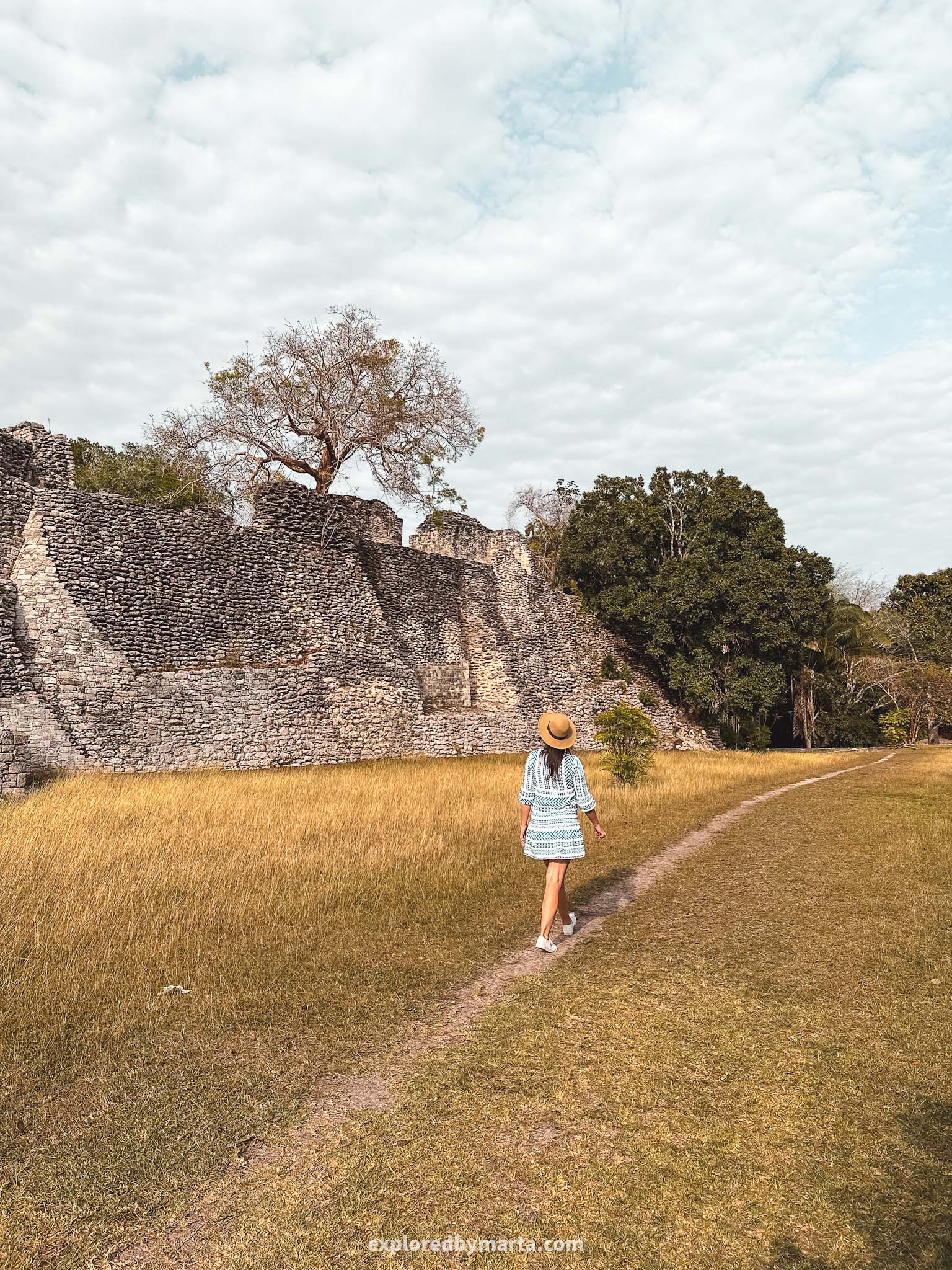
The archaeological site is known for its large Sun God masks – figureheads seen at one of the temples. You can climb some of the structures, including the largest structure here – the Temple of the Masks – but not all of them.
Kohunlich Archaeological Zone displays some architectural features that come from a specific Peten region in modern-day Guatemala indicating some kind of strong relationship between them.

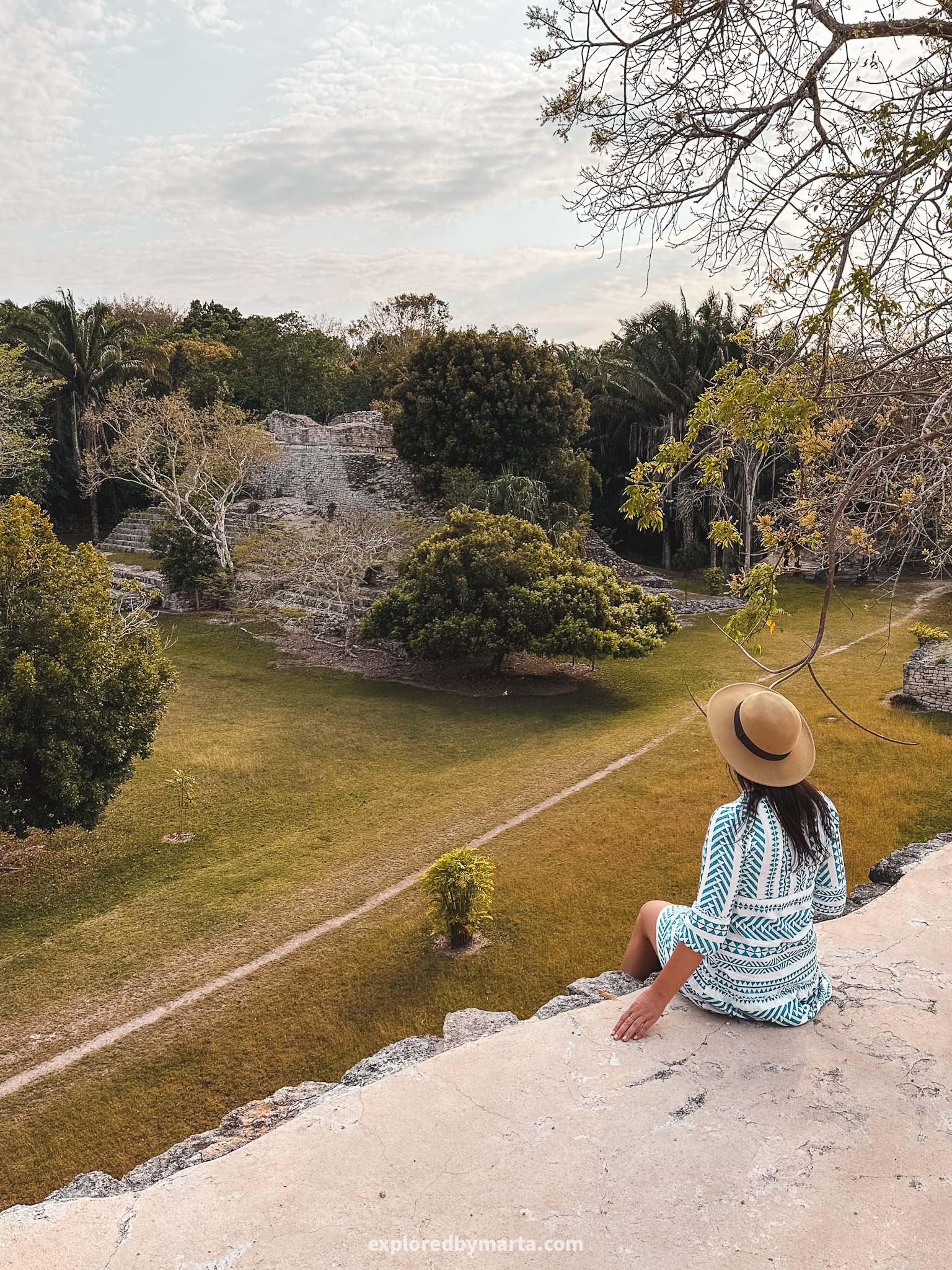
Another notable thing is that the large masks of the Sun God have also been found in a couple of archaeological zones in Belize which also indicates a connection between these Mayan cities.
Most of the structures in the Kohunlich Archaeological Zone date back to the period between the 3rd and 7th centuries but the site was settled even before that. Overall I liked it but wasn’t overly impressed by this site.
Location: Kohunlich Archaeological Zone
9. Tulum Archeological Zone

Tulum Archeological Zone is among the most visited Mayan ruins in Yucatan peninsula and in Mexico thanks to its proximity to the famous holiday destination – Tulum. Mayan ruins are located on a 12-meter-high seaside cliff right next to the Caribbean Sea.
Did you know? Tulum in the Mayan language means ‘wall’ or ‘fence’.
The name, probably, comes from the fact that Mayan Tulum city was protected by a 3-5-meter high wall. Tulum was one of the last major cities built by the ancient Mayan civilization – they only reached prominence between the 13th- 15th centuries.


Although the site is beautiful, there are no pyramids or large temples which makes it a bit less impressive than other Mayan ruins in Yucatan. The most notable structures here are El Castillo (The Castle), Temple of the God of Wind, and Temple of the Frescos.
Interestingly, the Temple of the Frescos was used as an observatory. Mayans are known for their ample knowledge of astronomy and their tracking of the sun. There are observatories in many other Mayan ruins in Yucatan Peninsula.


If you visit the Tulum Archeological Zone, take into consideration that these ruins are the third most visited Mayan site in Mexico. Meaning, lots of people visit this site every day so I recommend coming here first thing in the morning.
The parking lot for the ruins is located about 600-700 meters before the actual entrance. We had to pay the entrance fee in two parts – one was for the Tulum Mayan ruins and another fee was for entering Tulum National Park (small fee in cash!).
Location: Tulum Archeological Zone – Parking lot
10. Xcambó Archaeological Zone

Xcambó Archaeological Zone are less-visited Mayan ruins located just a 1-hour drive from Merida, Mexico. We paid 95 pesos each for entry and, as you can see from the photos, this is still one of the sites where you can climb the pyramids!
Xcambó was built between the years 350-550 and served as a commercial port as well as managed the salt mines. We drove there with our rental car during our three-week stay in Merida. This is definitely one of the lesser-known sites.
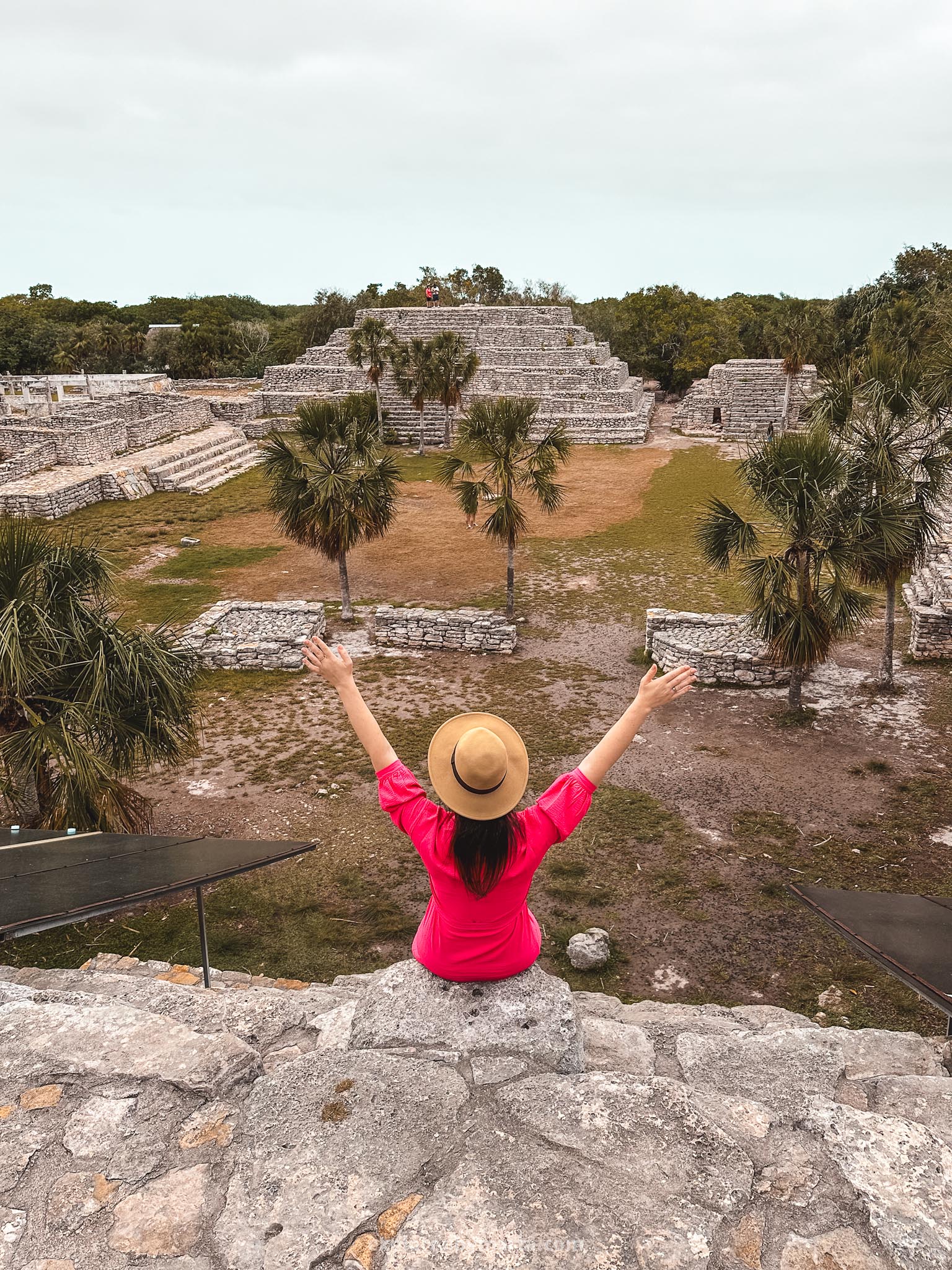
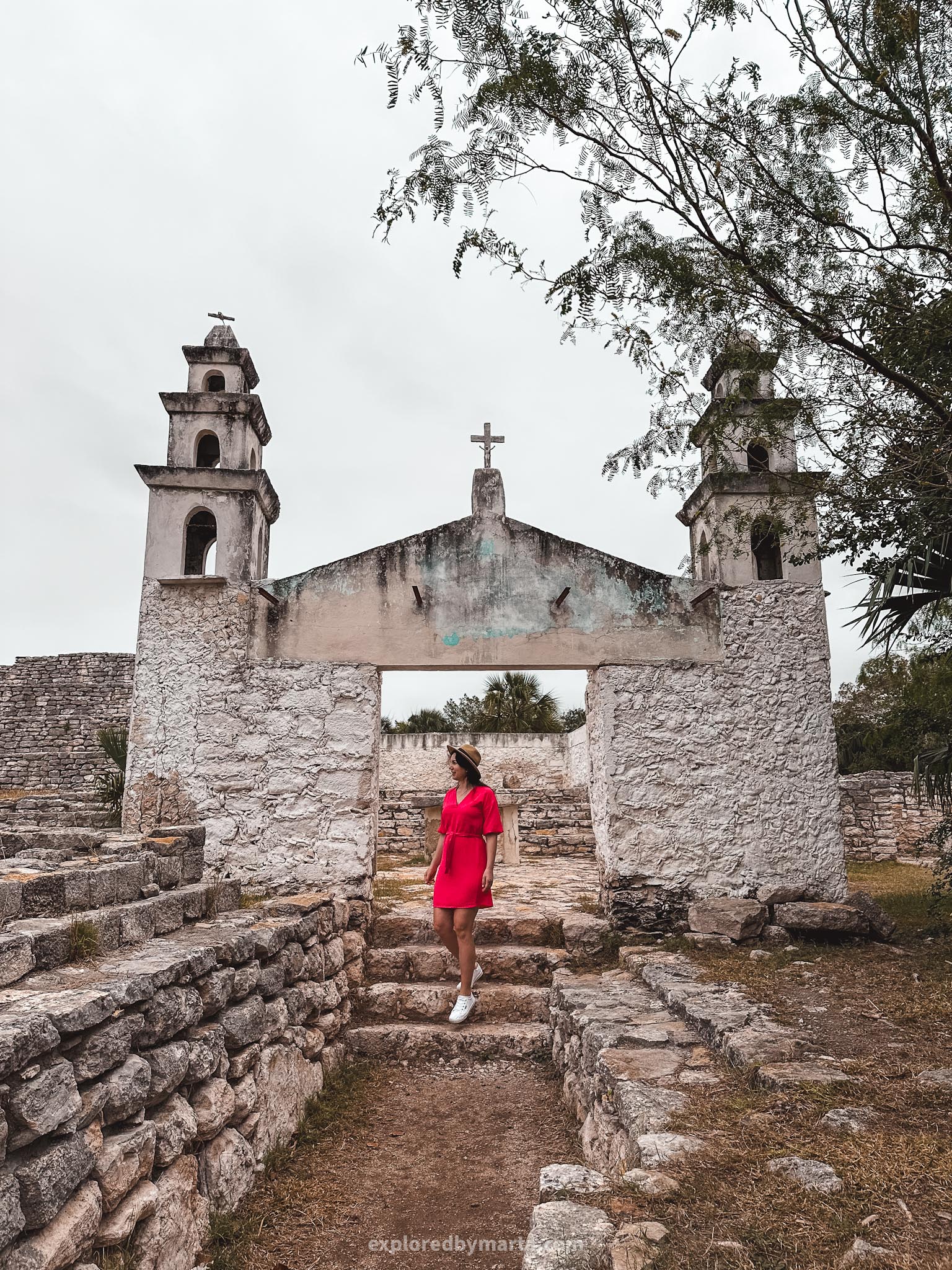
You are allowed to freely roam around the village exploring all the buildings and pyramids. There are several platforms, temples, and also bigger and smaller pyramids where you are allowed to climb up to the top.
This was actually the first archeological site that we visited in Yucatán and holds a special place in my heart. Maybe because this was the place where I climbed a Mayan pyramid for the first time in my life, haha!
Location: Zona Arqueológica Xcambó
11. Dzibilchaltún Archaeological Zone
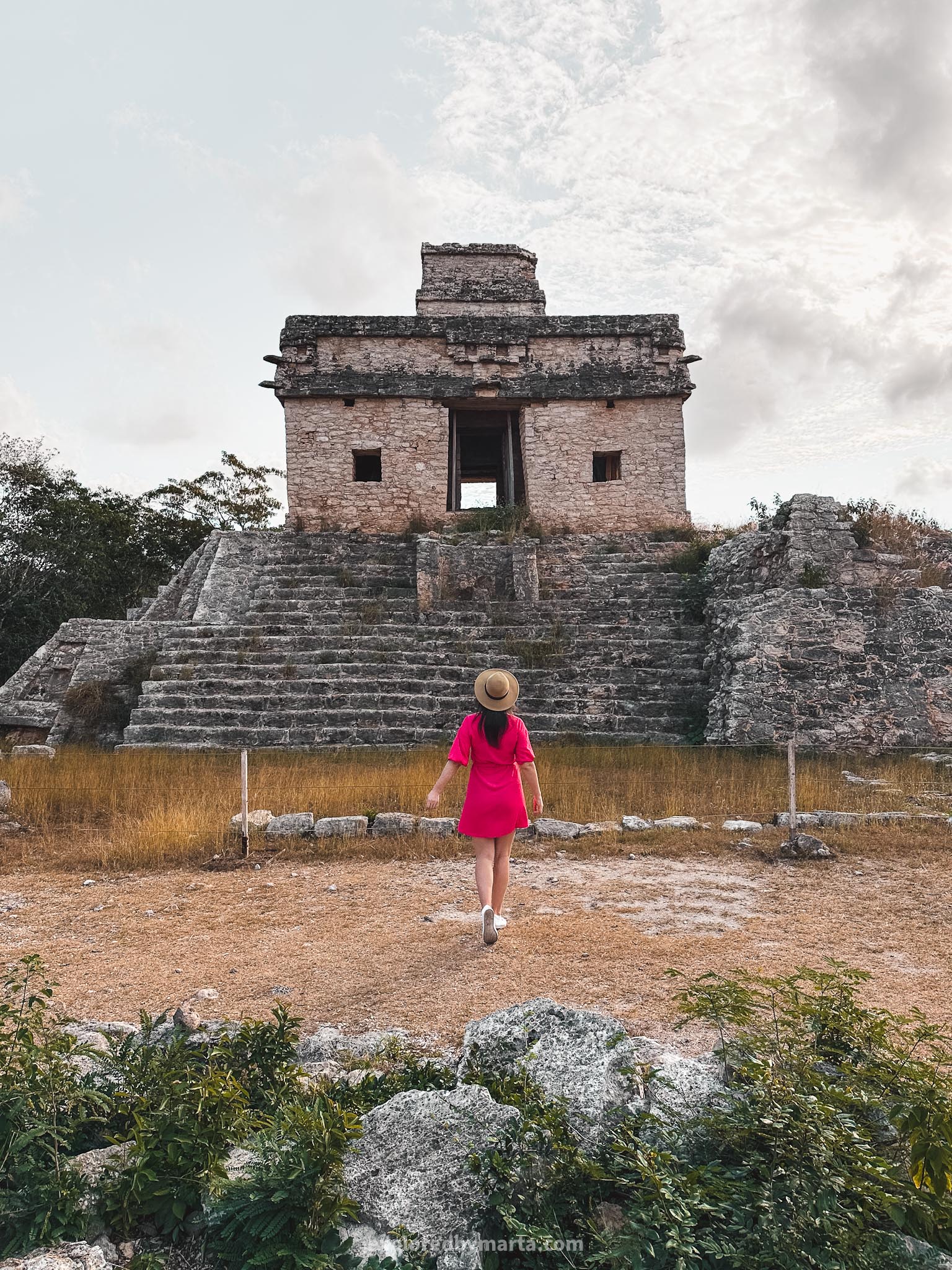
Dzibilchaltun ruins are located a short 20 to 30-minute drive from Merida. Dzibilchaltún from the Mayan language signifies a place where there are writings on the stones. It is best known for the Temple of the Seven Dolls or the Temple of the Sun.
Apart from the famous temple, the site also features a pyramid, and a couple of other structures as well as a cenote and a museum that were closed to visitors when we visited. It also features a 16th-century Franciscan chapel in the middle of the site.

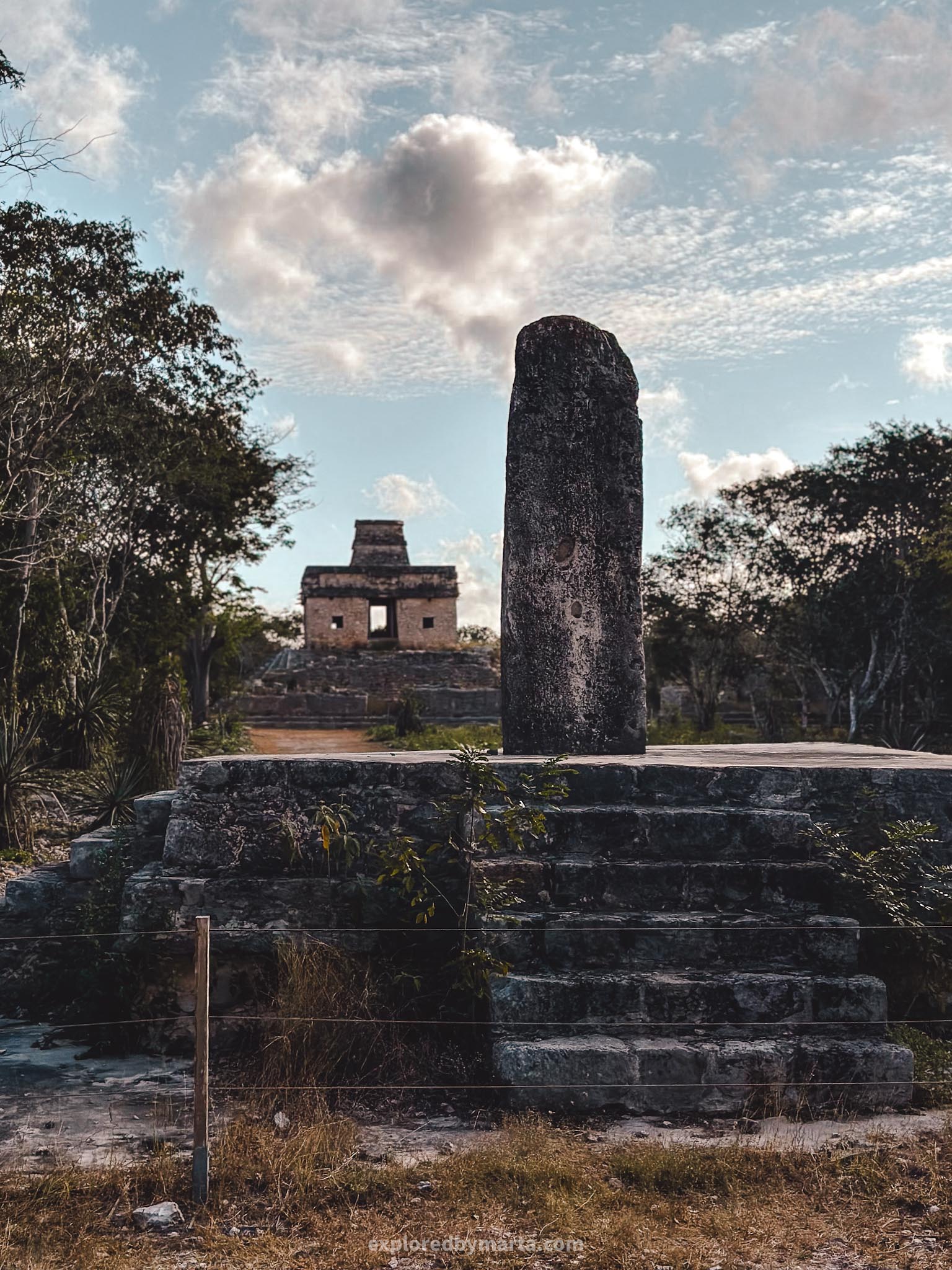
The most interesting part of the Temple of the Sun is that it is built in alignment with the equinox happening on March 21 and September 21. At dawn, the Sun appears right in the middle of the temple door proving Mayan knowledge of astronomy.
Although many of the structures that you can see today in the Dzibilchaltún archaeological zone date back to the 9th-11th centuries, there are artifacts found around and inside the cenote dating back as far as around 600 BC.
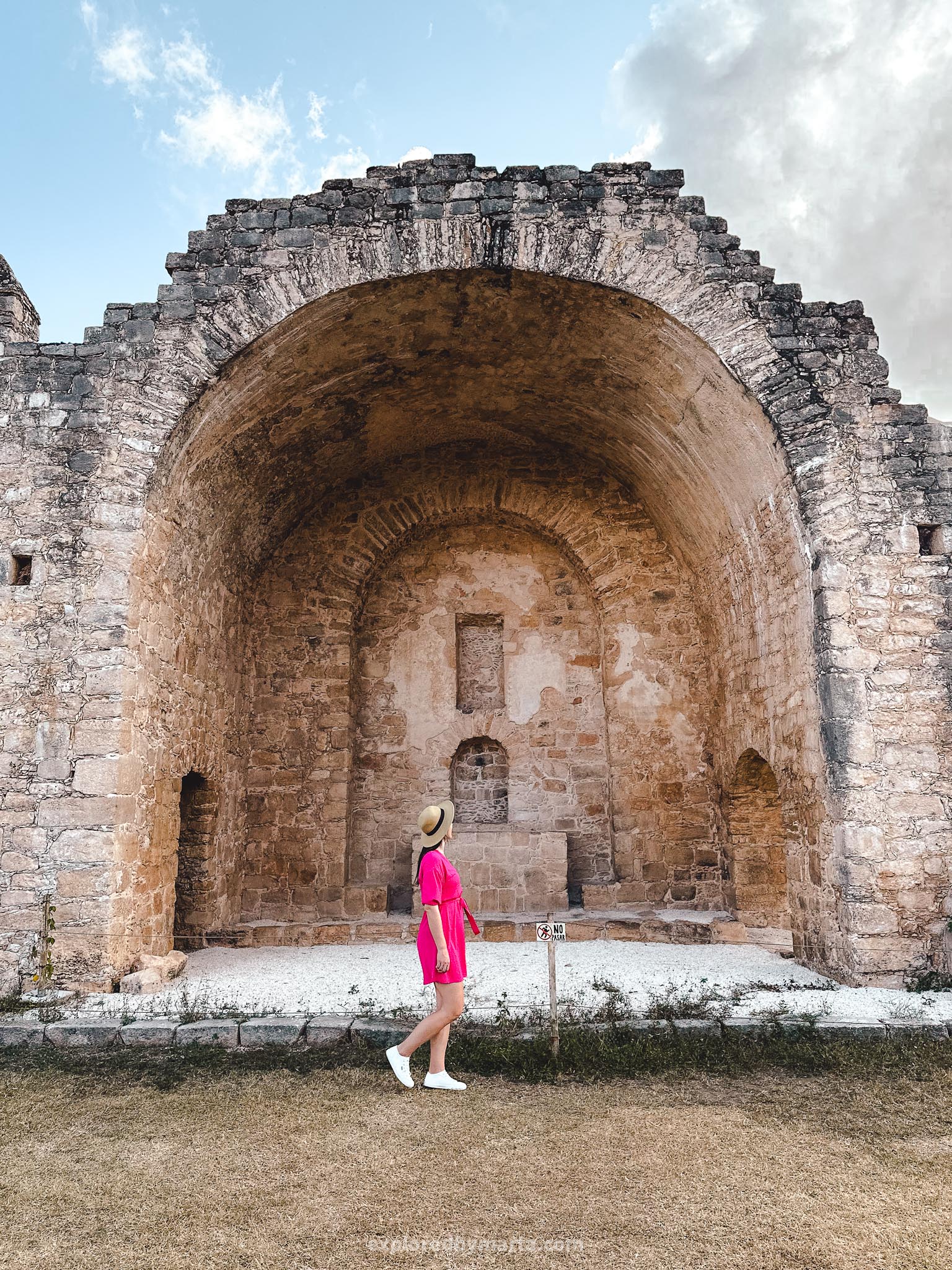
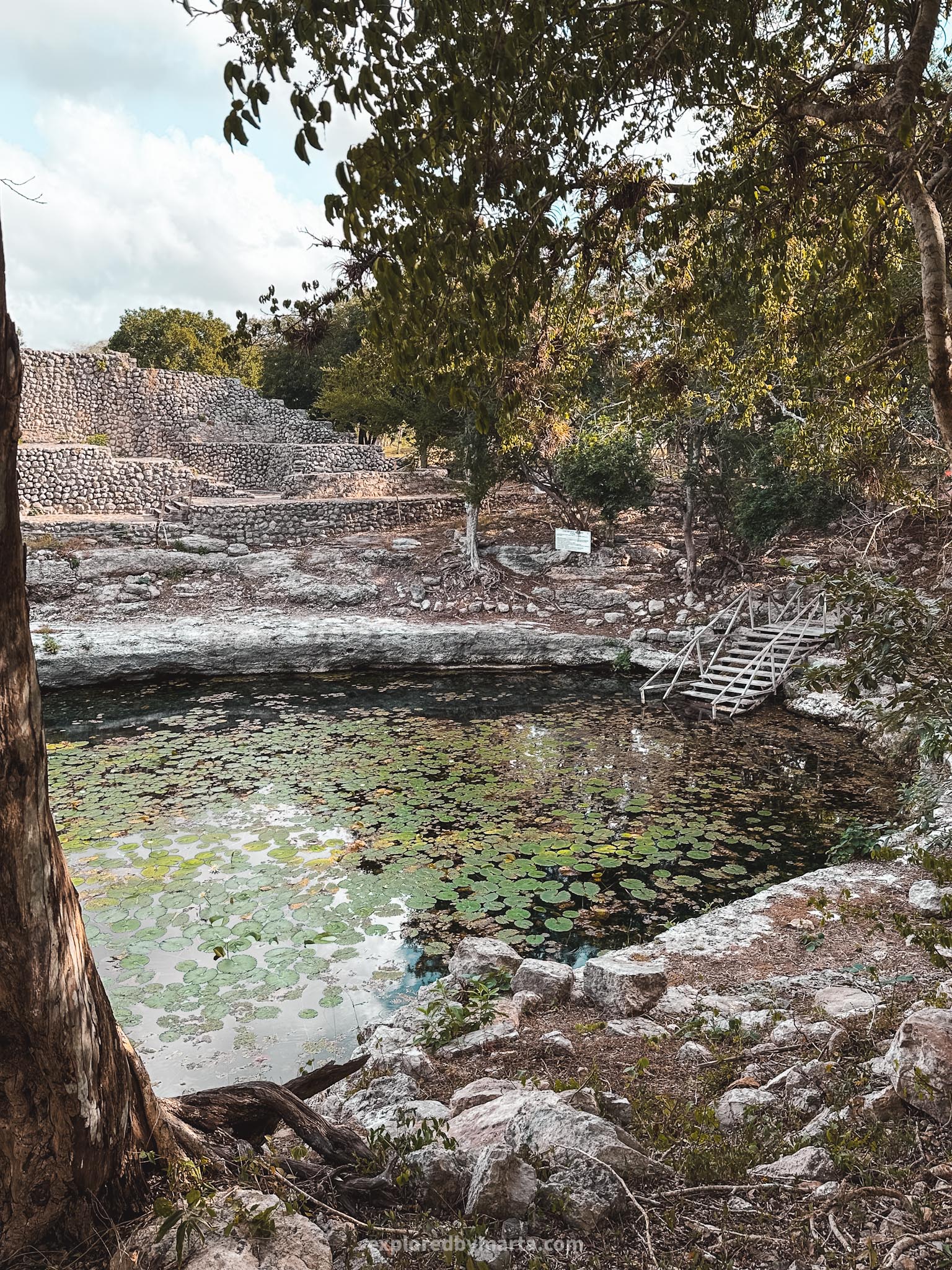
You cannot access the Temple of the Sun but you can climb other structures in Dzibilchaltún. There is a smaller pyramid as well as other Mayan structures to climb and observe from above what was once an ancient city with 25 thousand people.
Overall I wasn’t impressed by this site and by entry fees. We paid more than 100 pesos for parking and then more than 300 pesos per person for entry which seems too expensive for a smaller site like this.
However, they are building a museum there so maybe it will be worth it one day!
Location: Archaeological Zone of Dzibilchaltún
12. Ruta Puuc: Archaeological Zone of Kabah
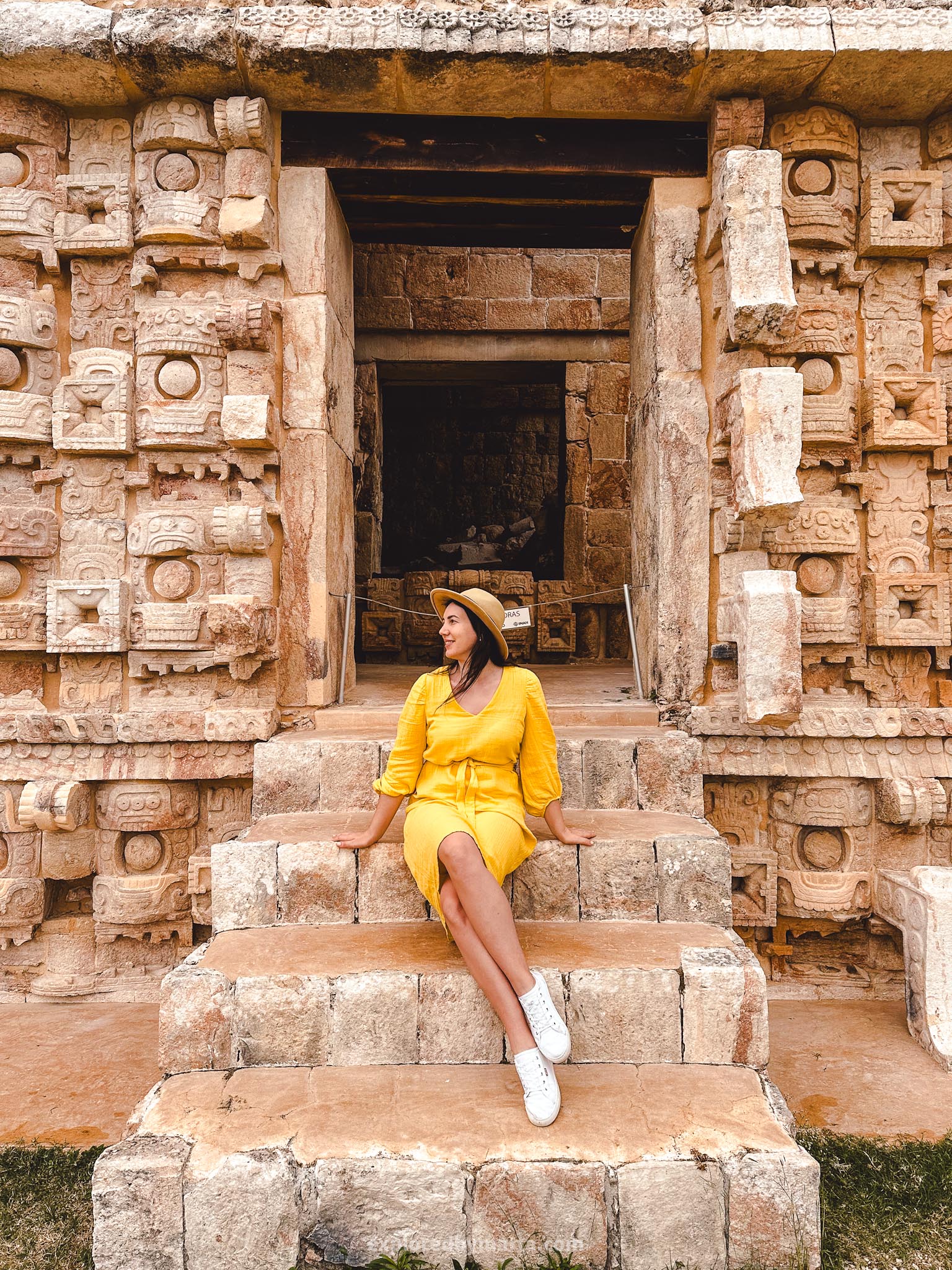
Ruta Puuc is a group of special Mayan ruins in Yucatán featuring the Puuc architectural style. Puuc means ‘hills’ in the Mayan language and is also the name of the region South of Merida where all these ruins are located.
Just a 1-hour drive South of Merida is a group of five different Mayan archaeological zones called the Ruta Puuc route. The most famous one is Uxmal which is often regarded as more beautiful than Chichen Itza ruins.
Kabah archaeological zone is another site of Mayan ruins in the Ruta Puuc route. Located just a 20-minute drive away from the Uxmal archaeological zone, Kabah is the second-largest site of the Puuc region.


We paid just 80 pesos per person for entry (in cash!) and no parking fee – a pleasant surprise for an archaeological site of this size after the skyscraper prices at Uxmal, Chichén Itzá, and Ek Balam.
Kabah also allows visitors to walk up close to the Mayan ruins to observe the architecture and we could even climb up to some of the structures (but not all of them!)! This experience definitely felt more intimate and special!


Kabah archaeological site does not have any impressive pyramids but it features a beautiful palace, temples, arches, and impressive examples of Puuc architecture – stone mosaics, geometric elements, elaborate sculptures, and the typical arch.
My favorite was the Codz Poop palace which is one of the largest structures here and allows you to admire the detailed Puuc architecture up close. The temple has a large wall covered with detailed stone mosaics.
The archaeological site has two parts – the majority of the buildings are located in one site but there is also a special Mayan arch on the other side of the road. If you go to the Uxmal site, I highly recommend adding Kabah to your itinerary!
Location: Zona Arqueológica de Kabah
13. Ruta Puuc: Archaeological Zone of Sayil

Up next along the Ruta Puuc route in the Yucatán Peninsula is the archaeological zone of Sayil. For the entry, we paid 75 pesos each in cash. It is a remote site so don’t expect to get any cell service around here!
The site proudly boasts large Mayan ruins – the 85-meter-long Palace of Sayil that once was a home for a local royal dynasty. Sayil was a city between the years 800 to 950 in our era with a population of around 10 thousand people.


The Grand Palace has three levels. Although you cannot climb the palace, you can peek inside the rooms of the lower level (nothing’s inside!). There are a couple of other smaller ruins nearby like El Mirador temple about 400 meters from the palace.
The archaeological zone of Sayil is located just an 8-minute drive from the previous site – Kabah – and a 7-minute drive from its next neighbor – the archaeological zone of Xlapak. We spent about 30 minutes here. It was nice but not too memorable.
Location: Archaeological Zone of Sayil
14. Ruta Puuc: Archaeological Zone of Xlapak
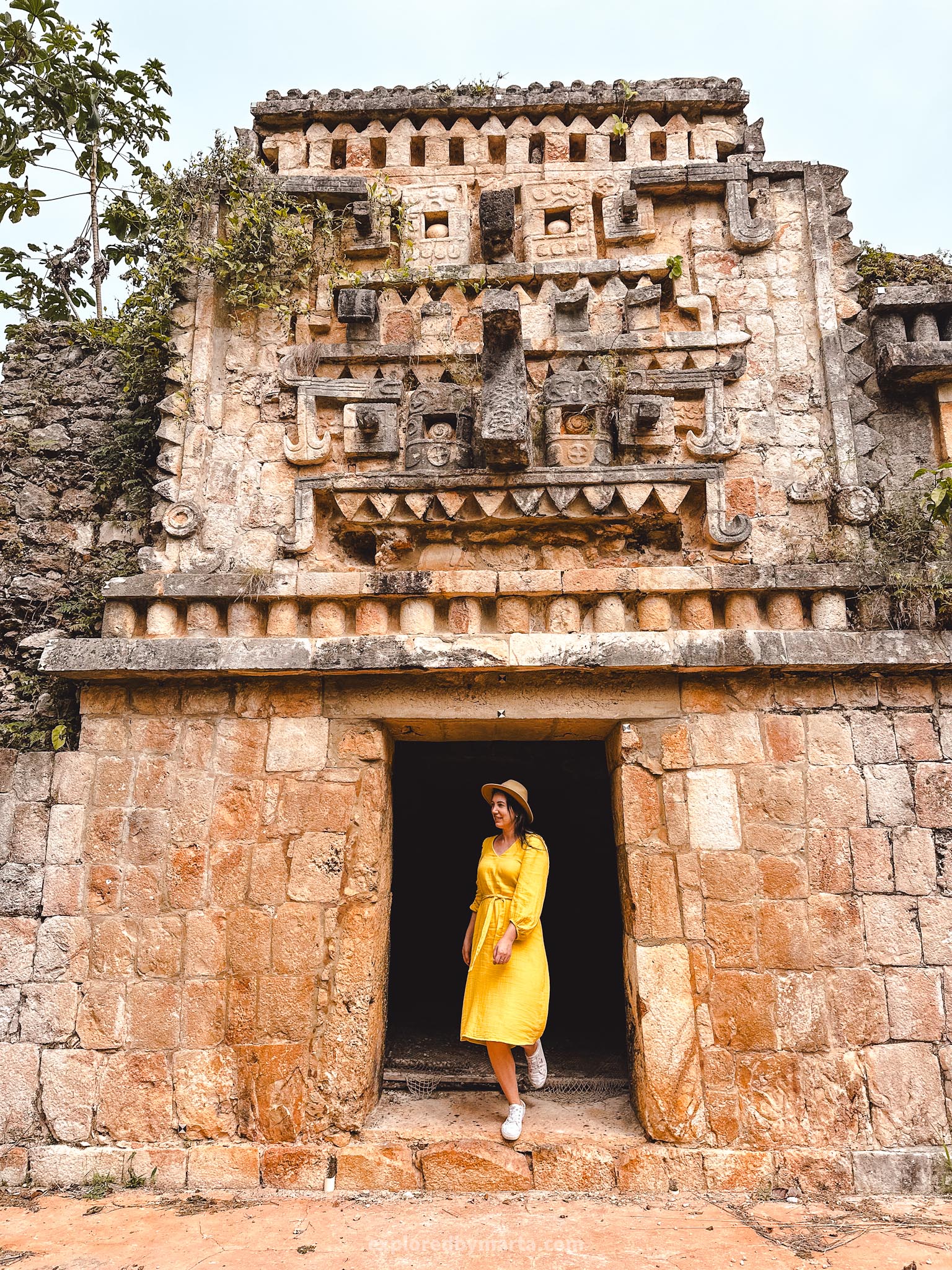

Xlapak archaeological zone is the smallest of all the Mayan ruins near Merida along the Ruta Puuc route. We paid another 75 pesos for the entry to visit a couple of nearly destroyed Mayan ruins dating back to the years 800-1000.
The archaeological site features a couple of palace-type buildings, however, they are very small and only one of them was really worth a visit (first photos). Other ‘palaces’ were either almost destroyed or not very impressive.


The first and most impressive palace features typical Puuc architecture – a simple rectangular building with a highly decorated upper part. The main palace features geometric elements and masks of the long-nose Yucatec Maya rain god Chaac.
Overall, if you have plenty of time and energy you can visit this place. We spent less than 30 minutes here (probably closer to 20 minutes). But if you have things to do and places to see, you can definitely skip this one.
Location: Archaeological Zone of Xlapak
15. Ruta Puuc: Archaeological Zone of Labná
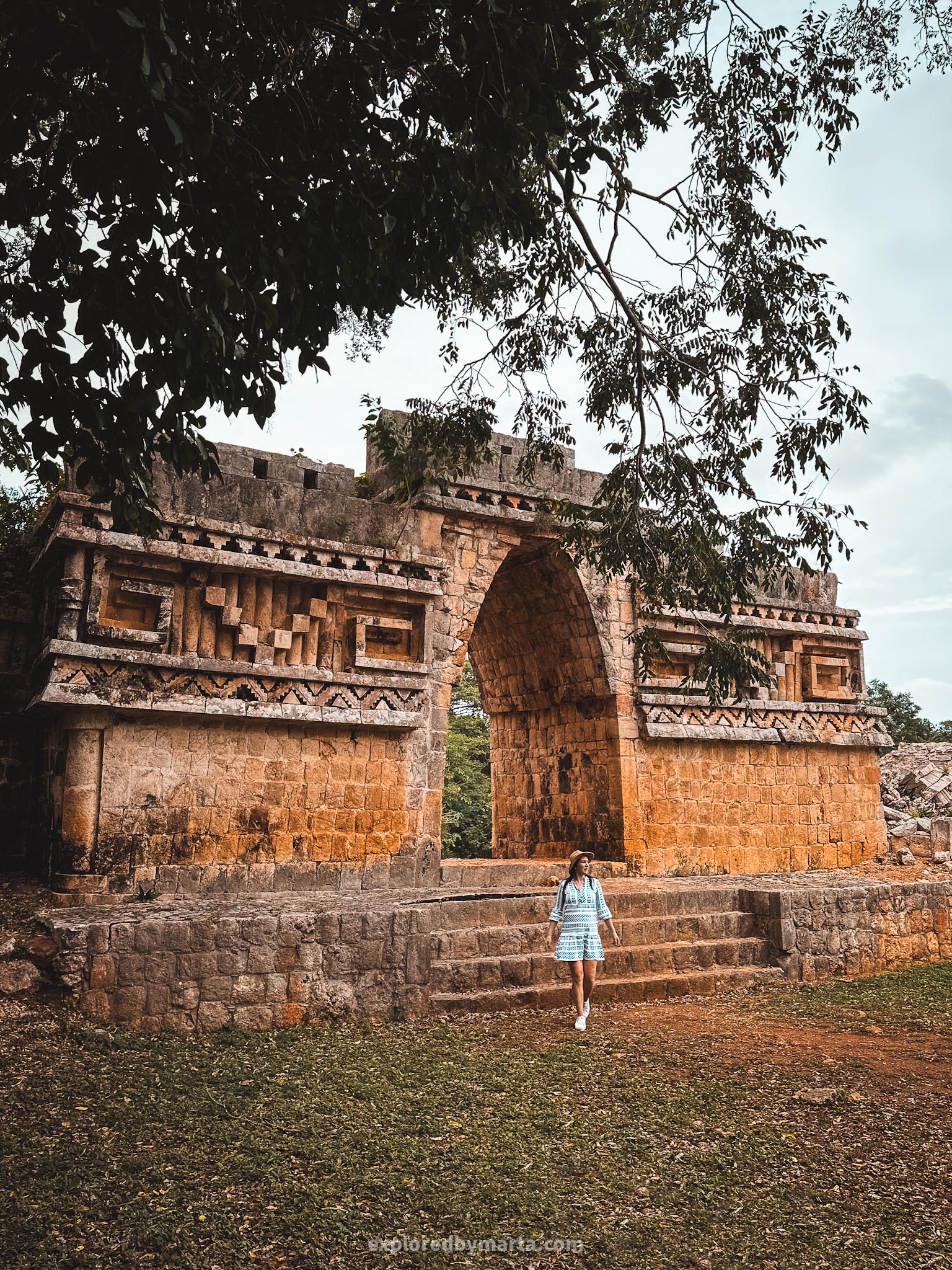
One may think that the further we went from the massive Uxmal archaeological zone the smaller and insignificant these other sites would get. Wrong! Labná archaeological zone turned out to be one of my absolute favorite Mayan ruins along Ruta Puuc!
The archaeological zone proudly boasts three striking buildings – a large 120-meter-long two-storey palace El Palacio, the beautiful Gateway Arch, and the temple El Mirador (The Viewpoint) sitting atop a high pyramid-like structure.


The first building that you will see when you walk to the ruins is El Palacio. With 120 meters in length, it proudly stands as one of the longest Mayan structures in the Puuc region. You can walk up to the palace and even climb up on the roof of it!
Many doorways are open and you can take a look inside. The rooms often feature the typical shapes of arches in the Puuc architecture. You will see a long ceremonial road (‘sacbe’) stretching from the palace to other buildings on this site.
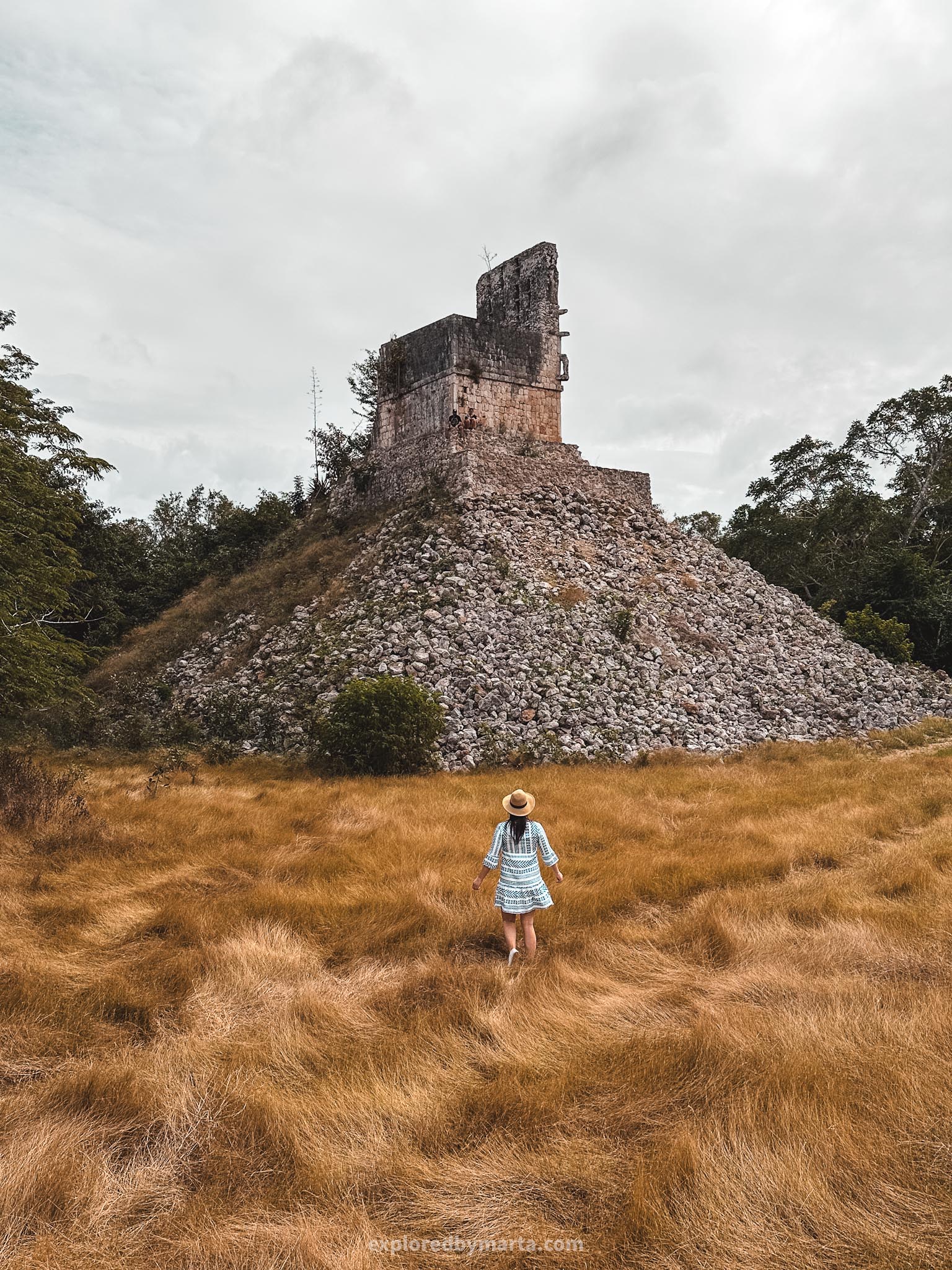

As you walk along the sacbe road you will find yourself next to two unique structures. One of them is the El Mirador temple. It sits on top of what looks like a stone pyramid. You can climb up there and get amazing views over the jungle!
Another building here is one of my favorites – the Gateway Arch (first photo). It is a 6-meter high well-preserved Mayan structure that served as a passageway. It features typical Puuc architectural elements – stone mosaics and geometric elements.
This Mayan site was built during the 8th and 9th centuries. There’s even a year 862 inscribed in the palace building. Out of all the Ruta Puuc Mayan sites, Labná, as well as Uxmal and Kabah were my favorites.
Location: Archaeological Zone of Labná
16. Kinich Kakmó and Itzamatul pyramids in Izamal
Did you know that Izamal city, located just 1 hour drive from Merida, which is famously known as the Yellow City, is also called the City of Hills? Let me tell you a secret! Those are not just hills. The ‘hills’ are the remains of ancient Mayan pyramids!
Most of the pyramids and archeological sites in Izamal are destroyed but there are two quite large Mayan pyramids worth seeing that you will find amongst the best places to visit in Izamal, Mexico. The best part? You can climb them and visit them for free!
1. Kinich Kakmó Pyramid
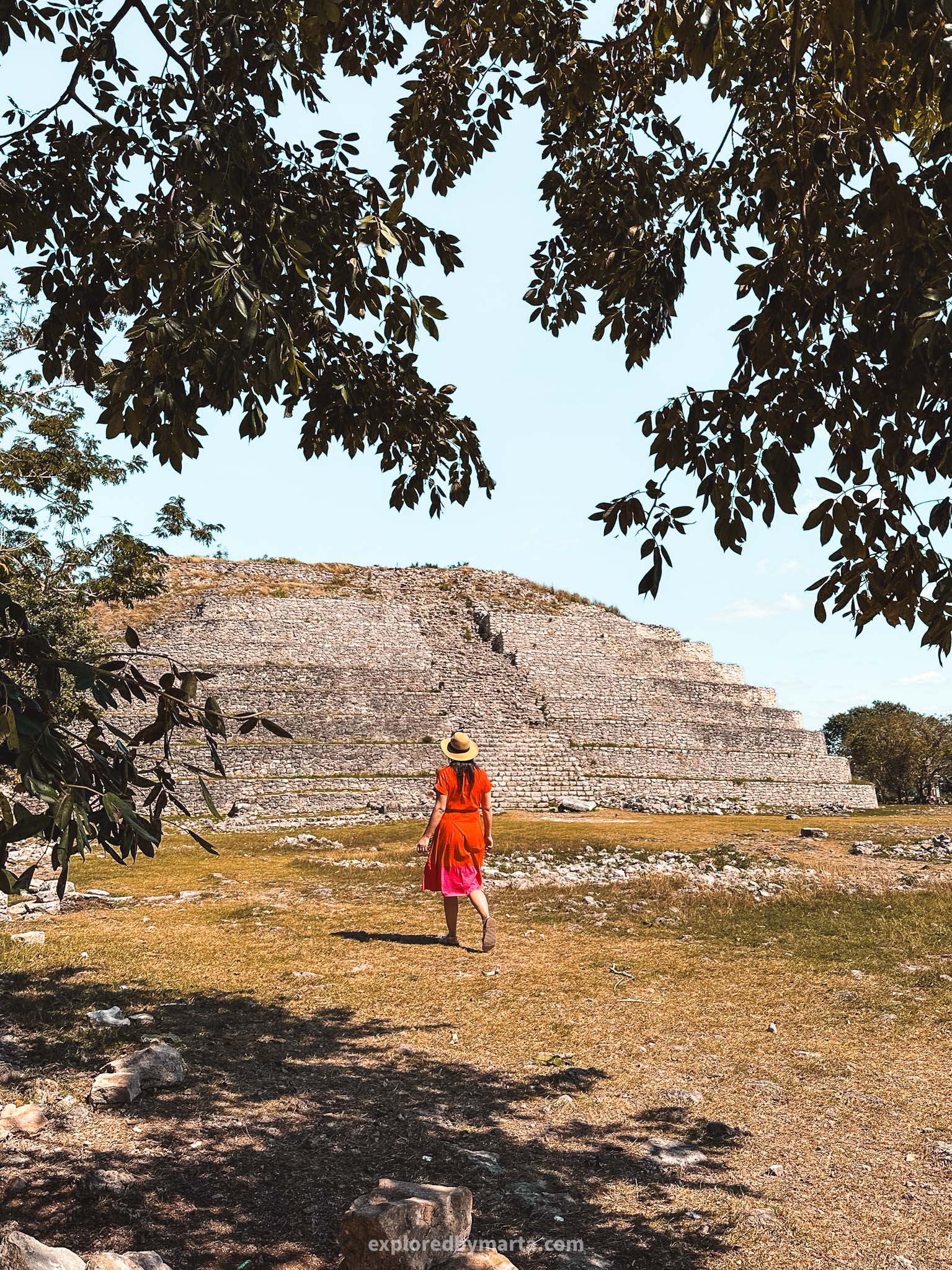
Kinich Kakmó Pyramid is the largest Mayan pyramid in Izamal and one of the largest pyramids in Mexico. It measures 200 meters long and 180 meters wide. The pyramid was built between 400 and 600 in our era and was dedicated to the Maya sun god.
Kinich Kakmo pyramid was one of my favorite places in Izamal. Besides, there is no entrance fee and you can enter the territory for free. Just check their working hours as there is a gate that is closed during the night!


My favorite thing about the Kinich Kak Moo pyramid is that you are allowed to climb up to the top of the pyramid – something that is no longer allowed in many archeological sites in the Yucatán Peninsula. And you can see the entire Izamal from the top!
Kinich Kak Moo pyramid is one of two pyramids you can climb in Izamal. Both pyramids are just 500 meters away from each other right in the heart of the city. If you’re short on time you can skip the Itzamatul and prioritize the Kinich Kakmó Pyramid.
Location: Kinich Kakmó Pyramid
2. Itzamatul Pyramid


Itzamatul is another Mayan pyramid in the yellow town of Izamal. Itzamatul uncovers three stages of construction. Some parts of it date back to 950-1150 AC, other parts were built between 700-850 AC but the third stage took place around 400-600 AC.
It is said that Itzamatul Pyramid was built for the Mayan god Zamná and the pyramid attracted many pilgrims that traveled to this site. Today you can visit this ancient Izamal pyramid sitting in the center of town for free and even climb to the top of it.
Location: Itzamatul Pyramid
17. San Gervasio Archaeological Zone in Cozumel
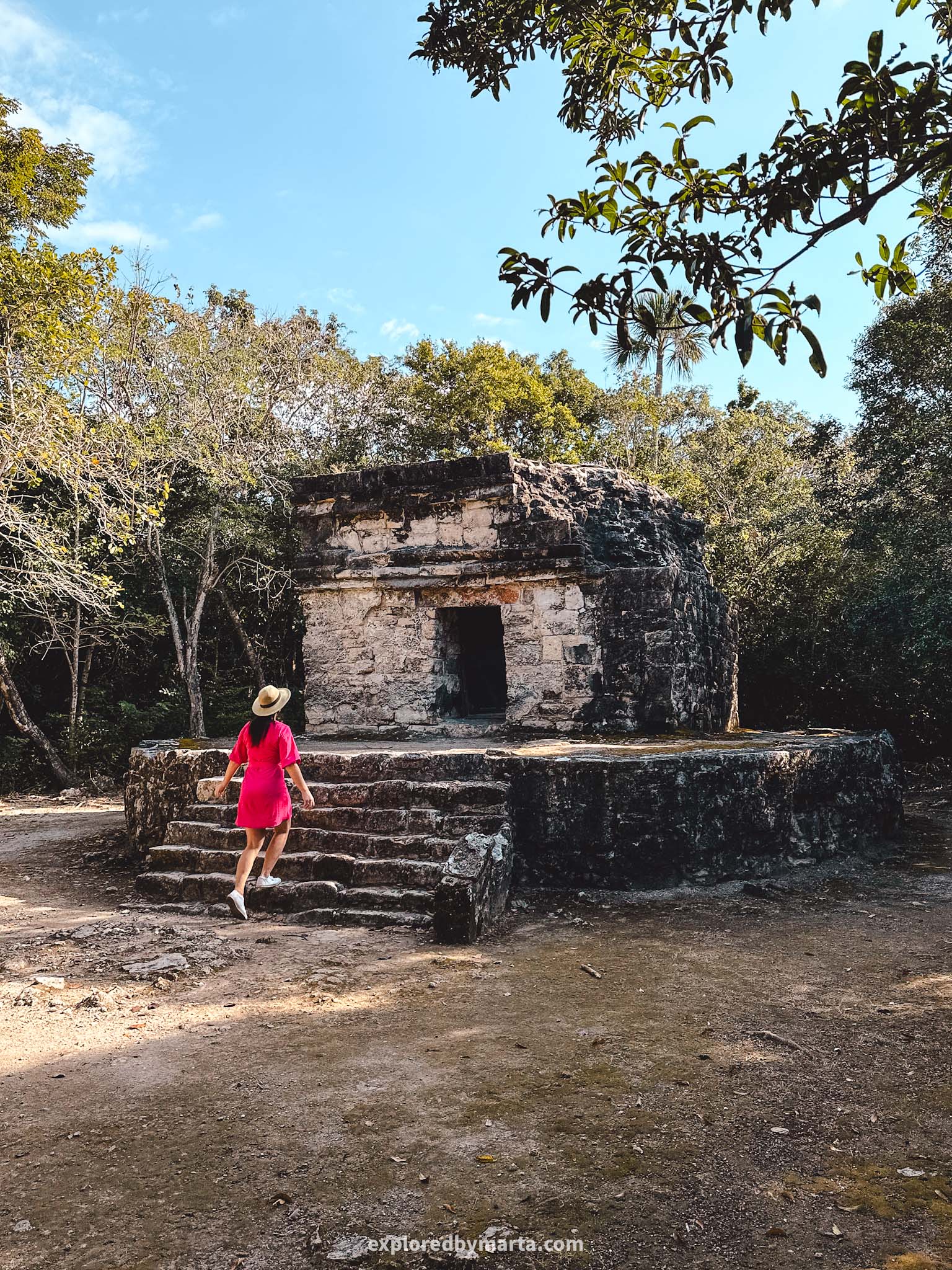
San Gervasio Archaeological Zone is one of the must-visit places in Cozumel, Mexico. Although these Mayan ruins are on a smaller scale compared to many other ruins on the mainland, they are still the largest ones on Cozumel Island.
San Gervasio Archaeological Zone is pretty much scattered around the jungle so you will have to walk a bit to see the most impressive places. It features a couple of temples, arches, columns, and other important structures.
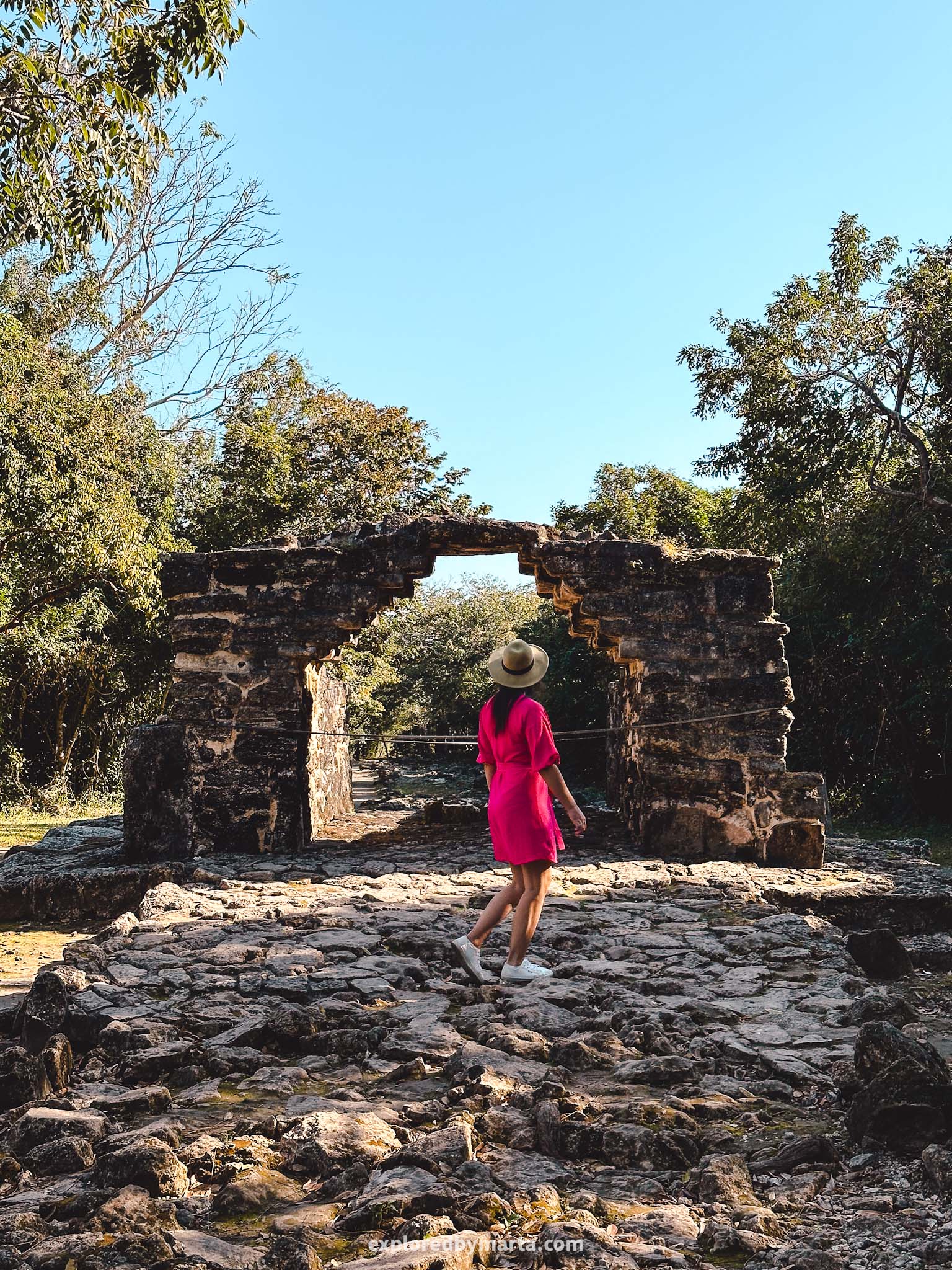
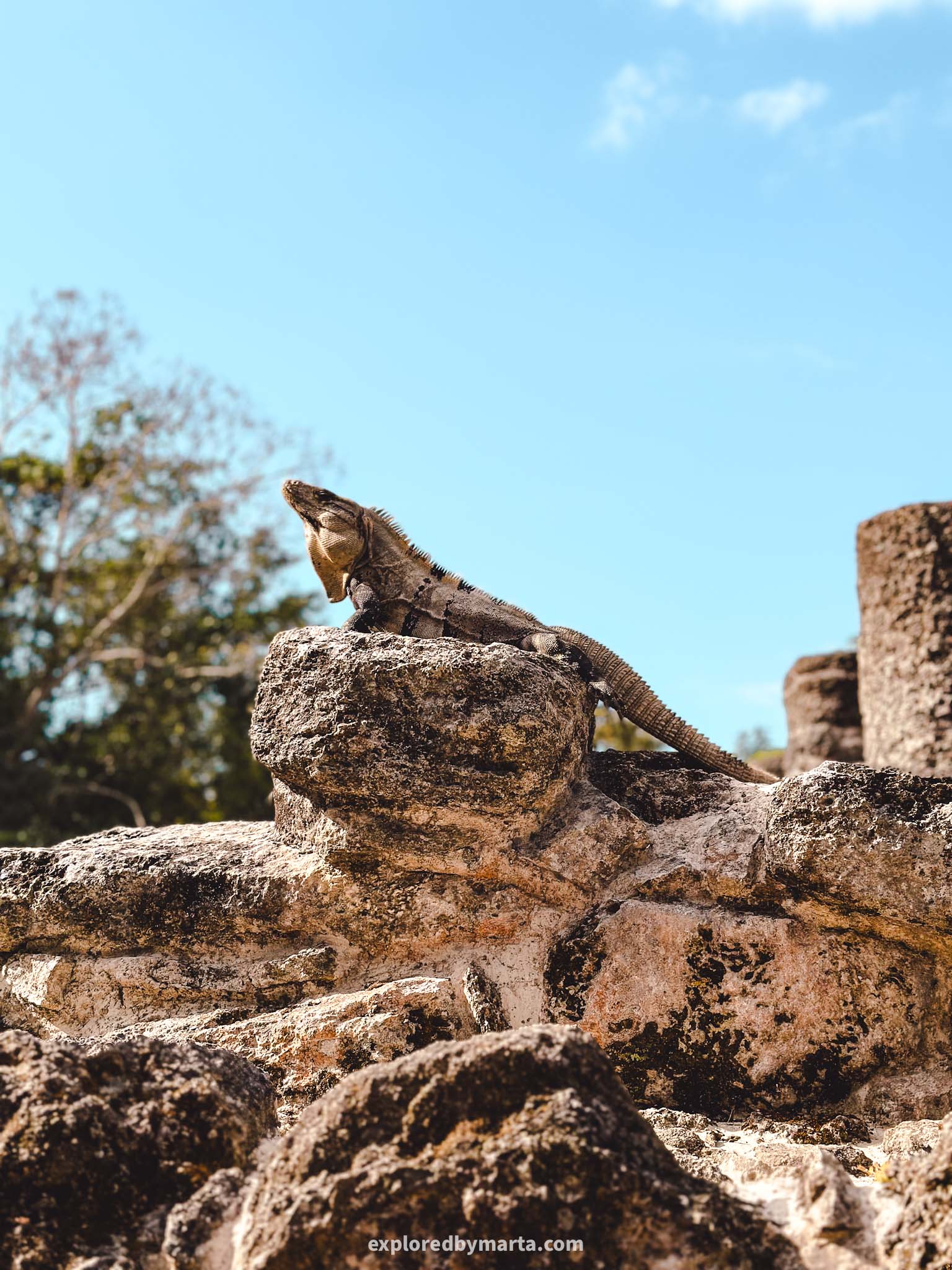
San Gervacio site was dedicated to the goddess Ixchel – the deity of midwifery and fertility – which ensured that many women from the island, as well as other Mayan settlements on the mainland, traveled to this site to make offerings.
One of the most impressive and best-preserved buildings in the San Gervasio Archaeological Zone is Nohoch Nah or the Big House (first photo). It is a temple that was dedicated to Kukulkan, the Mayan feathered serpent god.
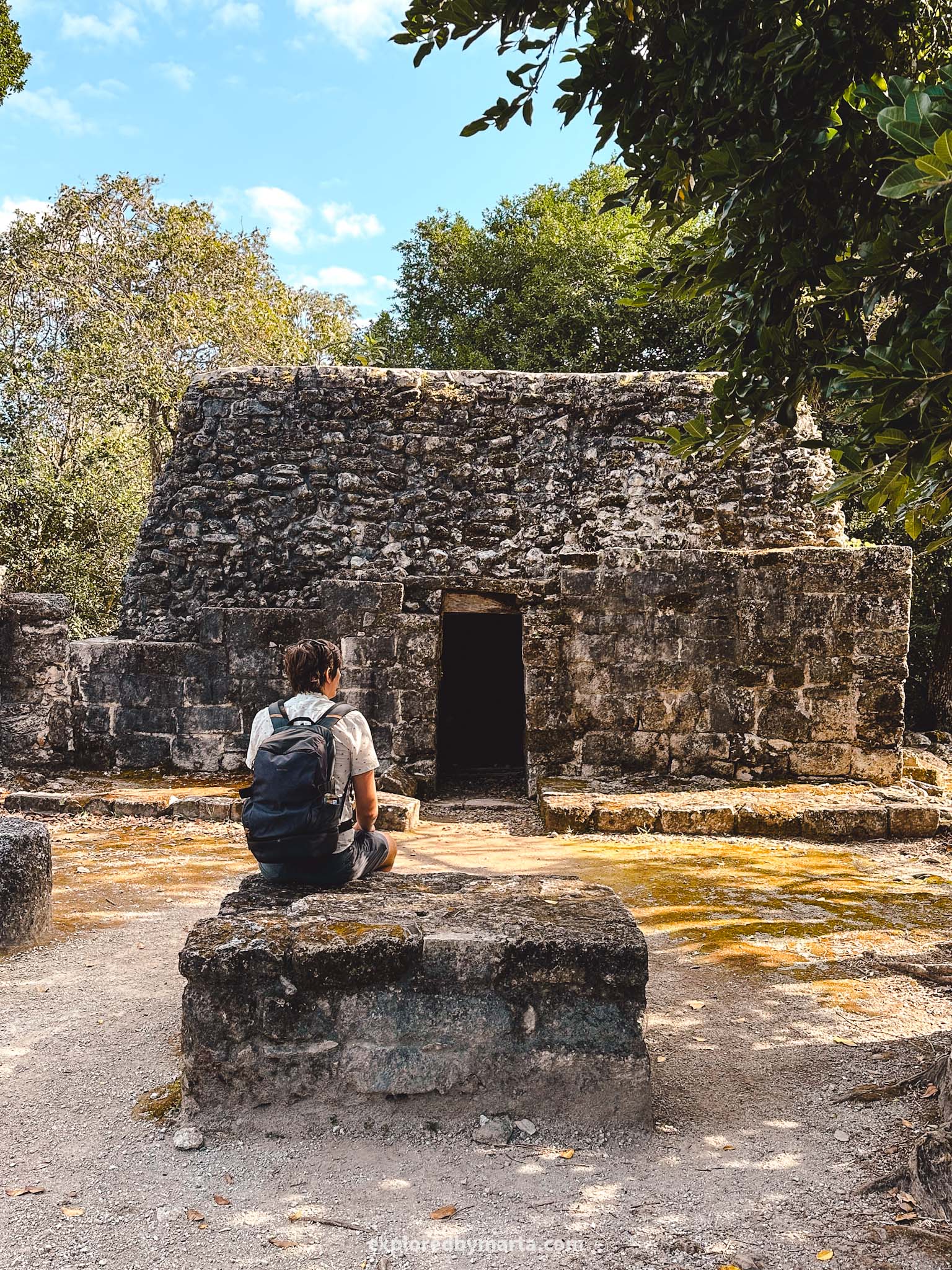
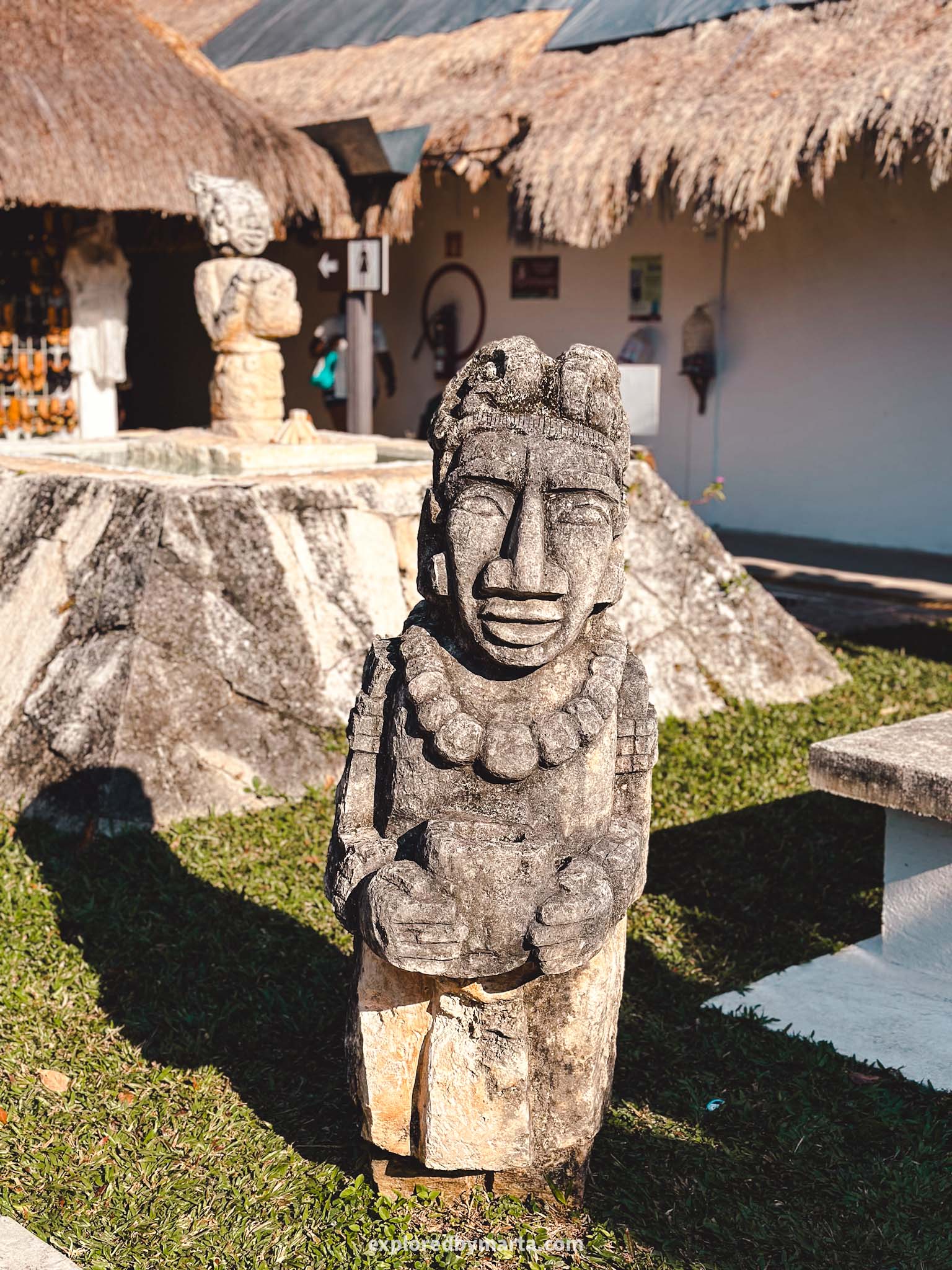
If you climb the stairs and take a look inside the Nohoch Nah temple you can still see the signs of a colorful mural on the walls of the temple. Most of the structures here date back to the period between the 11th and 16th centuries.
I also loved the Arch of San Gervasio which is situated on the main religious pathway called a ‘sacbe’ in Mayan and the cool Los Murcielagos building which was the residence of the Mayan ruler of Cozumel.
By the way, Cozumel features more Mayan ruins – El Caracol Archaeological Zone located inside the Punta Sur Eco Park in Cozumel. The Mayan ruins feature a tiny Mayan temple El Caracol (the snail) dating back to the 13th-16th centuries.
Location: San Gervasio Archaeological Zone
18. El Meco Archaeological Zone
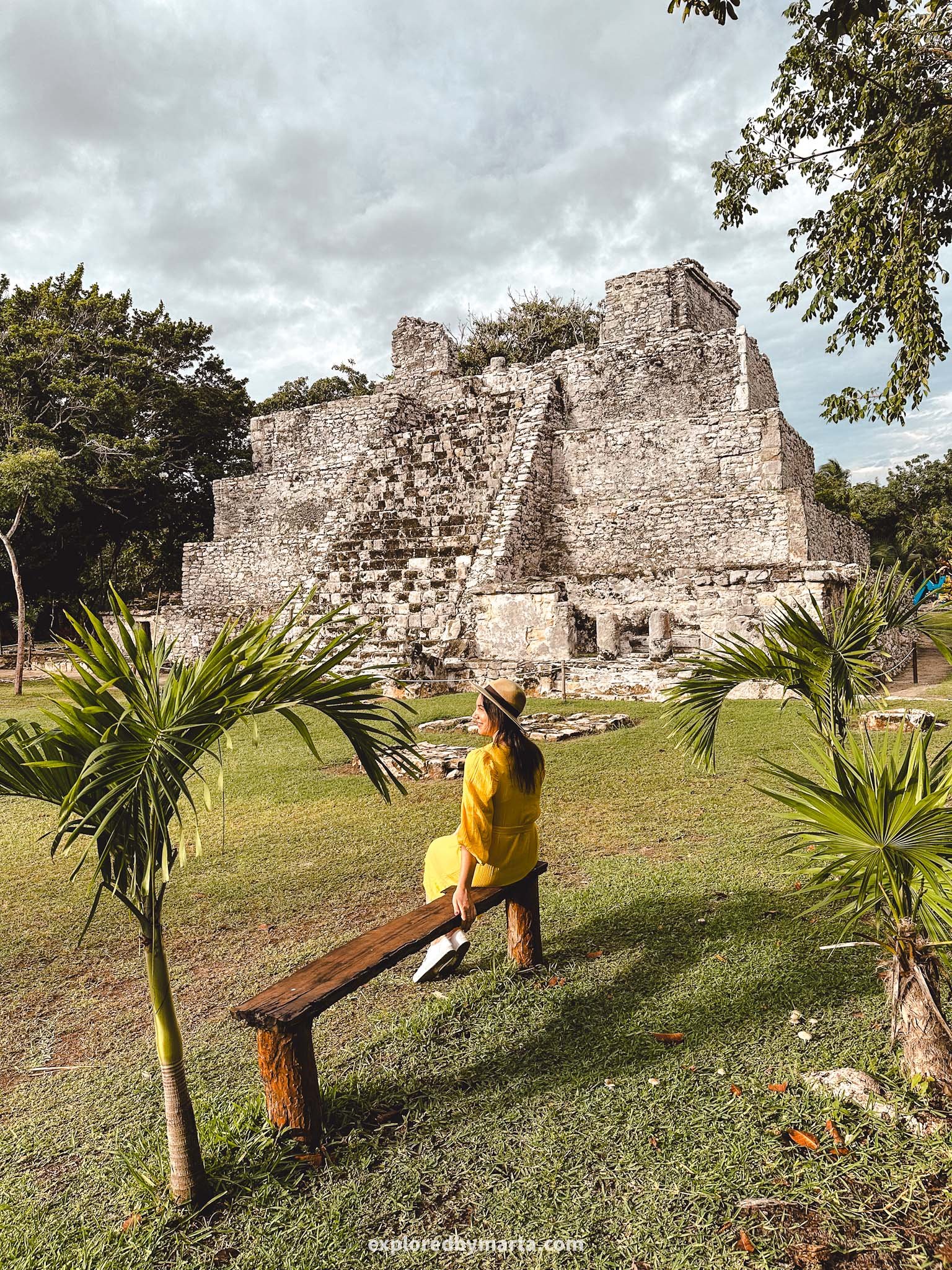
Did you know that there are archaeological sites in the Cancun area? One of them is the El Meco archaeological zone. It is a small Mayan ruin site a 10-minute drive away from Cancun downtown.
This archaeological site dates back to the 4th-7th centuries when it was a small Mayan fishing village but it was gradually abandoned during the next couple of centuries as people moved to live in other areas.

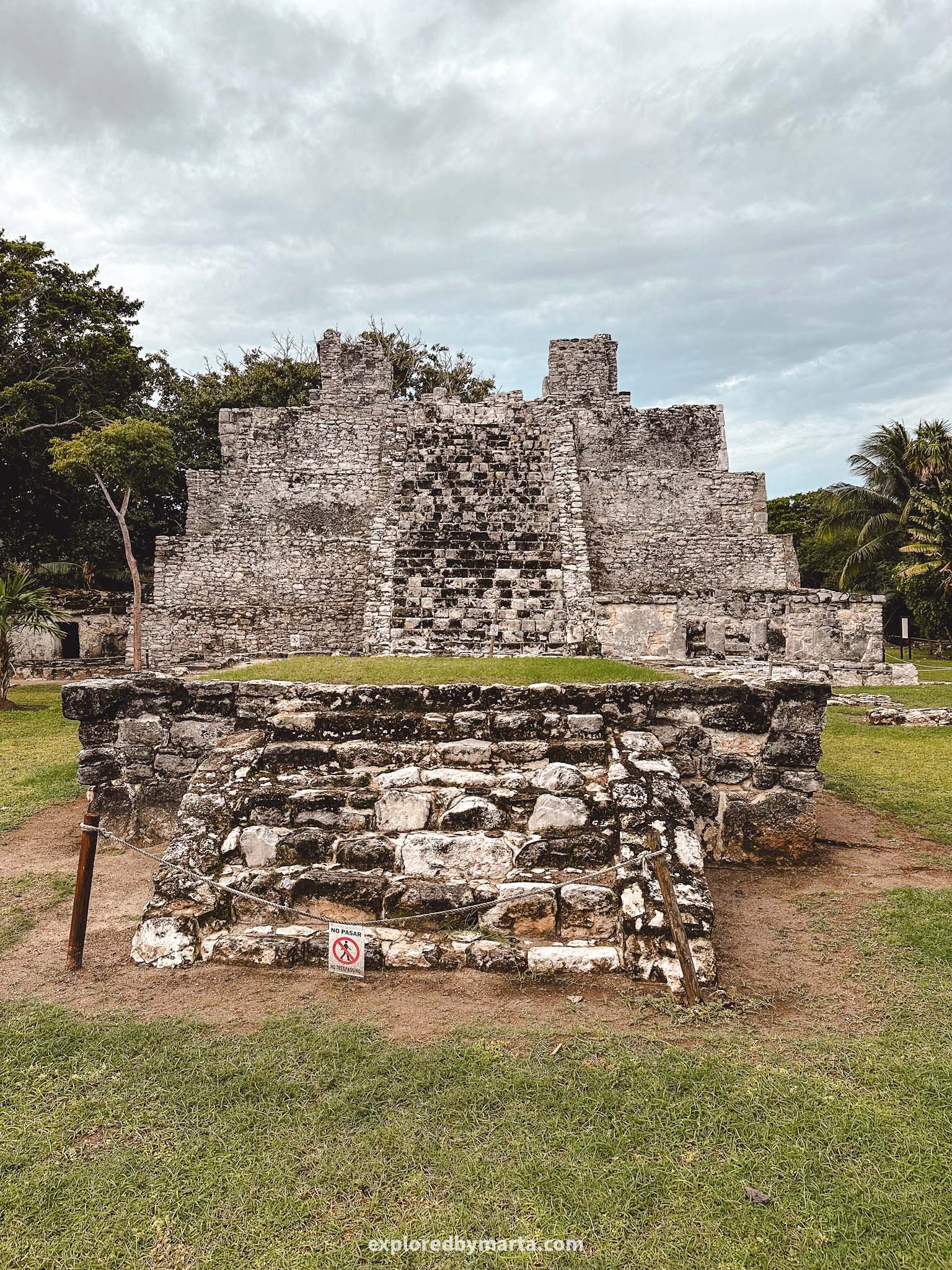
The highest structure in this archaeological zone is a beautiful temple that measures 12.5 meters high (40 ft). It does resemble a pyramid if you ask me.
We arrived at the El Meco Archaeological Zone by taxi from Cancun downtown. The site is full of curious iguanas and will take about 30 minutes to explore.
Not many people visit this site as it can’t compete with Chichen Itza or Coba but I liked it. It all felt like a little secret when walking around there all alone. If you have extra time before your flight, this is a cool spot to squeeze into your itinerary!
Location: El Meco Archaeological Zone
19. El Rey Archaeological Zone


Not many tourists know that there is a place to experience the history of ancient Mayans right in the heart of the Cancun Hotel Zone and it is the El Rey archaeological zone. This Mayan village dates back almost 2000 years.
However, most of the structures you see today were built between the 14th and 16th centuries. It is said that most of the Mayan people in this village worked in salt extraction and as fishermen.


The name of this place – El Rey – means ‘the King’ and comes from a sculpture that was found on this site and resembled a monarch. There are 47 structures in these Mayan ruins with some temples (but no pyramids).
El Rey archaeological zone is one of the smaller ones and will only take about 30 minutes to explore. If you are in nearby Cancun and have free time, this is a nice place to explore and see how the Mayans lived centuries ago.
Location: El Rey Archaeological Zone
20. Mayan ruins at Punta Sur in Isla Mujeres

Although there is very little left of the original Mayan structures, there are a couple of spots in Isla Mujeres where you can see real Mayan ruins. One of them (the most popular of all of them) is located in Punta Sur: Southernmost point of Isla Mujeres island.
Visiting Punta Sur is one of the top things to do in Isla Mujeres so this is usually a busy spot. Many tourists book tours or simply rent a golf cart or take a taxi to drive them around the tiny Mexican island. There is a small entrance fee to visit Punta Sur so bring cash with you!


While the popular Northern part of Isla Mujeres boasts sandy tropical beaches, the Southernmost part is the complete opposite. Punta Sur features rocky coastal cliffs, pathways along the water, a sculpture park with replicas of Mayan people as well as Mayan ruins – the Temple of Ixchel.
Although only fragments of the temple remain today, these Mayan ruins are historically significant. Mayans considered Punta Sur to be a sacred place so they built a a temple and dedicated it to the Mayan goddess Ixchel. The temple dates back to approximately 1200–1500 CE.
But I have to say, we didn’t come here for the ruins. Punta Sur is acutally known as the Easternmost point of the whole country of Mexico. Isla Mujeres is often regarded as ‘the sunrise of Mexico’ so it is a pretty iconic place to visit on its own.
Location: Mayan ruins at Punta Sur in Isla Mujeres
Bonus! Archaeological Site of Mayapan
If there is one thing to know about the archaeological sites in the Yucatán Peninsula it is that you have to make sure they are actually open before you travel there. Just open their location on Google Maps and look for the latest reviews!
It is not uncommon to see protests and blockades by locals or local organizations which result in these archaeological sites being closed. A couple of years ago they even closed down Chichen Itza and nobody could visit.
During our stay in Merida, we wanted to visit one of the most beautiful archaeological sites – Mayapan. However, due to the protests, it had been closed for many months. If you can, do check it out and pay a visit if it is open!
Location: Archaeological Site of Mayapan
Happy exploring!
Mexico’s Yucatan peninsula is one of the top travel destinations around the world. It offers a balanced mix of tasty food, tropical beaches, secret cenotes, ancient Mayan archaeological sites, and vibrant cities.
We have spent two winters or six months traveling around the Yucatán Peninsula, including the states of Yucatán and Quintana Roo, and exploring everything this beautiful peninsula had to offer.
From white-sand beaches to dark underground cenotes, and ancient pyramids – there’s just so much to see! I hope you enjoy your time there as much as we did and I hope you get some travel inspiration from this blog post for your travels! Happy exploring!
PIN FOR LATER!


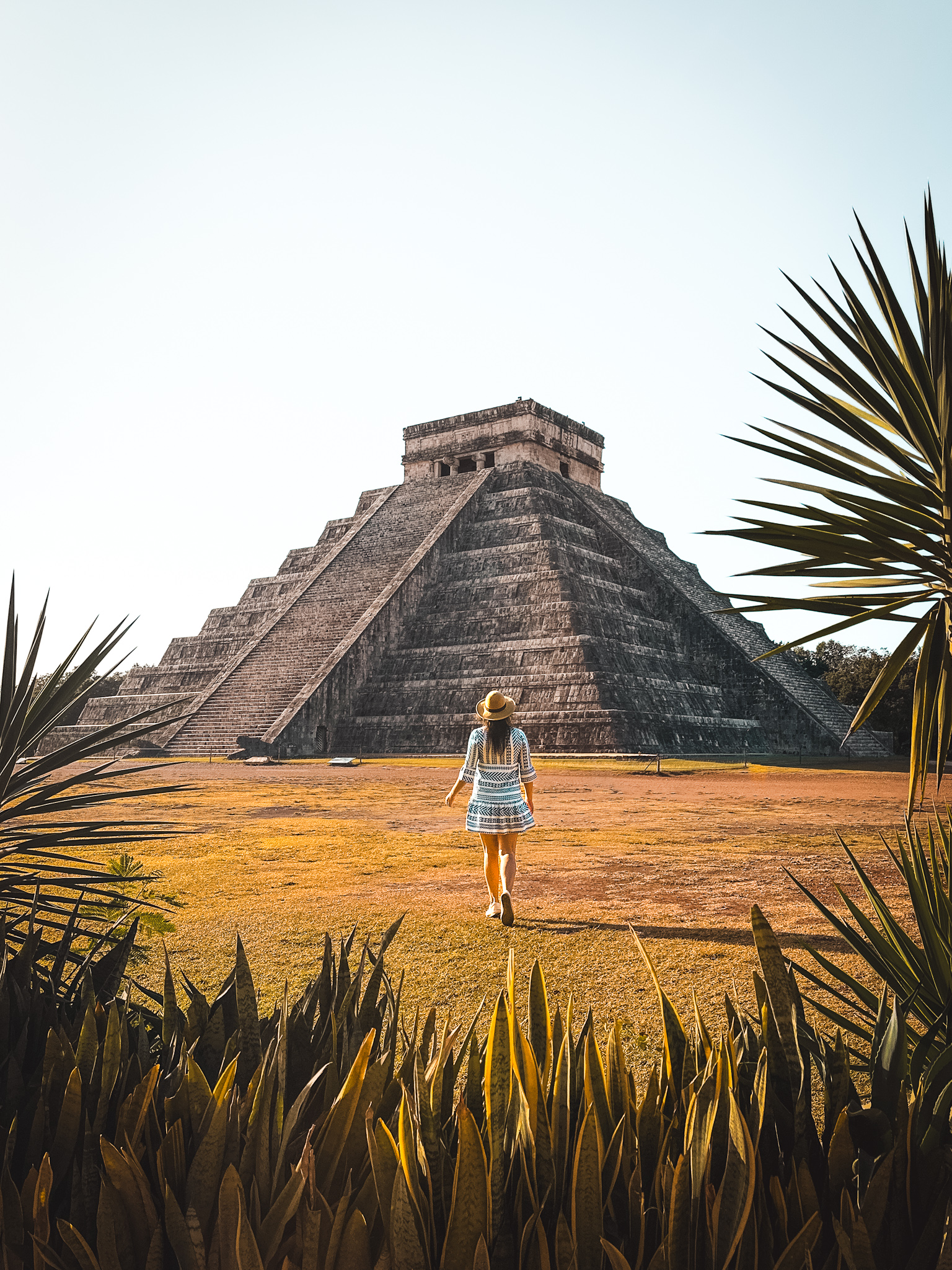
Very nice Yucatan report. I have been to several of these sites. I liked Uxmal for sure. I came across your review as my neighbor was asking about Mayan sites. I just wanted see more recent reviews than my travels 8-12 years ago. Vaya con Dios desde Texas.
thanks, David! We visited most of these sites this year. Uxmal was pretty impressive. Ek Balam was cool because you can climb the temples! But my favorite ‘hidden’ sites were in the South – Dzibanche and Chacchoben.
Loved the pictures and report! I’m curious, when did you visit the Maya sites? We’re planning a trip for the end of April to dodge the crowds.
Thanks, Marco! April should be great. We visited most of them between January and March. But because we stayed in Mexico for a couple of months we were able to plan our visits so that we arrive to the popular sites early before they open and beat the usual crowds (eg., Chichen Itza, Uxmal, Ek Balam) or shortly before the closing time when everyone was already heading to the exit (Coba, Muyil, Chacchoben). The last visitors are allowed to enter 1 hour before the closing time. Have a great trip!